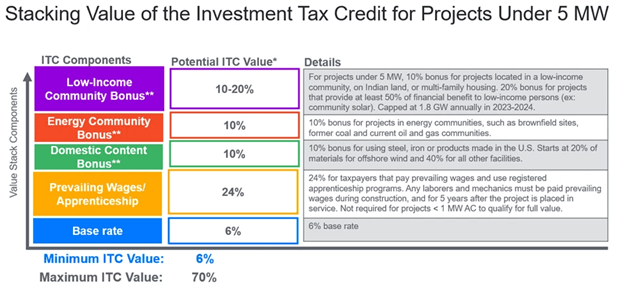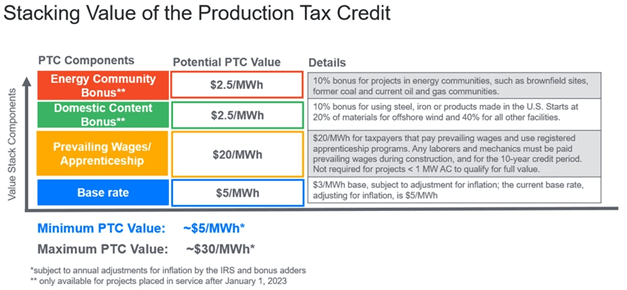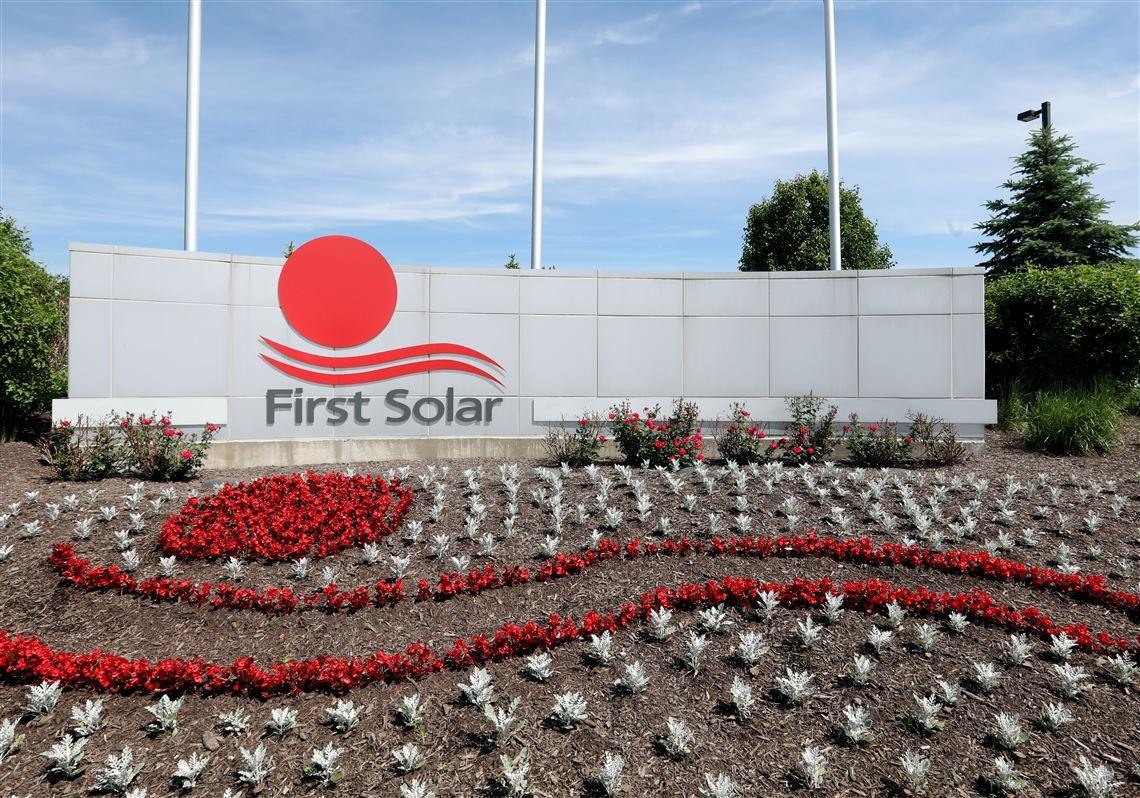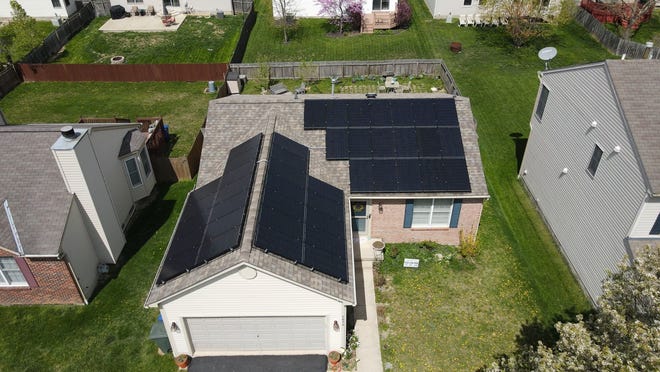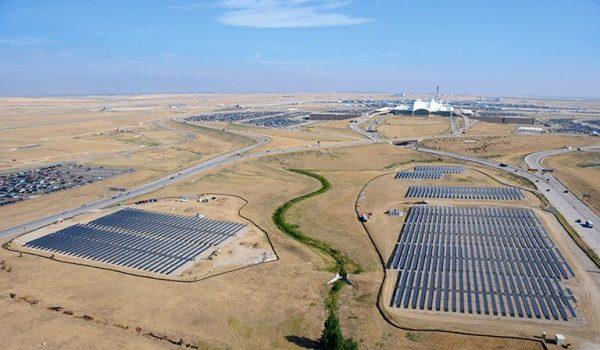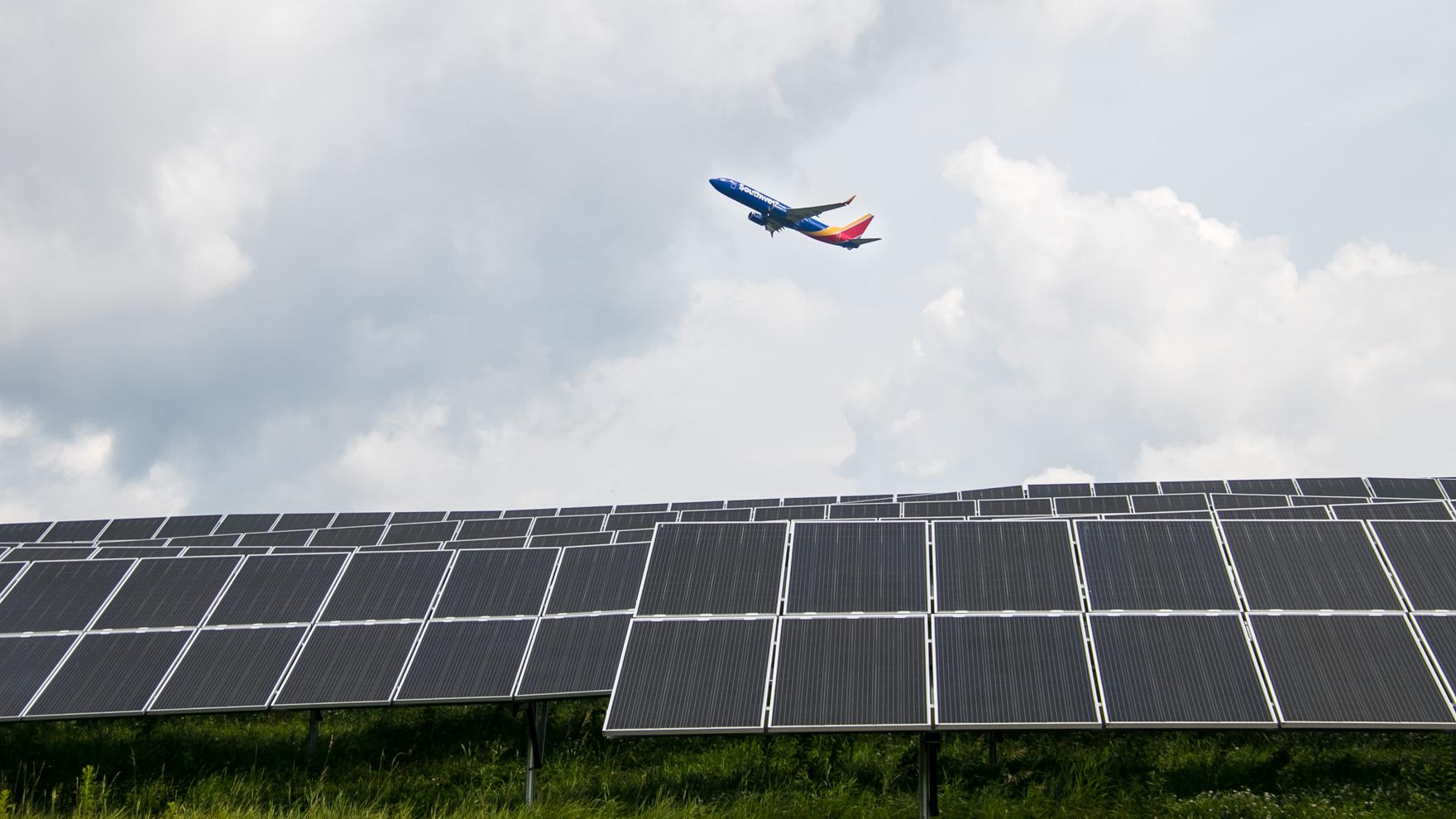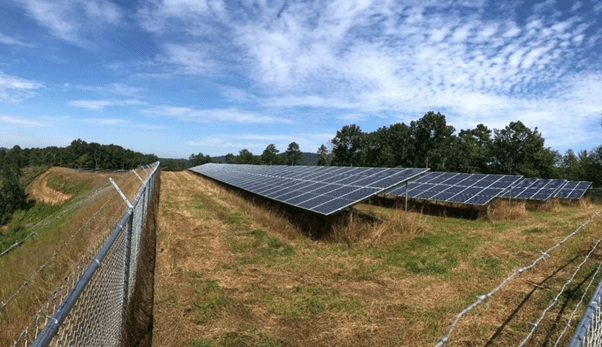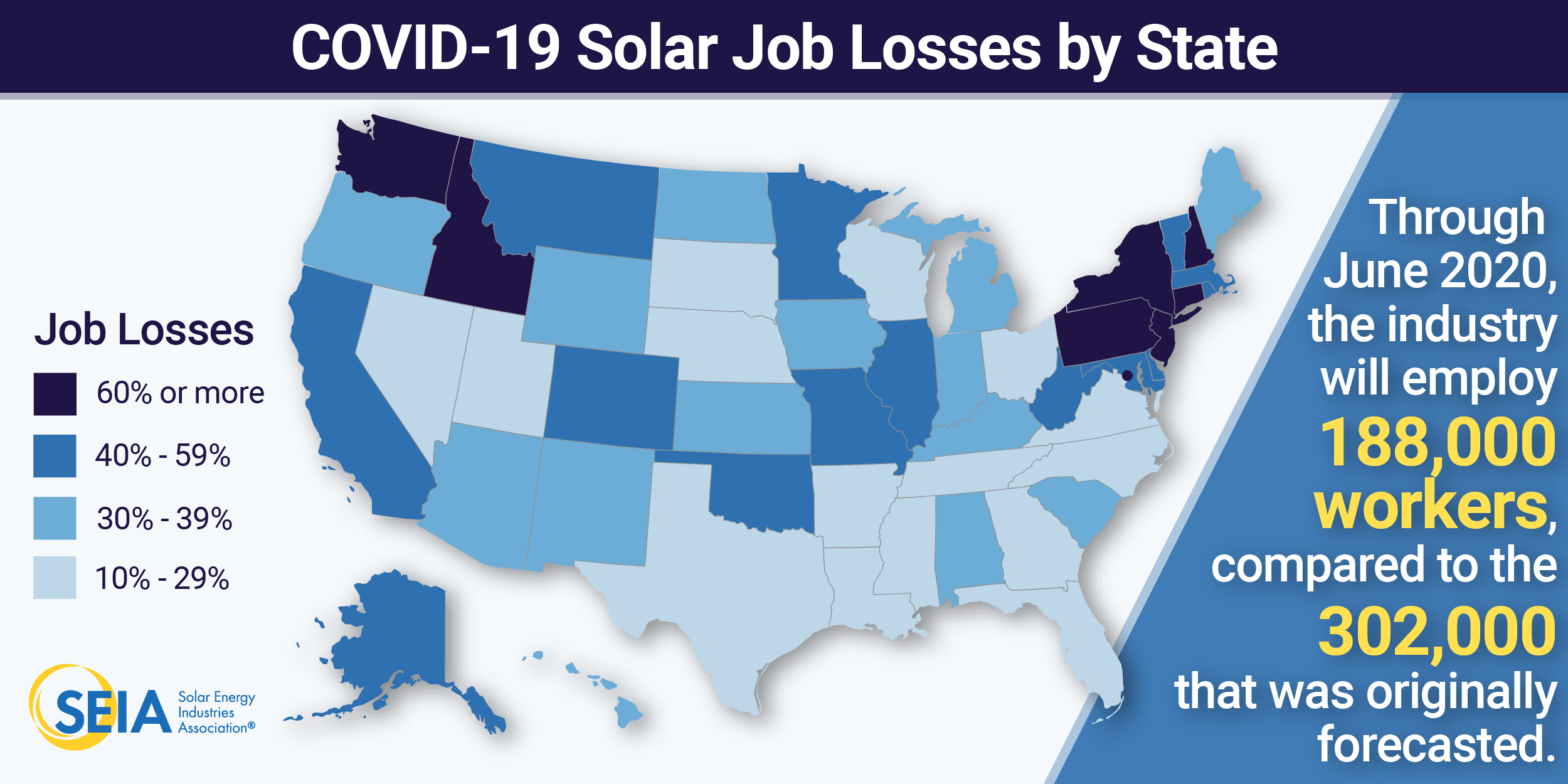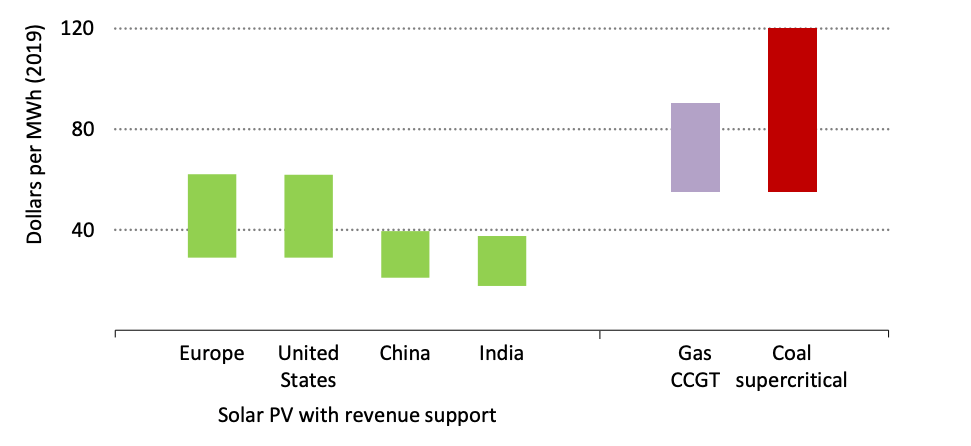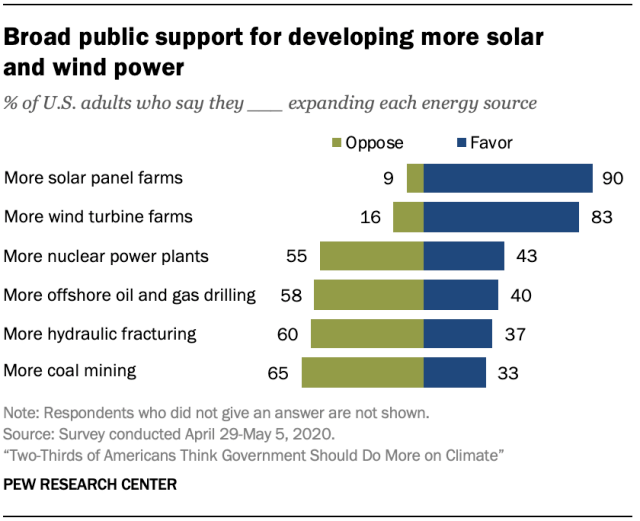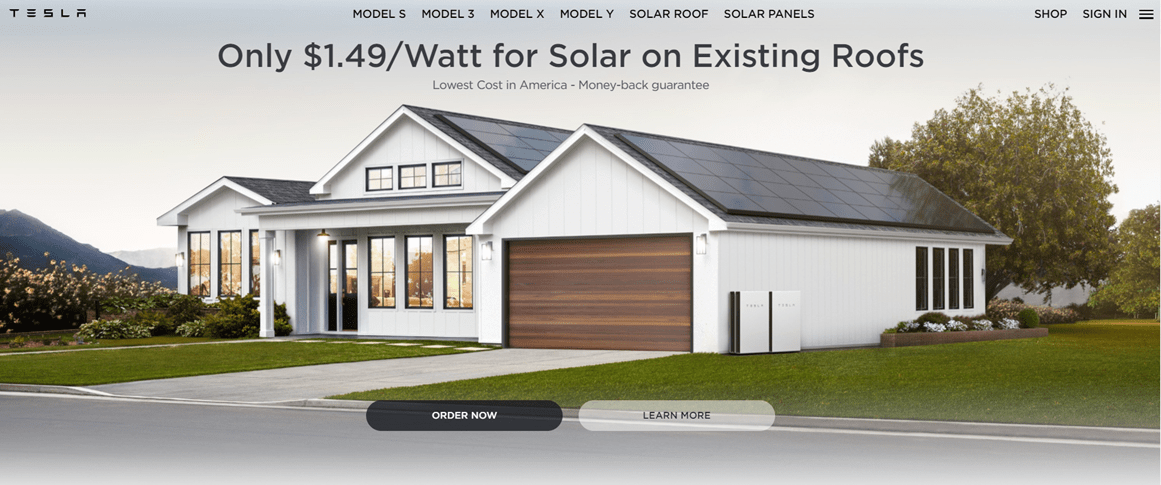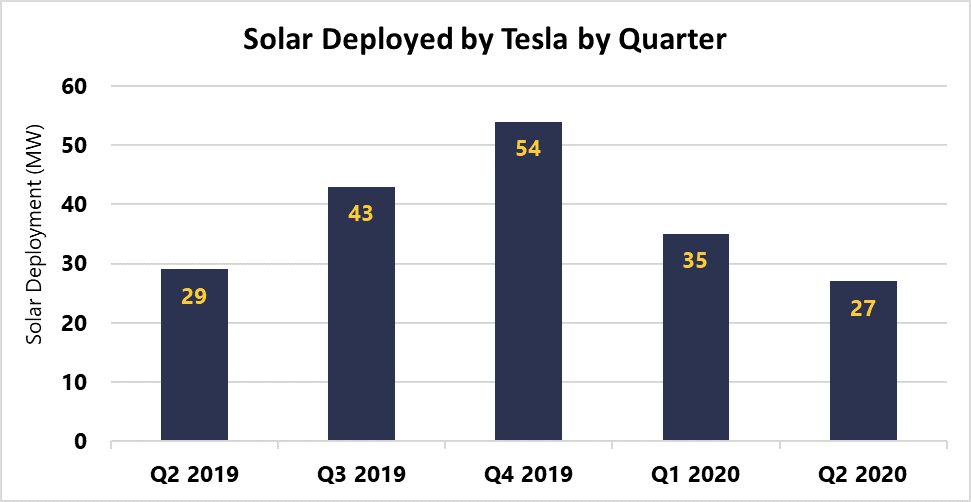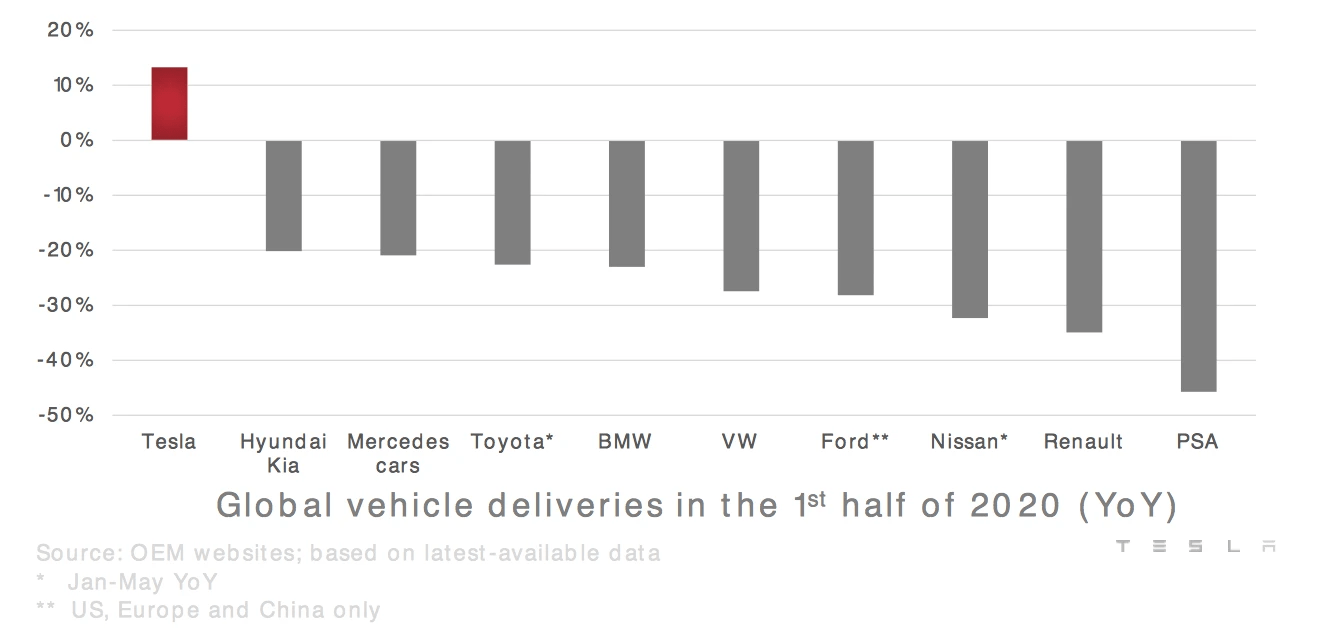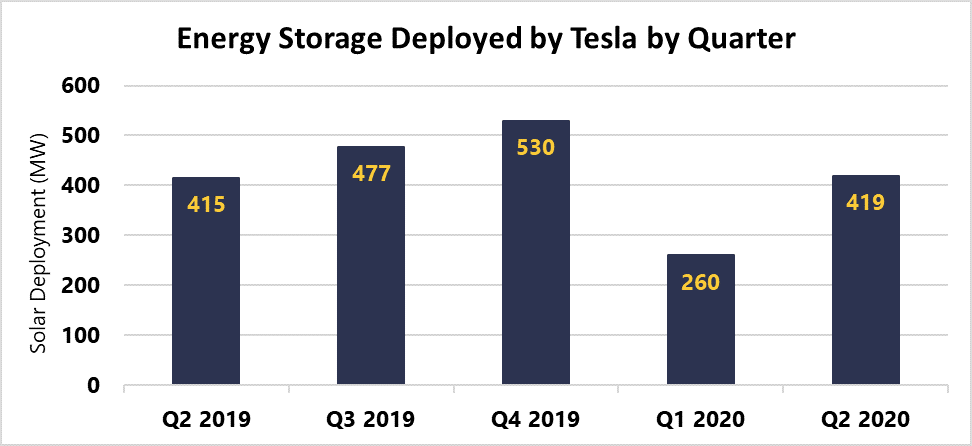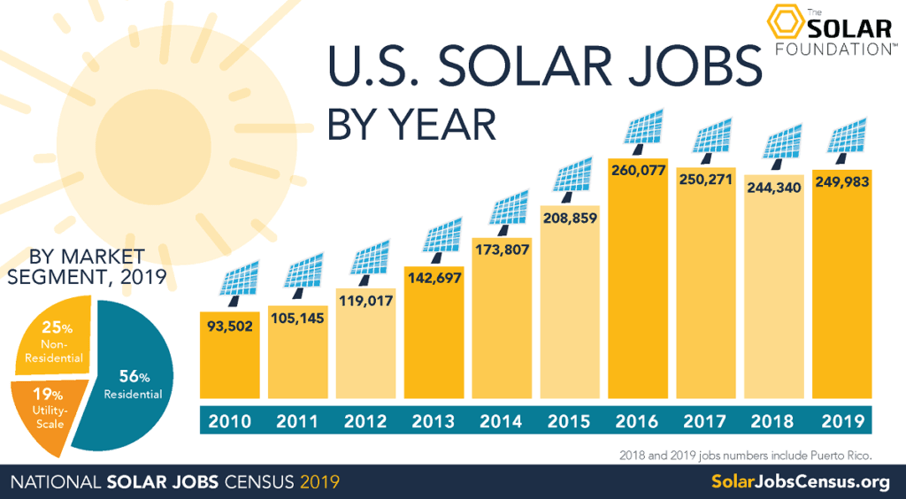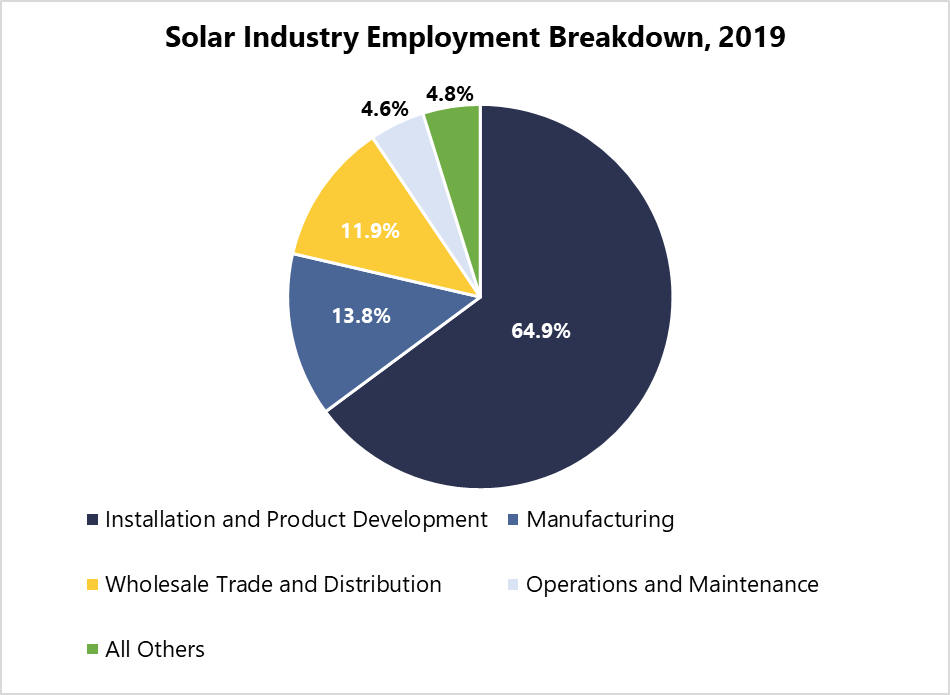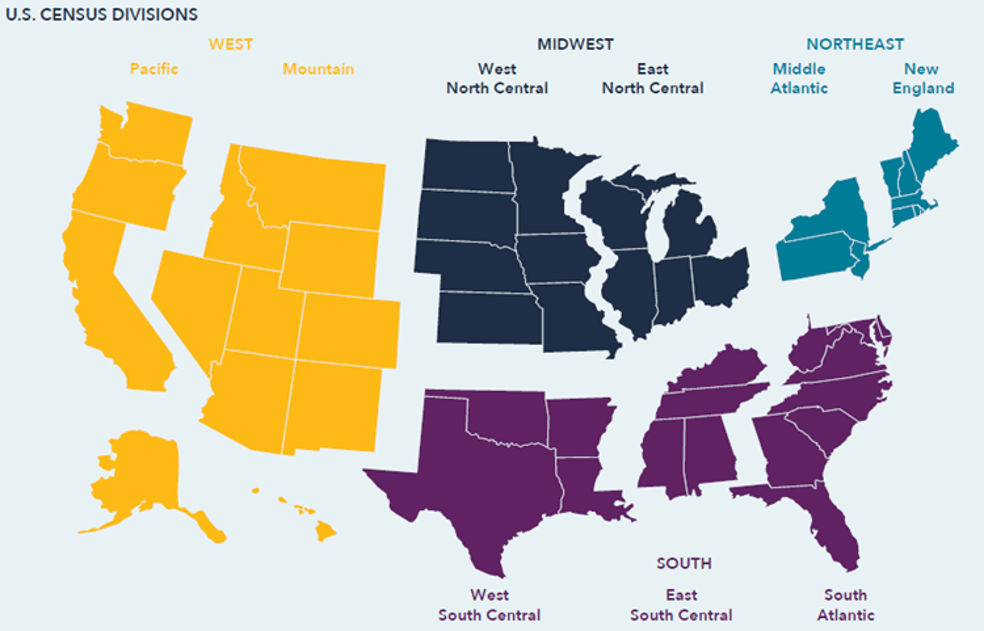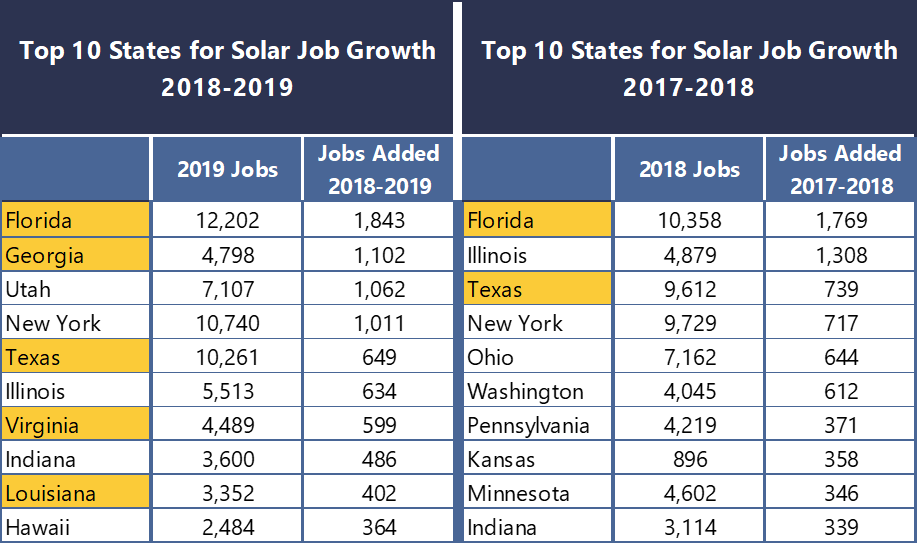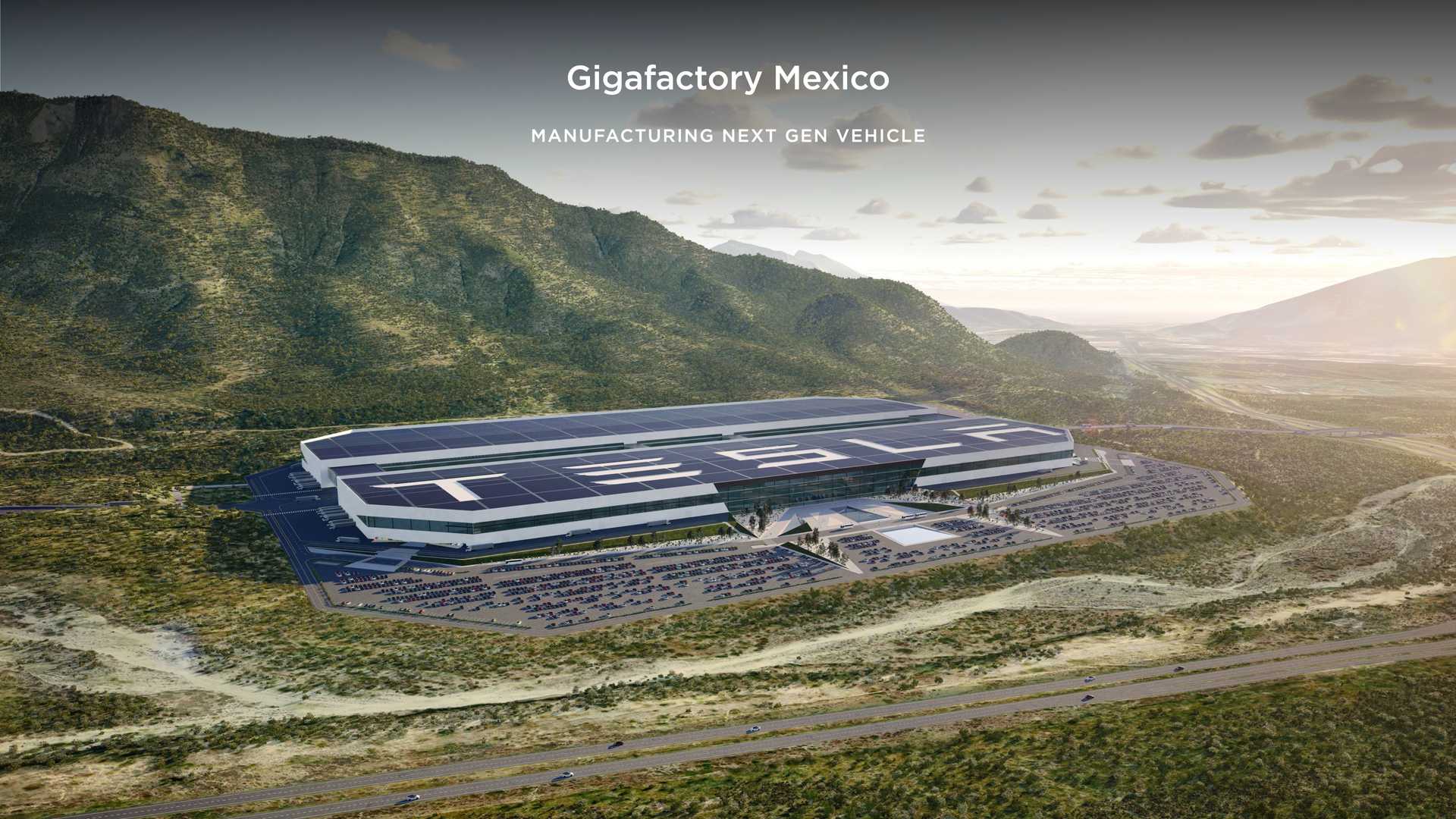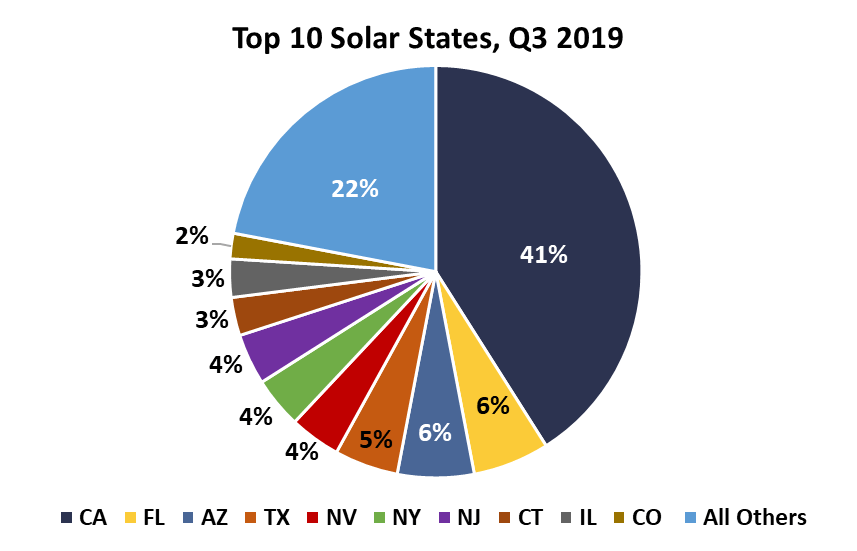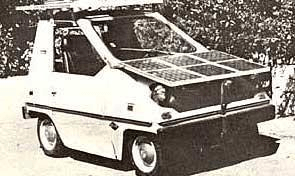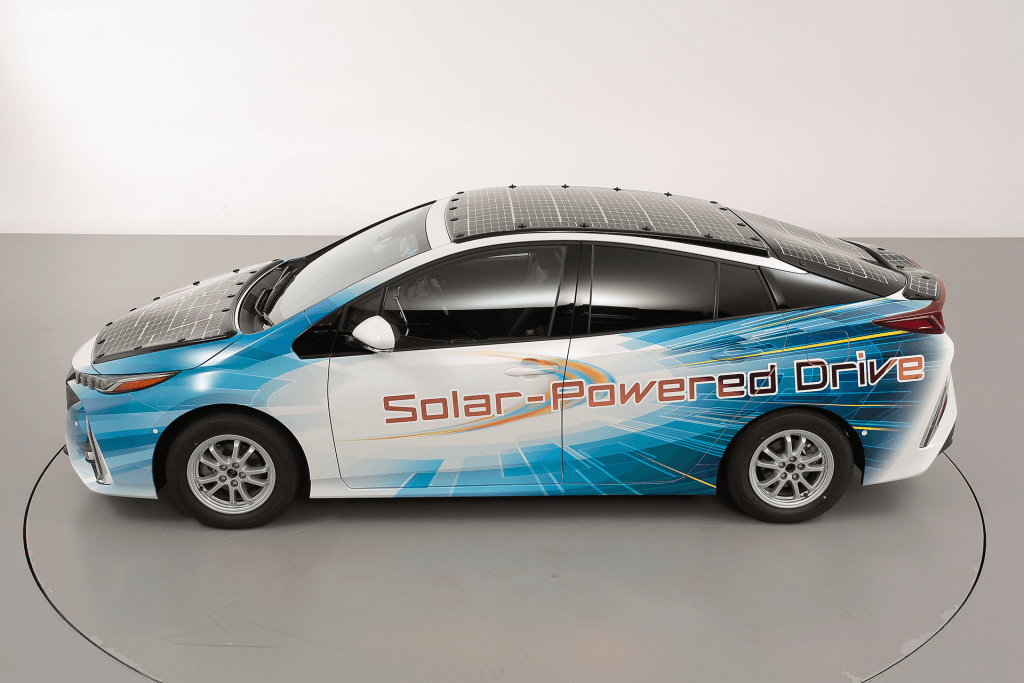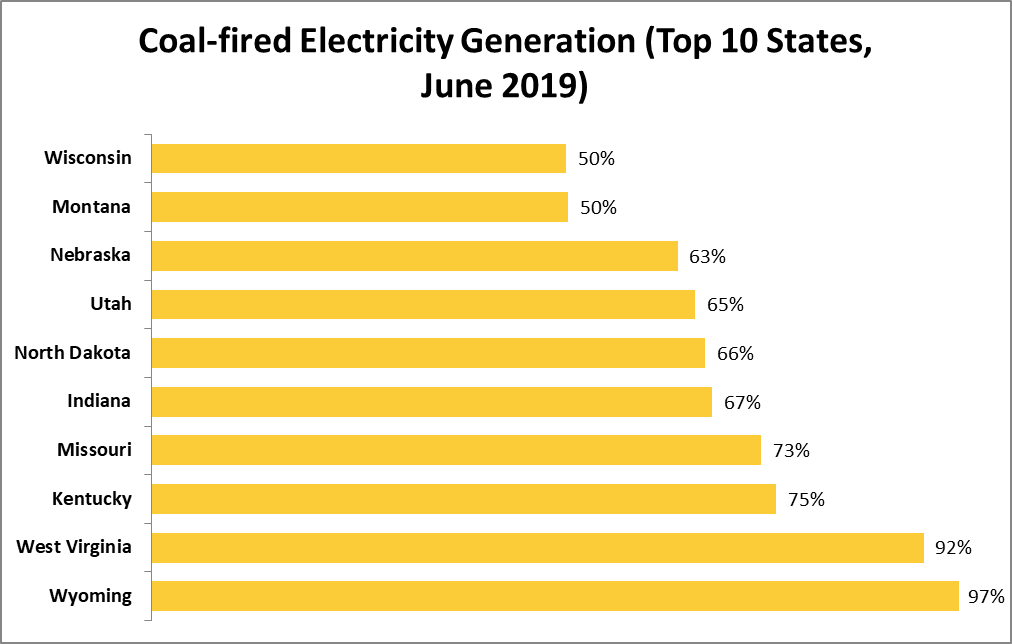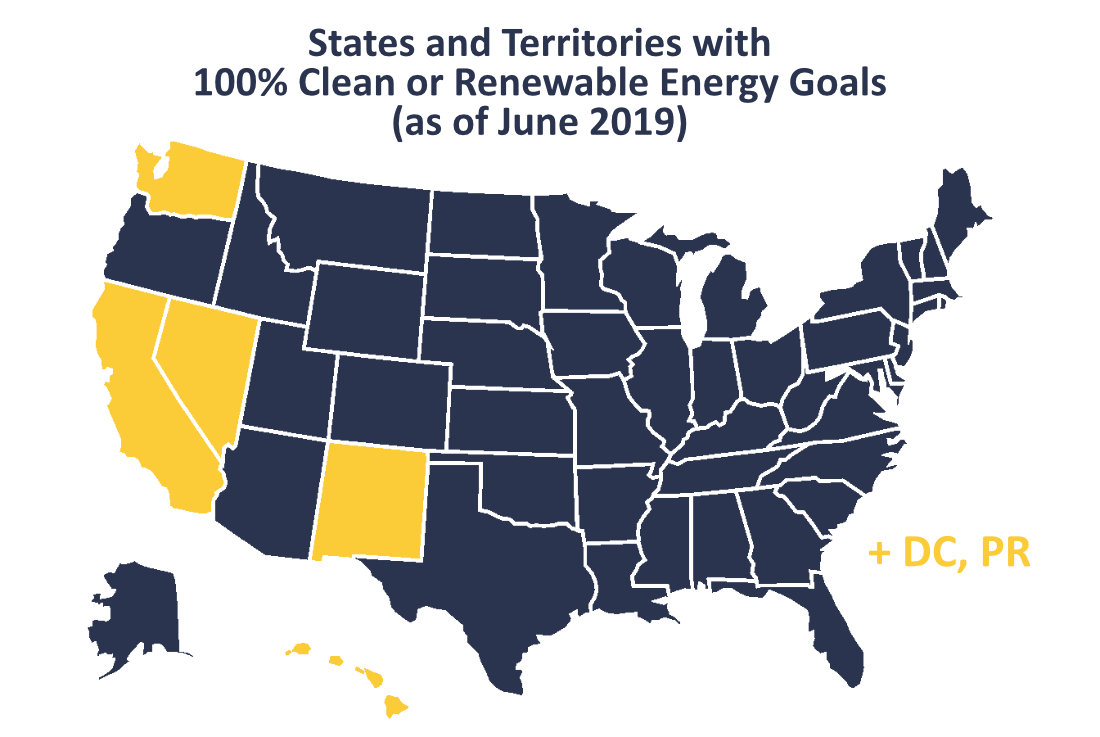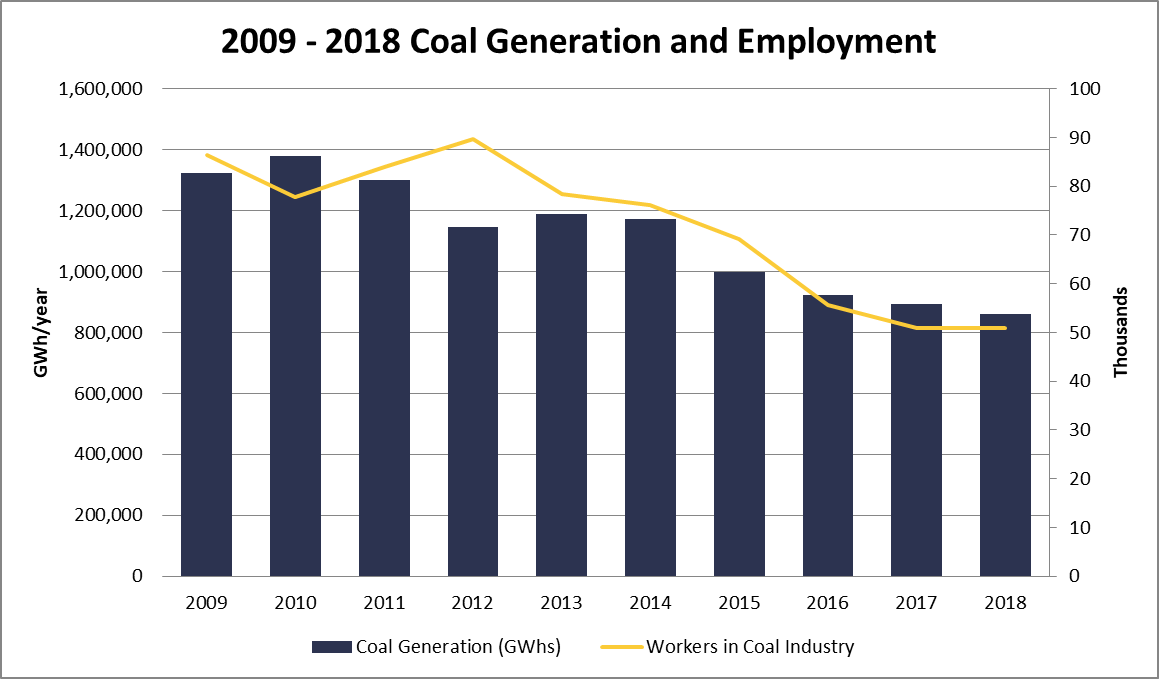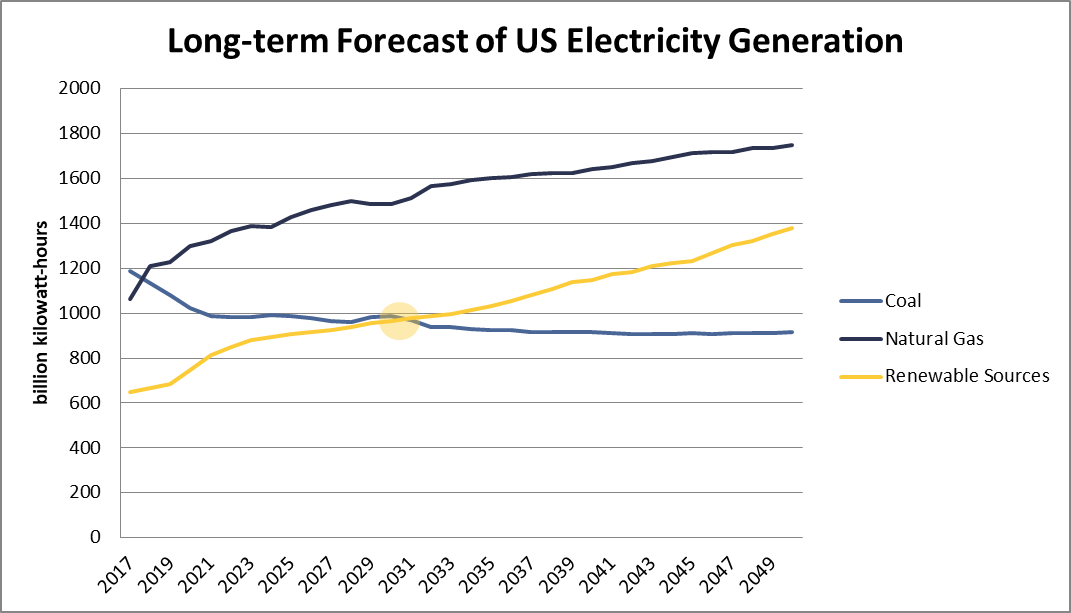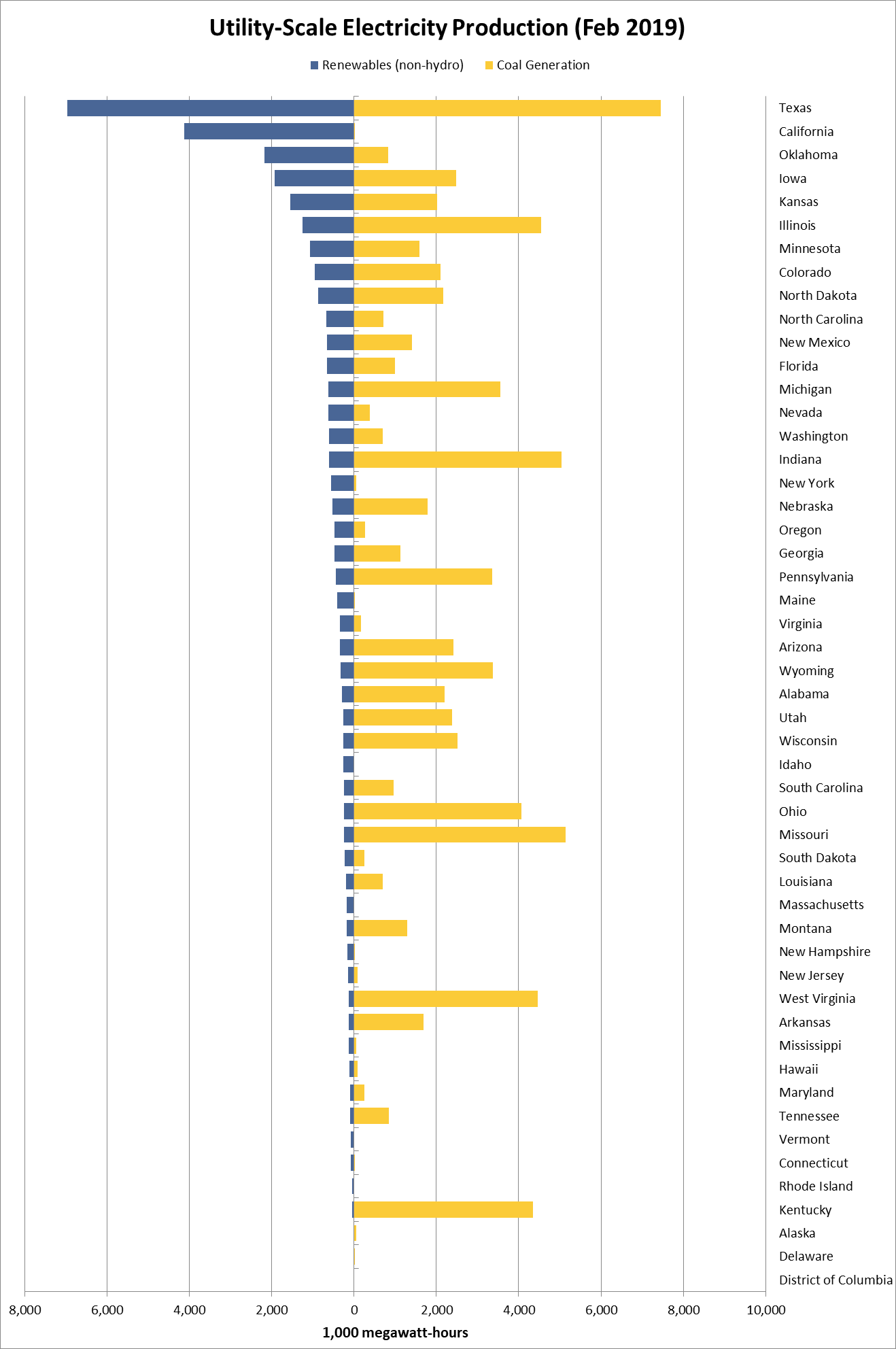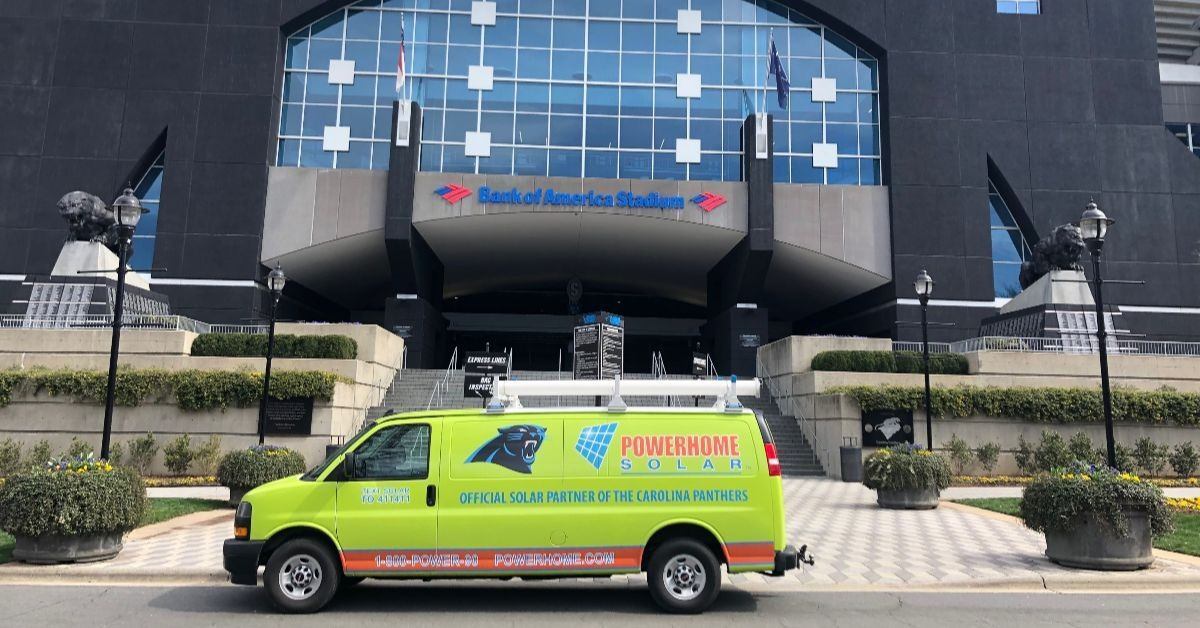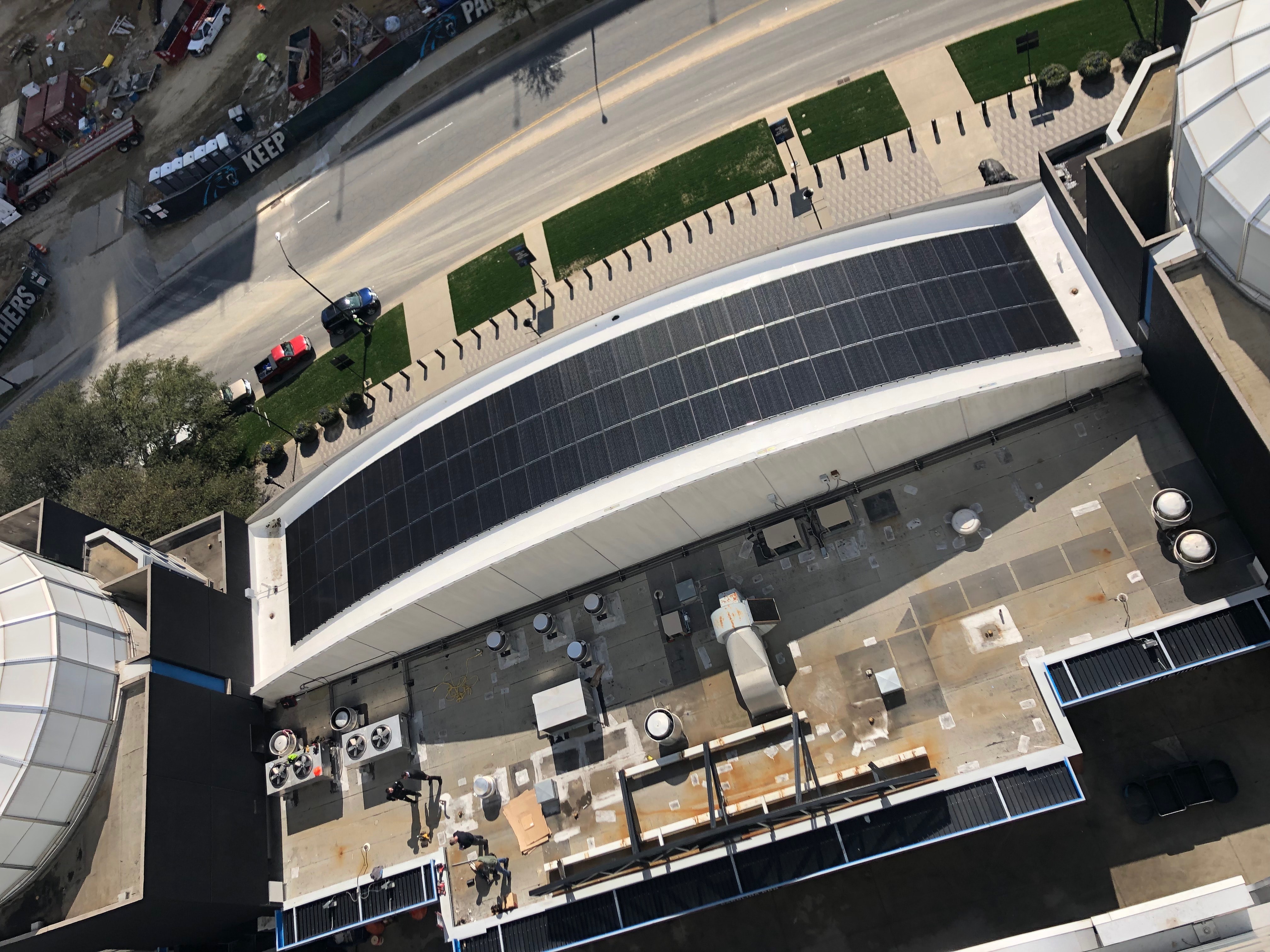The post Global Renewable Energy Capacity Surging to New Heights appeared first on Solar Tribune.
]]>
IEA Report Outlines Record Expectations for 2023
The International Energy Administration’s (IEA) mid-year Market Update released last month notes the historic growth in renewable energy generation expected this year and next. The agency ascribes much of the expected growth to pro-renewables policy momentum, high fossil fuel prices, and renewed concerns about energy security both arising from Russia’s now years-long war in Ukraine.
The report’s key findings include:
- Global renewable capacity additions are on pace to increase by 107 gigawatts (GW), the largest absolute increase ever, to more than 440 GW in 2023.
- Solar PV capacity accounts for two-thirds of this year’s projected increase in global renewable capacity.
- Cumulative global renewable energy capacity is on pace to reach over 4,500 GW by the end of 2024. This is equal to the total combined power capacity of the United States and China.
Wind & Solar Overtake Coal for the First Time Ever
The renewable energy sector’s historic global capacity growth isn’t the only positive news wave the industry is riding these days. According to analysis by E&E News, wind and solar combined to produce 252 terawatt-hours (TWh) in the first 5 months of 2023, eclipsing the 249 TWh produced by coal over the same time period. This marks the first time ever that solar and wind energy sources collectively outperformed coal over any consecutive 5-month period.
This symbolic milestone seemingly happened in the blink of an eye. Less than two decades ago, coal accounted for almost 50% of the United States’ total energy production. In 2007, coal production topped 1,171.5 million short tons – a record high. Those days now seem like a distant memory. The Administrator of the U.S. Energy Information Administration (EIA), Joe DeCarolis, stated earlier this year, “we expect that the United States will generate less electricity from coal this year than in any year this century.” Put more bluntly, Andy Blumenfeld, an industry analyst at McCloskey by Oil Price Information Service (OPIS) recently told E&E News, “from a coal perspective, it has been a disaster…The decline is happening faster than anyone anticipated.”
The pace of coal plant closures in the U.S. is only expected to accelerate as the economics of coal increasingly lose out to those of renewables. According to the Institute for Energy Economics and Financial Analysis, the U.S. is on track to close half of its coal-fired generation capacity by 2026, just 15 years after hitting its peak in 2011.
Will the Momentum Continue?
The decline of coal in the United States has been steady over recent years. The brief exception being in 2022 when global gas markets were roiled by Russia’s invasion of Ukraine, and the ensuing energy security concerns that forced many countries in Europe to rely on the “quick fix” of doubling down on coal plants.
The global pendulum has since shifted back on the heels of a mild winter in both Europe and the United States. A recent EIA report noted that 11 GW of U.S. coal capacity was retired from June 2022 to May 2023, and the agency anticipates there being 15% less coal-fired generation in the U.S. this summer compared to last.
Meanwhile, the momentum being experienced by the solar and wind industries is expected to swell even further. According to the EIA, the U.S. electric power sector added an estimated 14.5 GW of solar generating capacity and about 8.0 GW of wind capacity during the 12 months ending May 31, 2023. The EIA expects solar generation to increase by 24% (10.8 TWh) this summer versus last summer, which beats the expectations for every other energy source.
A confluence of world events, policy decisions, and economics have combined to put the solar industry on stable footing around the world. On the latter point, solar PV costs have fallen a remarkable 76% since 2010 according to the Lawrence Berkeley National Laboratory.
The summer’s sweltering heat reminds us of the urgency to address the global effects of climate change. The growing prominence of solar energy in the global energy landscape coupled with the continued decline of the emissions-heavy coal industry offers hopeful signs for the future.
Cover Photo Source: Syracuse.com
The post Global Renewable Energy Capacity Surging to New Heights appeared first on Solar Tribune.
]]>The post IRA Passage Ushers in New Era of Stability for Solar Industry appeared first on Solar Tribune.
]]>
How Will the Solar Industry be Impacted?
The IRA is chock full of measures to advance the country’s decarbonization goals, including incentives to spur innovation and further growth in the clean energy sector. The solar industry stands to potentially be one of the biggest beneficiaries of the bill’s passage. Here’s a high-level overview of the primary solar incentives in the bill that will give the industry a major jolt in the arm:
- The bill restores the 30% federal Investment Tax Credit (ITC), extending it for another 10 years. This policy certainty has long evaded the solar industry as Congress has made a habit of fiddling with the ITC and driving boom-bust cycles with their last-minute decision making. Energy storage technologies are now also eligible for the ITC.
- For the first time, solar projects will now also be eligible for the Production Tax Credit (PTC). Unlike the ITC which offers a one-time tax credit for project investors, the PTC is tied to the power that a renewable project generates over 10 years.
- Additional add-on tax credits can be applied to the ITC and PTC. There are an array of additional “bonus” add-ons that can be stacked together to create an especially lucrative financial incentive. These add-ons seek to encourage more solar projects to locate in low-income communities and in formerly coal-dependent communities, in addition to encouraging sourcing materials from domestic suppliers and paying prevailing wages for project workers. The graphics below show the myriad of add-on components of the ITC and PTC and their significant cumulative value.
The various pro-solar initiatives baked into the IRA have already led to a boon in domestic manufacturing, as leading solar companies make renewed commitments to bring solar manufacturing jobs to the United States.
First Solar, the largest solar panel manufacturer in the U.S., announced in late August that they will invest up to $1.2B to expand solar panel manufacturing capacity in the country. About $1B will go towards a new facility to be located in the Southeast, which will employ hundreds and begin operations by 2025. An additional $185M will go towards expanding production capacity at the company’s existing factory in Ohio.
SPI Energy, a PV project developer and EPC firm, announced just days after the passage of the IRA that they intend to secure 1.5GW of solar wafer manufacturing equipment for a new U.S. production facility. The company is targeting delivery and production of 1.5GW of solar wafers production capacity by 2023, with plans to double that capacity by 2024. This will be the first silicon wafer facility based in the U.S. in nearly a decade’s time.
European PV Hardware, one of the largest solar tracker providers in the world, also announced recently plans to bring a 6 GW factory to Texas that will be operational by next year. Q Cells is also poking around states as it scouts a location for a nearly $2B 9 MW module manufacturing facility.
These recent investments are just the tip of the iceberg, according to the Solar Industry Energy Association (SEIA). SEIA foresees an avalanche of additional solar manufacturing investments coming to the U.S. in coming years:
“As a direct result of the IRA, we expect to see significant new investments in domestic solar module, tracker, inverter and racking capacity within the next 2-3 years, followed by new investments in solar ingot, wafer and cell capacity within 3-5 years. By the end of the decade, the IRA will be instrumental in ensuring the U.S. solar industry meets its goal of 50 gigawatts (GW) of domestic solar manufacturing capacity across all key industry segments by 2030.”
Burden for Success Shifts to States
The passage of the IRA has brought renewed enthusiasm to climate activists and renewable energy enthusiasts who now see a much more feasible path forward to meeting climate goals. Lost in the euphoria, however, is the fact that while the federal action is indeed historic and desperately needed, it is not an instantaneous cure-all. States, municipalities, and utilities will play an outsized role in maximizing the true potential of the IRA.
The shear scale of new renewables capacity required to be developed in the U.S. in order to meet climate targets is significant. This presents an opportunity that is both exciting and daunting. In a recent guest article for Forbes, Senior Policy Expert for Energy Innovation’s Power Sector Transformation team, Daniel Esposito, points out in stark terms just how much the status quo will need to be upended in order to maximize the full potential of the IRA:
“The U.S. must build roughly 100 gigawatts (GW) of wind and solar capacity annually through 2030 to hit its climate targets, but it developed just 28 GW in 2021. More than 920 GW have applied for grid interconnection, but most projects drop out when faced with insurmountable transmission upgrade costs that have many “free-rider” beneficiaries. Successful ones languish for years waiting for approval.”
The traditional process of getting solar projects approved is overly bureaucratic, time-consuming, and far from streamlined. As noted by Esposito, there are a number of prominent challenges that the industry has historically faced that will need to be addressed so as to not impede the IRA’s plans to drastically increase renewables capacity.
- Patchwork permitting process: solar projects have long been plagued by a disjointed permitting process that differs – often significantly – from county to county. The lack of uniformity adds time and uncertainty to projects, both of which can be debilitating. The worrisome trend of solar farm moratoriums that are sprouting up across the country is not helping matters either.
- Interconnection issues: The time that solar projects spend in interconnection queues is increasing. These queues are a byproduct of the various impact studies that utilities and transmission system operators require before a project can be greenlighted. According to a report from the Lawrence Berkely National Laboratory of all energy projects, “the typical duration from connection request to commercial operation increased from ~2.1 years for projects built in 2000-2010 to ~3.7 years for those built in 2011-2021.”
- Transmission access: Solar companies can build out as much solar capacity as they want, but all will be for naught without improvements and extension of the electric grid, all of which has a long-time horizon.
The common denominator to all of the above is time. These time-consuming hurdles to solar project development and grid connection threaten so much of the ambitious plans set forth in the IRA.
There is another omnipresent threat to the success of the IRA in ramping up renewables deployment – politics. A lot of the models predicting that the IRA will help to rapidly expand renewable capacity in the country are based on economic models that fail to account for political differences among the states. In many states, state utility commissions play an outsized role in determining how much renewable energy capacity to incorporate into the grid. While solar capacity is growing off the charts in this country, there are still many states where the fossil fuels industry has commanding influence over the state legislators and utility commissions that will dictate how much of the pro-renewable initiatives in the IRA will actually happen in their respective states.
Lest we forgot the recently decided Supreme Court case West Virginia vs. EPA where a bevy of Republican-led states and fossil fuel companies successfully sued to block the EPA’s ability to regulate carbon dioxide emissions related to climate change.
It is worth pointing out that the IRA was signed into law strictly along party lines with no Republican support for the bill. As such, ambitious Republican state elected officials will see little political incentive to go to the mat to take advantage of the pro-renewables initiatives in the IRA given the political exposure they would open themselves up to during a primary campaign.
Even so, there is reason for optimism. The economics of solar and wind energy continue to improve by leaps and bounds with each passing decade. The IRA is loaded with incentives that will continue to bend the cost curve down, and most importantly, that establish a degree of certainty that has long eluded the renewable energy industry. Bi-partisan advocacy organizations like the U.S. Climate Alliance, led by Red-state and Blue-state governors alike, have only hardened their resolve to make sure that the benefits of renewable energy flow to every corner of this country in the wake of the IRA’s passage. There are clear challenges to implementation for sure, but the solar industry has proven itself to be resilient time and time again, and we are confident that key industry players will rise to meet the moment.
Cover Photo Source: ADT Solar
The post IRA Passage Ushers in New Era of Stability for Solar Industry appeared first on Solar Tribune.
]]>The post Rooftop solar: Good for the economy, good for the grid appeared first on Solar Tribune.
]]>Solar continues to create jobs, investment, economic development and grid resilience while reducing energy costs for utilities, businesses, industry and consumers. It reduces the environmental impact on air, water and carbon. And amazingly, it can be placed atop your house.
Guest Post by Tim Echols, Originally posted in the Athens Banner-Herald
Tim Echols is Vice-Chair of the Georgia Public Service Commission.
Georgia is a national leader when it comes to solar energy. It began in 2013 with who I call the solar trifecta: Commissioner McDonald, the late Commissioner Doug Everett and yours truly.
The Georgia Public Service Commission created a solar framework and compelled Georgia Power to move forward on solar at scale, and the program has been wildly successful, helping Georgia rank in the top 10 states nationally for total solar installed – but that doesn’t tell the whole story.
More about the topic: Georgia Power plan ends coal, but doesn’t do enough for efficiency, climate, critics say
Solar Panels on a house in Galloway. Solar United Neighbors
While most of that growth has been large-scale solar installations, the next frontier in solar includes significant opportunities for Georgia to build on our success and become a leader in small-scale and rooftop solar, too. Let me explain.
The value of solar systems
In 2019, I offered a motion to our tri-annual rate proceeding with Georgia Power to create a monthly “net metering” pilot program for 5,000 Georgia Power customers.
Net metering is a crediting policy that makes rooftop solar much more affordable, by allowing customers to use all their homegrown solar on-site to meet their energy needs before buying electricity from their utility. It reduces the payback period by about a third as well.
Simply put, if a customer doesn’t have additional electricity needs while their solar panels are producing, the electricity is pushed back onto the utility’s grid. With net metering in place, that electricity is banked each month. At the end of each monthly billing period, the exported electricity produced on-site is subtracted from the electricity purchased from the utility – giving the rooftop solar customer 100 percent of the value for their homegrown energy. Hence the word “net.”
The post Rooftop solar: Good for the economy, good for the grid appeared first on Solar Tribune.
]]>The post Solar Power Takes Off at U.S. Airports appeared first on Solar Tribune.
]]>
An Ideal Fit
The basics of finding an ideal site for optimal solar energy production are quite easy. Flat, expansive swaths of land are the hallmark of any large solar array. All the better if said land is minimally shaded from surrounding trees or tall buildings, thus allowing for maximum daily sunlight exposure. And lest we forget that the less landowners involved, the better. Site control is often the biggest barrier to building a solar farm, as working with multiple landowners with competing interests (and the omnipresent litigation concerns) is never fun.
This brief description sounds an awful lot like every single airport you’ve probably ever been to. Large and flat developments occupying wide open spaces without a vertical obstruction in sight. Add in the expansive rooftop surface area at airport terminals, hangars, and other buildings along with the gargantuan surface parking lots and public bus station infrastructure at airports (hello solar canopies!) and the opportunities for solar production should make any solar developer salivate.
Denver, Austin Airports Rise Above
According to a 2020 study conducted last year by the University of Colorado, 20% of public airports in the United States have adopted solar panels in some capacity over the last decade. The home state Denver International Airport is one such airport that has emerged as a national leader in harnessing the potential of on-site solar. Since 2008, the airport has installed over 42,600 solar panels across 56 acres and they’re not done yet. Construction began earlier this fall on two more solar arrays on airport property that will bring the airport’s total solar capacity to a whopping 34 MW.
“After the two new systems are energized, the airport will have solar panels spread across over 140 acres of land, making (the airport) one of the largest hosts of solar energy at any airport in the world.”
-Scott Morrissey, Senior VP of Sustainability, Denver International Airport
Austin-Bergstrom International Airport (AUS) is another major U.S. airport being hailed as a global leader in the renewable energy space. Earlier this month, AUS was recognized as one of four airports in North America to reach carbon neutrality. The airport’s renewable energy commitments are numerous and include partnering with the local utility (Austin Energy) to expand EV charging infrastructure at the airport, and purchasing renewable energy and carbon off-sets from sustainable sources. The airport also produces its own on-site renewable power thanks to a solar project completed earlier this year. AUS installed 6,642 solar panels that also double as shaded parking for airport visitors. The solar array can produce 1.8 MW of power, and thanks to an arrangement with Austin Energy’s Community Solar Program, a portion of the energy is sent back to the grid for local residential customers to benefit from.
More Airports Big and Small Turning to Solar
The accolades for solar-friendly airports don’t stop in Denver and Austin. There are in fact numerous examples throughout the country of airports that are turning to solar to reduce operating expenses and to meet sustainability goals, including some unconventional names on the list.
Take Chattanooga for example. Did you know that Tennessee’s Chattanooga Metropolitan Airport was the first U.S. airport to be powered entirely by solar energy? Completed in 3 phases and measuring the size of about 16 football fields, the airport’s on-site 2.7 MW solar farm – and battery storage technology – produces enough energy to support daily operations.
This airport’s airfield will be the first in the U.S. to run completely on solar power.
Welcome to the new @ChattAirport pic.twitter.com/2d2TKCSWW1
— Bloomberg Quicktake (@Quicktake) December 9, 2018
Solar is also taking root in another off-the-beaten-path destination, notably unsunny Maine. Just this month, a 17.5 MW planned solar farm was approved at the state-operated Augusta State Airport. The ground-mounted solar array will occupy 18.4 acres of airport property and feed electricity back to the grid, offsetting the state’s electrical costs over the life of the 21-year lease with a private developer. The economics of the project are extraordinarily favorable for Maine taxpayers. State officials expect the project to generate enough electricity to effectively save Maine $6 million over 20 years.
Meanwhile, a 12.3 MW solar + storage canopy system being built over surface parking space at New York’s JFK Airport would be the state’s largest such solar project where solar energy is produced and stored in one place. Solar energy produced by the project would power the airport’s AirTrain and send discounted clean energy to the Queens power grid. Then there is Kansas City where city officials are kicking the tires on an enormous 2,000-acre solar farm that would sit on city-owned property at the airport. City officials say that the proposed 300 MW solar farm would provide enough energy to meet all of Kansas City’s energy needs.
Airports Offer Unprecedented Scale Advantage
The ‘diamond in the rough’ solar potential of global airports really comes into focus when you consider the massive efficiency gains of putting solar projects at an airport compared to residential solar developments.
Earlier this year, researchers at Australia’s Royal Melbourne Institute of Technology published a report showing the tremendous potential of solar housed at the nation’s airports. Using satellite imagery to determine optimal solar coverage, the researchers analyzed open space at Australia’s 21 airports and compared that to 17,000 residential solar panels in a town just outside of Melbourne. They determined that if solar panels were affixed to all of the open space at Australia’s 21 airports it could generate 10 times as much energy as those 17,000 residential solar panels. Solarizing all of those airports would produce enough power to power some 136,000 homes.
The energy resilience that comes with solarizing airports can also help to solve the Achilles heel of any airport…extended power outages. Suffice it to say that losing power at a major airport can lead to chaos and steep economic losses. In 2017, an extended outage at Atlanta’s Hartsfield-Jackson Airport led to the cancellation of 1,400 flights by Atlanta-based Delta Airlines, costing the carrier some $25 million. Earlier this year, Pittsburgh International Airport became the world’s first major airport to be completely powered by its own microgrid, a move clearly designed to protect against some of the aforementioned crippling effects of losing power at the airport. The hybrid 20 MW microgrid consists of just under 10,000 solar panels installed across 8 acres of airport property along with 5 natural gas generators.
The conversation about solarizing America’s airports is of course playing out amongst the much less rosy backdrop about the outsized carbon footprint of commercial air travel. Passenger air travel continues to be responsible for the fastest growth in global carbon emissions. The commercial aviation industry is barreling towards electrification, however, even if at a snail’s pace. Making progress towards global climate goals will require a transformation of all sectors of the transportation industry. The overhauling of the aviation industry and shift to solar adoption at commercial airports is a trend that we can certainly get behind.
Cover Photo Source: State Aviation Journal
The post Solar Power Takes Off at U.S. Airports appeared first on Solar Tribune.
]]>The post American Indian Tribes Are Unsung Heroes of Clean Energy Movement appeared first on Solar Tribune.
]]>
Seizing the Solar Opportunity
The renewable energy generation potential of America’s tribal lands is profound. Many American Indian tribes in the West and Midwest in particular occupy land with some of the nation’s best solar and wind resources.
According to a 2018 study by the National Renewable Energy Laboratory (NREL), tribal lands have the potential to generate 6,035 GW of utility scale solar power, or 5% of the nation’s total capacity. Tribal lands also have the potential to generate 891 GW of wind power, which represents 8.8% of the nation’s total wind generation capacity.
Despite the promising prospects for renewable energy production on tribal lands, a rather miniscule 400 MW of installed renewable energy capacity had been put on land owned by federally recognized Indian tribes by 2019 according to an S&P Global article that cited NREL data. A U.S. Government and Accountability Office (GAO) report from 2015 ascribed much of the blame for the disconnect to inefficiencies in the disbursement process for federally funded renewable energy projects.
Thankfully, a number of non-profit organizations with a mission to promote equity in the renewable energy space – with a specific focus on American Indian tribes – are working to pick up the slack and help tribal governments capitalize on solar opportunities. GRID Alternatives is perhaps the most prominent such organization. GRID is a national leader in developing and installing solar projects that benefit underserved communities. Their Tribal Program leverages both government and philanthropic dollars to install solar energy projects on tribal lands. These projects result not only in the obvious benefits (jobs and clean energy), but they often come with job training opportunities and other workforce development programs targeted at young people that can really help to move the needle in what are some of the most impoverished communities in the country.
Since its inception in 2010, GRID Alternatives’ Tribal Program has supported the installation of 849 solar energy systems on tribal lands across the country, collectively representing over 5.9 GW in installed solar capacity. Over 1700 people benefited from hands-on solar workforce training as a result of these projects as well.
Organizations like GRID Alternatives play a critical role in filling the solar void on tribal lands, since tribal reservation communities have limited access to traditional solar tax incentives offered by the federal government as they are sovereign nations that do not pay federal taxes.
Sovereignty Through Energy Independence
The pursuit of sovereignty is an ingrained principle in tribal communities. Which begs the question, how sovereign can a government and group of people be if they have no control over their own energy infrastructure? The attractiveness of achieving energy sovereignty through renewable energy has logically bubbled upon as a priority for many of the nation’s Indian tribes.
Native communities, and other communities of color, have long been subject to the destructive effects of pollutive industries that often locate in or proximate to low-income and communities of color (See: Environmental Racism). This dynamic is especially present in the fossil fuels industry which has scared Native lands from coast to coast. Lest we forget that it was Native Alaskans and American Indian tribes in the Gulf Coast who bore the brunt of the long-term damage from the Exxon Valdez oil spill in 1989 and the equally infamous Deepwater Horizon oil spill off the Gulf coast in 2010.
To that end, renewable energy projects on tribal lands are far more than just an economics play, which is the context they are most often otherwise put in. The potential of renewable energy connects Native people to their ancestral roots, placing a great emphasis on the immense offerings that Mother Earth provides to her people. Energy sovereignty is also a vital component to the quest for self-sufficiency which is a dominate historical pursuit for Native people.
This case study example from the DOE’s Office of Indian Energy Policy and Programs about the Eastern Band of Cherokee Indians’ (EBCI) foray into the solar world reveals the myriad of benefits that the Tribe’s energy sovereignty pursuit has brought to its citizens.
The EBCI installed a 700 kW PV system on land adjacent to the Tribe’s casino in Western North Carolina to power the casino, a hotel, and 2 administrative buildings. The project was made possible by a $1M grant from the DOE and a $1.3M investment by the Tribe.
According to Joey Owle, Secretary of Agriculture and Natural Resources for the EBCI, the main energy challenges that the tribe has historically faced involve supplying reliable service to the buildings that drive the tribe’s economy. The most prominent of which is the casino which operates on a business model that requires around-the-clock energy consumption. The new solar array is also a big cost saver for the tribe, to the tune of just under $100,000 annually that the tribe can re-allocate to other essential tribal needs.
The EBCI’s embrace of solar energy is simple yet meaningful for a group of people for whom self-sufficiency is a way of life. As Owle put it:
“How can we call ourselves sovereign if we’re dependent for multiple functions? Energy independence is a component of our sovereignty. We are taking our independence and sovereignty into our own hands by investing in this industry to meet the needs of our community members.”
Standing Rock Sioux Tribe Continues to Lead
It is hard to imagine an American Indian tribe that has done more for the Native-led environmental justice movement than the Standing Rock Sioux Tribe. The Tribe’s famous protests from 2016-2017 against the Dakota Access Pipeline turned them into a household name across the globe. Even though the pipeline was ultimately approved, the tribe’s fight invigorated tribal members who were growing anxious about the threat climate change posed to their way of life. In 2019, the Standing Rock Sioux Tribe built a 300-kilowatt solar farm just 3 miles from the controversial pipeline that power two buildings of great significance for the tribe – the Cannonball Youth Activity Center and the Veterans Memorial Building. The Cannonball Community Solar Farm is the state of North Dakota’s first every solar farm.
In a state that is dead last in the country in installed solar, the Standing Rock Sioux Tribe’s modest 300-kW solar farm is a big deal and offers important symbolism. For far too long indigenous people in this country have had their sacred lands desecrated by the fossil fuels industry. While Big Oil profited off their lands, the economic benefits to tribal members were fleeting. The Standing Rock Sioux Tribe’s efforts to sustain themselves in North Dakota through solar investments are heroic, but hardly the only example of American Indian tribes awakening to the bad bill of goods pushed on them by the fossil fuels industry.
For decades, the Navajo Generating Station operated as one of the nation’s largest coal plants on land belonging to the Navajo Nation, until its eventual decommissioning in 2019 and subsequent demolition the following year. The plant was a vital economic powerhouse for the tribe, providing it with the bulk of the tribe’s total revenues. Since its closure, the Navajo Nation has moved forward with multiple solar arrays on tribal lands including 2 from just earlier this year. The solar projects will provide several hundred of jobs for tribal members and rake in tens of millions of dollars in energy payments, land lease payments, and tax revenues for the tribe.
The Moapa Band of Paiutes in Nevada, another community previously dependent on the coal industry, also has multiple solar projects in its growing renewable energy portfolio. One of which, the Moapa Southern Paiute Solar Project, was the first large-scale solar project to ever receive construction approval on a tribal land in all of North America.
Many tribal governments are freeing themselves from the burdens of long-standing ties to the fossil fuels industry in favor of a much brighter future powered by the Sun. In the process, they are achieving energy independence and improving the economic well-being of their people. Solar energy is especially empowering to a constituency whose ancestors knew how best to harvest all that Mother Earth had to give. We should all find inspiration in this worthy pursuit.
Cover Photo Source: Bismarck Tribune
The post American Indian Tribes Are Unsung Heroes of Clean Energy Movement appeared first on Solar Tribune.
]]>The post Local Climate Action Plan Best Practices appeared first on Solar Tribune.
]]>We’re speaking with government officials who are actively working to reduce the effects of climate change within their local communities. Our goal is to get their perspective on what the best actions for an effective climate action plan might look like. The main areas of focus that continue to come up in these conversations are:
Buildings

Decarbonizing residential and commercial buildings is an impactful way for local governments to offset the effects of climate change because the technology to conserve energy and reduce emissions already exists. When buildings become more environmentally responsible, running costs are lessened and there are fewer pollutants being transmitted into the atmosphere, making communities a healthier place to live, work, and visit.
There are many ways government officials can work to decarbonize their community’s buildings. These actions include:
- Establishing emissions caps for large buildings, over a certain square foot
- Replacing gas-powered plants with battery storage that’s powered by renewable energy sources
- Providing new residential buildings and commercial buildings with a solar photovoltaic system or a green roof
- Implementing built environment policies, such as building energy codes and shifting what materials are used to build new spaces
Departments that Highlight Buildings in their Climate Initiatives
“In implementing the Building Standards Code for the state of California (with the energy codes being part of those standards), the state law allows jurisdictions to charge up to $500 for residential rooftop solar systems. Our previous fee was $221, and we reduced that fee to a $165 charge (about a 33% reduction) for the cost of a solar permit. I believe it is one of the lowest solar permits in the state.” – Jeff Thomas, Chief Building Official, City of Fairfield, CA
“We’ve been implementing an energy reduction program in our buildings by doing LED light fixture upgrades, pumps, HVAC, controls, reroofing, and doing a variety of projects that are going to reduce how much energy we use. In addition to that, we’re also adding a significant amount of solar and sustainability initiatives all around. In fact, we are in the process of bringing a combined 25MW of solar and battery storage online to serve our City facilities. By reducing how much energy we use, combined with solar generation, we are able to use much of the 20-year savings to pay off the project itself and reinvest those savings back into sustainability and our community.”– Ann Kloose, Division Manager of Sustainability, City of Fresno, CA
“On the generation side, while we reduce emissions, we wanted to start transitioning our buildings to all-electric. The first step we took was to implement a local ordinance that requires new buildings to use electric space and water heating, effectively prohibiting gas, and therefore encouraging heat pump technology that is highly efficient. We also have 4,500 existing residential buildings that use gas furnaces and gas water heaters, so we’re looking to design policies and incentives to get people to remove them and install a heat pump system.” – Felicia Smith, Utility Conservation Analyst, City of Healdsburg, CA
Energy

Whether it’s through decarbonizing the electrical grid or responsibly using energy through conservation, efficiency, and renewables, several cities and counties across the country are leading the way in accelerating the transition to cleaner energy sources. By increasing investments in clean energy, these communities are committed to making alternative energy sources easily available so that consumption goes down and they are no longer reliant on burning fossil fuels as an energy source.
There are many actions that can be taken to transition to cleaner energy sources, including:
- Working with utilities to procure more clean energy technology
- Encouraging community partners to install renewable systems on their facilities
- Offering renewable energy system financing to small commercial properties
- Implementing renewable energy policies, such as Renewable Portfolio Standards, or RPS
Departments that Highlight Energy in their Climate Initiatives
“We did a Power Purchase Agreement to get solar panels installed in our parks. At the time, it was really uncommon for a Power Purchase Agreement to have something written into it that would allow us to be able to keep all the renewable energy credits from those solar panels. Most of the time, for greater cost savings, that’s not written into it. We felt that it was important for the city to retain those credits because it’s a part of our efforts to reduce greenhouse gasses and to be more sustainable.” –Benjamin Lucha, Environmental & Technology Manager, Publics Works, City of Palmdale, CA
“The best way anybody, on a small scale or a larger scale, can reduce their carbon footprint is to use less energy. Generating power and generating renewable energy is great, but the best and most effective way that we can be good stewards of the environment is to use fewer resources across the board. Whether you’re in your home, running a business, or you’re part of a municipality, reducing anything that you use is the first line of defense.”– Ann Kloose, Division Manager of Sustainability, City of Fresno, CA
“Within sustainability, energy is obviously a big focus – anything from energy efficiency and renewables to energy storage – really focusing initially on cost-saving measures. We’ve been able to optimize our systems, replacing all inefficient lights with efficient lights. We’ve been doing a lot of things in that space. We’ve been able to replace over 6,000 street lights last year – all from high-pressure sodium to LED by partnering with our utility.” – Salem Afeworki, Energy and Sustainability Services Manager, City of Costa Mesa, CA
“The County of Marin, through Marin Clean Energy, offers residents and businesses the option to sign up for Deep Green 100% Renewable Energy. Deep Green Energy guarantees that all of the power you buy for your home or business comes from 100% non-polluting wind and solar power, produced in California.” – Phil Boyle, Senior Planner, Town of Corte Madera
“I’d say that the most impactful thing that our city has done in the last few years is join a Community Choice Aggregation program, also known as a CCA. Our CCA is called the Clean Power Alliance, which is made up of thirty-two jurisdictions in LA and Ventura Counties, and so by pooling the resources and customer base of these thirty-two communities, the Clean Power Alliance is able to procure renewable energy on our behalf and sell it to customers at competitive rates, through Southern California Edison’s transmission distribution system. With electricity decarbonizing at a rapid pace, we must work to make the rest of our community fossil-fuel-free by electrifying transportation and home appliances.” – Drew Johnstone, Senior Sustainability Analyst, City of Santa Monica, CA
“I think that energy has the most impact in drawing down greenhouse gas emissions, and what I love about it is, once you decarbonize the grid and you electrify it, it doesn’t require a lot of human behavior. When you think about water conservation or more importantly, the zero-waste movement, you’re asking people to make a lot of decisions every single day, so I like the energy space because we can transition away from fossil fuels, reduce greenhouse gas emissions, and not be so dependent on day-to-day human behavior changes.” – Felicia Smith, Utility Conservation Analyst, City of Healdsburg, CA
Transportation

As we’re starting to see more rapid advancements in cleaner transportation technologies, more cities and counties are supporting energy-efficient transportation as part of their climate action planning. By prioritizing cleaner transportation, local governments can offset and even eliminate a huge portion of today’s carbon emissions. Since the transportation sector is so broad, more is needed than simple technological improvements. Government support is also crucial.
The following actions can be done to support energy-efficient transportation within a local government:
- Utilizing low-carbon transportation technologies
- Building new housing near public transportation services to limit excess travel and reduce emissions
- Encouraging more people to walk and bike
- Using transportation data to ensure that clean energy options are equitably available across the community
- Increasing electric vehicle use through community outreach and encouragement
- Enacting transportation policies, such as vehicle performance standards
Departments that Highlight Transportation in their Climate Initiatives
“Within a year, we were able to build our first publicly available EV charging station – we now have nine of them up and running for residents, city staff, and visitors to use at any time. This is the first one that the city owns – unlike those owned by a private sector or someone else – this is our first.” – Salem Afeworki, Energy and Sustainability Services Manager, City of Costa Mesa, CA
“A lot of cities and counties across the state [of California] were awarded planning grants last year, and with that funding, we’re trying to increase housing downtown to reduce people’s trips and reduce the need for parking. The goal here is to have fewer car trips. We also have a train station, and locating housing within half a mile of that train station has been a long-standing priority. We’ve had the train station built for almost 10 years now, and the train doesn’t come to Cloverdale yet, but that’s what we’re planning for, as we try to get housing within walking distance.” – Rafael Miranda, Associate Planner, City of Cloverdale, CA
“We are currently electrifying our fleets from every angle. Everywhere from public works fleets, to electric aviation at our airport, all the way to personal fleets; working with individual employees to electrify, so they can either move from a straight gasoline engine to hybrid or even full electric. Throughout all efforts, we are ensuring collaboration and support with city hall, major employers and industries, community groups and individual citizens committed to establishing and maintaining a more sustainable transportation environment.” – Rob Terry, Community Development Director, City of Reedley, CA
Waste Disposal

One of the most well-known aspects of sustainability has always been the idea of “reduce, reuse, recycle.” With that in mind, several local governments are calling for a more feasible approach to waste disposal, through limiting the use of landfills, reducing wastes, and establishing initiatives to prevent littering and unnecessary dumping. By limiting the amount of waste that ends up in landfills, there will be fewer harmful greenhouse gasses, such as methane being emitted.
Some actions that cities and counties can take to address waste disposal include:
- Encouraging residents to reduce, reuse, and recycle more in daily life
- Reducing carbon emissions from waste disposal by diverting community waste from landfills
- Implementing new amenities, such as waste collection services, drop off centers, and transfer facilities
- Setting new standards for waste disposal, including requirements, fees, bans
- Investing in education and outreach initiatives for residents and businesses to adopt more responsible disposal protocols
Departments that Highlight Waste Disposal in their Climate Initiatives
“Think about the things that you can incorporate into your daily routine so that they become a habit for you and your family. An example could be ensuring all food waste is regularly composted or consuming only what you need for any given time and being conscious about the types of goods you purchase.” – Robyn L. Eason, Senior Sustainability Planner, City of West Hollywood, CA
“We’re one of the few cities in Southern California that has a full operating organics program for our commercial businesses. That’s something I’m really proud of – that we’re able to offset methane emissions, using a biodigester to turn it into renewable, natural gas that’s pumped right back into the SoCal gas pipeline.” – Jessica Sutorus, Environmental Conservation Supervisor, City of Colton, CA
Water/ Wastewater Management

Several communities across the country are actively working to preserve their water, reduce wastewater, and prevent water pollution, through more efficient management techniques. Long-term changes, such as increasing water use efficiency and recycling wastewater are crucial in protecting our water sources, improving the overall quality, and taking better care of the environment.
Local communities can efficiently manage their water/ wastewater by considering the following actions:
- Protecting natural sources of water, through land-use policies
- Recycling wastewater and capturing stormwater
- Sourcing water locally
- Providing better drinking water access in areas of highest need
- Developing programs to address on-site plumbing issues, including old drinking water pipes
Departments that Highlight Water/ Wastewater Management in their Climate Initiatives
“A lot of the decision-making around growth centers around water, so we’re doing everything we can to make good use of our water. Through development standards, the homes that get built have many drought-tolerant features in them. The other thing the City has done a really good job of is maximizing the uses for our recycled water. The effluents that we receive from residences and businesses goes through a state-of-the-art wastewater treatment plant and then gets used on parks and some agricultural crops, like alfalfa, that would go to feeding livestock.” – Michael King, Director of Public Works, City of Lathrop, CA
“We’re working on many fronts to capture, treat and reuse stormwater. We’re retraining developers, through the LID (Low Impact Development) ordinance, to make sure that they are responsible for capturing that first inch or so of rain so that it just doesn’t collect all the pollution that comes from those cars, from some of us who may litter, over water, over-fertilize, pick up after our dogs, etc. All of that pollution gets into our waterways, wreaks havoc on our beaches, destroys the quality of life that we have in our parks. Tourists come to LA to enjoy our beaches, for example, so teaching people about those connections is something that we’re proud of.” – Doug Walters, Chief Sustainability Officer, LA Sanitation & Environment, City of Los Angeles, CA
“The piece of technology that I am most excited about is a biochar system to process our biosolids from our wastewater treatment plant. Currently, we end up with a blackish, dried mud-like substance that we pay to have trucked to the central valley where it is applied to cotton crops as a soil amendment. It is not an ideal solution – we pay a lot in trucking (because the trucks burn a lot of diesel), as a soil amendment it is not that great – there are better fertilizers and amendments out there but the farmers take the biosolids because we give them away for free.” –Alex Yasbek, Civil Engineer and Climate Action Coordinator, City of Watsonville, CA
Green Spaces

Climate change ultimately begins with the way we’ve been treating the planet and the natural spaces that we occupy. When looking to lessen the effects of climate change, many local governments are keeping an eye on protecting and utilizing natural resources. In addition to reducing emissions, these communities are working hard to increase parklands and green spaces, as well as preserving the natural land that surrounds them.
Cities and counties looking to highlight green spaces in their climate action plan can take actions, such as:
- Working with departments, like Parks and Recreation and Planning and Community Development to increase city parklands and green spaces
- Maintaining and increasing the area’s tree canopy to reduce peak temperatures and air pollution
- Increasing financing for agriculture and farming practices
Departments that Highlight Green Spaces in their Climate Initiatives
“To reduce climate change, we need to reduce the heat effect that we have in Los Angeles and our surrounding areas, so we’re very proud of all the efforts and the grants that we have secured to enable us to plant thousands of trees. There’s a disparity of tree canopies in our various neighborhoods, and we’ve been successful in getting several million dollars to start doing some cutting out of concrete to give the trees a chance to survive, once we do plant them.” – Doug Walters, Chief Sustainability Officer, LA Sanitation & Environment, City of Los Angeles, CA
Food

Providing better access to locally sourced food, assuring food security, and encouraging healthier, more sustainable diets is a recurring aspect of most climate action plans. Several communities across the United States have committed to addressing issues related to food in their community development initiatives.
Some food-related actions that local governments can take include:
- Supporting the development of new healthy food access projects in underserved communities
- Expanding farmers markets and allowing year-round access to locally sourced food
- Keeping food waste out of landfills
- Conducting public outreach campaigns to encourage more sustainable eating
Departments that Highlight Food in their Climate Initiatives
“Residents are encouraged to divert their food waste – along with their green waste, and that includes things like napkins or paper boxes. That is one of the biggest focuses of the state’s recent CalRecycle Short-lived Climate Pollutants: Organic Waste Reductions (SB 1383) regulation that compels jurisdictions to have food diversion programs, as well as food rescue programs. Not only will this regulation require cities to have organics collections (with food waste) but also take steps to rescue edible food and get that food to folks that may be food insecure.” – Judy Erlandson, Public Works Manager, City of Livermore, CA
Community Engagement

One of the most cost-effective and talked about aspects of climate action planning is creating a community where the residents are engaged and invested in living more sustainable lives. Many effective plans have a strong emphasis on producing results at the community level, guided by communities themselves.
Local governments that are looking to highlight community engagement should consider the following actions:
- Including community organizations, businesses, schools, and city departments in climate action planning
- Partnering with stakeholders to secure investments in sustainability and economic growth
- Working to achieve shared goals with community partners
- Ensuring that everyone has access to all sustainability initiatives
- Assembling members of the community to identify priorities and help evaluate the impact of existing climate programs
Departments that Highlight Community Engagement in their Climate Initiatives
“We partnered with three nonprofit organizations within our city limits that specifically do outreach and engagement with more vulnerable populations (populations that are more vulnerable to climate change, such as our seniors, youth, and our Latino population on the Coastside). So even prior to drafting a document, we decided we wanted to go out and have a conversation with these especially vulnerable populations to ask them what they knew about climate change, what their understanding of it was, so they could actually engage in that conversation more comprehensively and really help us form that first draft before anything was even written down.” – Jennifer Chong, Public Works Program Manager, City of Half Moon Bay, CA
“We’ve had to adapt during the Covid-19 pandemic like many others for climate-related outreach. We got creative to deliver project messages and seek input, placing flyers for transportation planning efforts in bags of food at the local food banks for families to take home. Also, we are trying to support community-capacity building to advise and encourage groups to work with the City proactively on climate issues, rather than react to projects. The City invested in the launch and convening of Sacramento’s Environmental Justice Collaborative Governance Committee, a community-based effort intended to build capacity while engaging City staff to design with, and not for, the community.” – Jennifer Venema, Interim Climate Action Lead, City of Sacramento, CA
“The climate action plan we have in place is really a pathway for San Francisco to achieve net-zero greenhouse gas admissions by 2045. At the same time, the document feeds into ways of addressing racial and social inequity, public health, economic recovery (particularly now in California with public safety shutoffs and wildfires), and finally, we want to document planning that provides safe and affordable housing.” – Lowell Chu, Energy Program Manager, City & County of San Francisco, CA
“There’s a very strong view of this climate action plan through the lens of equity, and I think that is something that is emphasized through our work and something that we really prioritize. That really drives a lot of the motivation within our climate action plan.” – Ryan Ramos, Senior Energy Efficiency Specialist, City & County of San Francisco, CA
“We need to meet the current generations’ needs in a way that does not compromise the ability of future generations to meet their own needs. We have economic viability, environmental responsibility, and social equity to consider. We have partnerships with several private businesses, the school district, and other public agencies to improve the community’s sustainability and reach those goals.” – Tiffany Twisselmann, Public Works Supervisor, City of Gonzales, California
“We strive towards the community-driven planning approach as a best practice for addressing some of the systemic inequities that already exist within society and anticipating how climate change can exacerbate those inequities. If you’re a frontline community impacted by climate change, you should be at the table when policy decisions are being discussed and governments should be taking initiative to make sure those voices are included. It really focuses on relationship building and trust building with community partners.” – Hoi-Fei Mok, PhD, Sustainability Manager, City of San Leandro, CA
“Marin Climate Energy Partnership (MCEP) is a county-wide organization that is made up of representatives from each of the cities and towns that make up the county of Marin, and I represent Corte Madera. We meet once a month to strategize, collaborate, and keep informed on what each jurisdiction is doing to reduce greenhouse gasses and reduce consumption of resources.” – Phil Boyle, Senior Planner, Town of Corte Madera
“One of the big things for me, as I started to get into the various projects that we’ve done now, was to create a web presence to document all of the things that our city has been doing to reduce its carbon footprint. Our sustainability page is a prime example of that; it’s kind of a one-stop-shop for all things sustainability, where someone who really wanted to either understand what the city is doing or understand what they can do – as a call to action – can go on that website and find out information at their will. For me, creating that awareness is a pivotal first step.” – Robyn L. Eason, Senior Sustainability Planner, City of West Hollywood, CA
“We stay engaged with neighborhood councils, we do a lot of work with NGOs (Non-governmental Organizations), like TreePeople, Heal the Bay, and many disadvantaged communities – that’s another thing I’m particularly proud of: the advocacy work that we’re doing to make everybody aware but also start to address a lot of the issues that have overburdened those communities, so we can lift them and bring more attention to improving their quality of life and reducing the disparity and mortality rates that you may see from one side of the city to another.” – Doug Walters, Chief Sustainability Officer, LA Sanitation & Environment, City of Los Angeles, CA
“We do a lot of outreach through social media, newsletters, and presentations for groups we want to present to. At least in Chula Vista, there’s a pretty big awareness of climate issues, and a lot of people want to take action, so they look to us to connect to the right resources.” – Cory Downs, Conservation Specialist, City of Chula Vista, CA
“We’re starting to explore an online tool that will allow residents to create a profile, answer questions about their lifestyle, and upload their energy use data to get a picture of their carbon footprint. Then the tool will show them things they can do to live a more sustainable life, along with associated costs and available resources. People can have competitions among neighborhoods, schools, or community groups. We’ve even had a council member mention that we could have all our council members compete and see who can reduce their carbon footprint the most over the next month or six months or maybe we set a community goal. We really want to get individuals and households involved, so this is a fun tool that will encourage people to do more and give them access to important resources that can help.” – Tricia Pontau, Associate Planner, City of Livermore, CA
“Up until a few years ago, climate action plans meant greenhouse gas reduction plans – that’s what climate action was. What I’m really excited about is the expansion of that concept, away from just greenhouse gas planning and mitigation measures, to include adaptation, a recognition that climate change is going to happen, and how we are going to prepare for it. Also, expanding into what we’re calling restoration and figuring out how we can start undoing the damage that we’ve done, how do we start to repair the natural world and prepare our communities because so much of climate change is in every aspect of people’s lives.” – Alex Yasbek, Civil Engineer and Climate Action Coordinator, City of Watsonville, CA
Learn More:
National Association of Climate Resilience Planners
Urban Sustainability Directors Network
The post Local Climate Action Plan Best Practices appeared first on Solar Tribune.
]]>The post The Green Saudi and Green Middle East initiatives appeared first on Solar Tribune.
]]>Saudi Arabia is the largest country in oil production, worldwide. It is also the most effective player in stabilizing the global oil price due to its position in leading the Organization of the Petroleum Exporting Countries (OPEC). Since 2016 Saudi Arabia has launched multiple initiatives to help create different types of energy resources. Saudi’s target is to have 50% of electricity generated from green energy by 2030. The Green Saudi and Green Middle East initiatives were recently announced by the Saudi Crown Prince, Mohammad Bin Salman (MBS), and are part of the Saudi 2030 vision.
The Saudi Crown Prince, MBS, expresses the nation’s responsibility in combating climate change in his statement “As a leading global oil producer, we are fully aware of our share of responsibility in advancing the fight against the climate crisis, and that, as our pioneering role in stabilizing energy markets during the oil and gas era, we will act to lead the next green era,” (MBS)
The Green Saudi Initiative aims to plant 10 Billion trees across Saudi in the upcoming decades, which is equivalent to 1% of the global goal in combating climate change. This will increase the country’s vegetation coverage 12 times its current size. It also aims to reduce about 130 Million tons of CO2 emissions.
The Green Middle East Initiative aims to plant 40 billion trees across the Middle East. This will help reduce the CO2 emission resulting from the hydrocarbon production in the region by 60%. Also, the initiative aims to enhance the efficiency of hydrocarbon technologies in the region. Another goal is to rehabilitate and reforest more than 40 hectares of degraded land. This initiative has been welcomed by many Middle Eastern leaders and the initial communication has started.
It was also welcomed by the UN, according to Stephane Dujarric, spokesman for UN Secretary-General Antonio Guterres that said “We’re following with great interest the efforts made by countries like Saudi Arabia to step up their climate ambitions.”
Global warming is the top threat to our planet. According to a study concluded by Saudi officials, “ An annual average of $13 Billion was lost due to the region’s sand storms”. Their studies also show that the populations’ average age is decreasing by 1.5 years due to carbon emissions. Applying such initiatives, in addition to the increase in renewable energy use, will result in a positive impact on climate change.
The post The Green Saudi and Green Middle East initiatives appeared first on Solar Tribune.
]]>The post The Solar Year in Review appeared first on Solar Tribune.
]]>
Solar Industry Feels the Pandemic Pinch
It won’t be until early 2021 when we can get a more complete picture of the job losses the solar industry suffered in 2020, but the numbers are sure to be pretty grim. Earlier this year, the Solar Energy Industries Association (SEIA) predicted that 38% fewer people would be employed in the industry through June than what their earlier pre-COVID projections called for, effectively wiping out 5 years of solar job growth.
Records Still Get Broken
Despite the unprecedented challenges that 2020 presented, the solar industry was still able to reach impressive new heights.
Solar accounted for 43 percent of all electricity-generating capacity added in the U.S. in 2020, according to the Q4 Solar Market Insight report, jointly released earlier this month by Wood Mackenzie and the SEIA. The report also notes that 2020 is likely to surpass 2016 as a record year for solar deployment with 19 GW of new solar capacity expected to be installed by the time the year is over. The likely record-breaking year is owed in large part to the stability that the utility PV segment has provided in an otherwise unpredictable year. Utility-scale solar accounted for 70% of the total 3.8GW of solar capacity installed during Q3.
It was the residential and commercial sectors that bore the brunt of the pandemic-induced turmoil from earlier this year as statewide shutdowns disrupted a business model that relies heavily on door-to-door sales. In a somewhat miraculous turnaround, the residential solar sector is still poised for a record-breaking year. Bloomberg NEF is forecasting that a record 3 GW of residential solar will be installed on U.S. homes in 2020.
If the projection comes to pass it will only underscore the broader industry’s adaptability and staying power in the face of unprecedented challenges. By embracing digital sales amid statewide lockdowns limiting person-to-person interactions, residential solar installers were able to broaden their customer pool in a way that can bear fruit even when a return to “normal” is achieved. By Q3, most state lockdowns were lifted and homeowners stuck spending more time at home embraced the opportunity to make energy efficiency upgrades to their homes. With work from home arrangements likely being the new norm at least through the first half of next year, residential solar may continue to ride its positive momentum to another record-breaking 2021, as Bloomberg NEF predicts.
Tesla’s Big Year
Aside from biopharma companies who led the way in creating a COVID-19 vaccine, it’s hard to find a major company who had a bigger year than Tesla.
At the start of the year, Tesla’s stock price was near $85/share. The company’s stock will end up finishing the year above $700/share. To put Tesla’s stratospheric 2020 rise in perspective, the company’s market cap of over $700B is greater than the five top-selling global vehicle making groups combined! The startup company that naysayers once wrote off as just another flash in the pan is now trading on the S&P 500, one of the world’s most recognizable stock market indices.
Tesla’s rise up the ranks of the world’s most valuable companies coincides with a growing realization in the auto industry, and on Wall Street, that the days of internal combustion engine (ICE) dominance in the auto industry are clearly numbered.
A perfect storm of sorts occurred in 2020 to bring the electric vehicle industry to this point. Stricter global regulations on vehicle emissions and ever-growing support among consumers for electric vehicles continue to make the economics of gas-powered vehicle production less and less favorable for auto makers. General Motors, who has dominated the gas guzzling pick-up truck space for decades, recently committed to spending $27B on electric vehicles. These expenditures will, for the first time, exceed the company’s planned investments in gas-powered vehicles.
Bloomberg projects that electric vehicle sales may be headed for a record in Q4. From their analysis:
“The current quarter may well be the first ever in which automakers sell 1 million fully electric and plug-in hybrid vehicles worldwide. It took the industry until 2015 to get its first million on the road. The global fleet is now about to cross the 10 million mark.”
Technological advancements have also contributed mightily to the electric vehicle industry’s brightening prospects. Tesla, of course, has been the industry leader on this front, and they unveiled even more technological breakthroughs in 2020. Namely in the form of new lithium-ion battery innovations that Elon Musk promises will allow Tesla to bring a brand new autonomous electric vehicle at a price point of $25,000 to the auto market within the next 3 years.
Changes in Washington Fuel Industry Optimism
In some rare good news for the solar industry out of Washington, the omnibus spending bill and COVID relief package passed by Congress and signed by the President in December included an extension of the solar investment tax credit (ITC). The ITC was scheduled to drop from 26% to 22% in 2021, but will now stay at 26% for two more years. This important solar incentive has worked wonders in recent years to encourage more homeowners to embrace solar. Its extension is a big deal and one of the few successes the industry achieved on Capitol Hill this year.
Efforts by the Trump Administration to stymie growth in the renewables sector over the past 4 years have been well-documented. On the whole, Trump’s efforts have been futile as the solar industry reached all manner of solar capacity and generation milestones during his term. There is still no doubt, however, that the solar tariffs levied by the Administration injected unnecessary uncertainty in an otherwise stable industry, hurting solar workers and company balance sheets in the process.
The impending inauguration of Joe Biden as the 46th President of the United States couldn’t come at a more crucial time for the solar industry and for climate change advocates. Solar industry players aren’t looking to the Biden Administration for an industry-saving life preserver so much as they are just looking for the federal government to take their foot off the industry’s neck.
The Biden-Harris Administration will assume office as the most pro-renewables presidential administration – by far – in U.S. history. Biden has called for investing $2 trillion over 4 years in clean energy in an effort to meaningfully reverse the harmful effects of climate change. By comparison, the Obama-Biden Administration set aside $90 billion for clean energy investments in the American Recovery and Reinvestment Act (ARRA) in 2009. The nearly 2,000 times increase in the former figure shows just how rapidly the politics of climate change have changed in just over a decade. Biden’s clean energy plan also calls for achieving 100% clean electricity nationwide by 2035. Such an ambitious goal would likely require installing and bringing online hundreds of millions of solar panels nationwide.
Much of what can be achieved on the renewables and climate change front in Biden’s initial term will hinge on the composition of the Congress. Another round of economic stimulus and an infrastructure bill are likely to be early term priorities in 2021 for the Biden Administration, both of which could be ripe for bi-partisan support and include significant investments in clean energy. Regardless, the solar industry will rejoice in having a friend, not foe, in the White House for the first time in 4 years and the industry’s job creation potential will likely take off starting in 2021.
With the extension of the ITC now enshrined in law, a new pro-solar Administration soon assuming office, and plans for historic clean energy investments by the federal government, this may be the time to bet big on the solar industry. We look forward to chronicling what is shaping up to be a prosperous 2021.
Cover Photo Source: Orange County Register
The post The Solar Year in Review appeared first on Solar Tribune.
]]>The post Solar Energy Costs Fall to Historic Lows appeared first on Solar Tribune.
]]>Cheapest Form of Electricity in History
The International Energy Agency (IEA) recently released its annual World Energy Outlook, which made headlines for noting, for the first time, that solar power is now the cheapest source of electricity in history for most countries in the world.
“For projects with low-cost financing that tap high-quality resources, solar PV is now the cheapest source of electricity in history.”
-IEA 2020 World Energy Outlook
The IEA report lays out four different scenarios for how they see solar energy costs and production capacity changing through 2040. All of the pathways forecast a significant rise in renewables, owed primarily to rapidly falling costs.
The IEA’s main forecast anticipates that solar is actually some 20-50% cheaper today, across the world, than their own estimates from just last year. The drop is attributed almost entirely to the projection that the average cost of capital of solar projects is much lower than previously thought. In 2019, the IEA assumed that capital costs accounted for roughly 7-8% of total project costs. They’ve since revised that estimate to say that capital costs are closer to 4.4-5.5% for solar projects in the United States and even lower in Europe (2.6-5.0%). They credit the drop to pro-solar public policies that help to reduce project risk. Such policies exist in some form in over 130 countries.
According to the IEA, the average cost of solar energy generation over the lifetime of a solar energy generating site in the U.S. (the levelized cost of electricity or LCOE) is just $30-$60/MWh. By comparison, the cost for a new coal plant ranges from $55-$150/MWh and has hardly budged for more than a decade.
With solar project costs falling and supportive solar policies entrenching themselves around the world, the outlook for electricity generation capacity in the industry is sky high. The IEA now projects that solar output in the world could be up 43% compared to the organization’s 2018 outlook.
More Innovations Coming
As we’ve discussed before at Solar Tribune, the bending of the solar cost curve can be attributed to multiple factors, but the rapid gains in innovation and technological improvements in the industry are arguably the biggest driver. In addition to the above cited macro-level trends in the global cost of solar energy production, industry innovations like more efficient solar cells can help to drive costs down even further.
Silicon PV panels continue to be the dominate form of solar panel used throughout the industry. The highest performing silicon PV panels in the commercial space typically have energy efficiency rates between 20 and 25%, but many cheaper panels will be much lower. The physical placement of silicon PV panels is also notably limited given their relative clunky size.
Thin-film solar cells, specifically those made using perovskites, will lead the next generation of solar energy deployment.
Perovskites are a family of crystals named after Russian geologist, Leo Perovski, that are abundant in the Earth’s crust and not costly. Perovskite thin-film PV panels offer a number of important advantages over conventional silicon-based PV panels. They can absorb light from a wider range of wave-lengths, which allows them to produce more electricity from the same solar intensity than their silicon PV counterparts. Thin-film perovskite solar cells work better in the shade and on cloudy days than silicon-based ones, which only further underscores the broad efficiency gains they can bring to the industry.
These new age solar cells are also able to be produced in a much more efficient (ie, lower cost) manner. Thin-film perovskite-based solar cells can be printed using an inkjet printer and can be thinner than even an ordinary piece of paper.
The most common application of perovskite-based solar cells in the industry today are in the form of multijunction solar cells that compress both perovskite and silicon cells into one. Some of these multijunction solar cells boast efficiencies well above 30%, as noted in the below graphic from the National Renewable Energy Laboratory (NREL).
Solar cells comprised of perovskite alone remain in the early stages of development and are not quite ready for widespread commercialization and deployment. It is clear, however, that they represent the next frontier for the industry. Their relative affordability and flexible applications will only accelerate the already positive global outlook for the solar industry in coming decades.
Solar Momentum May Hinge on Election Outcome
The IEA report makes clear the positive impact that pro-solar policies can have on driving down solar industry costs. Even for an industry that is maturing and no longer so dependent on government support, the certainty that pro-solar initiatives bring helps to reduce project risk and adds stability to an industry that has seen its fair share of volatility in recent years.
We are now just days away from the 2020 general election, and former Vice President Joe Biden has a rather commanding lead in national polls and across a critical mass of battleground state polls. The outcome of the presidential race will be especially pivotal for the future of the solar industry. As we’ve highlighted before, Joe Biden is running on what is inarguably the most pro-solar campaign platform an American President has ever adopted. A Biden Administration would usher in a wave of pro-solar policy measures and ambitious national goals for ramping up solar capacity, the likes of which the nation has not seen before.
Even as the federal government has backed off in recent years from promoting growth in the solar industry, many state governments across the country picked up the slack. Pro-solar policies implemented in the past couple years in states like Virginia, Maryland, Illinois, South Carolina, and elsewhere have been crucial in drawing new solar users to the market in 2020. An important solar-related ballot measure will also be on the ballot this November in Nevada. The state’s “Question 6,” Renewable Energy Standards Initiative, will allow voters to support amending the state Constitution to require electric utilities to acquire 50% of their electricity from renewable resources by 2030.
It is sometimes easy to forget how overwhelming the support is, across the political spectrum, for expanding our renewable energy resources in the United States. A June poll conducted by the Pew Research Center noted that 90% of adults in the U.S. support the development of more solar panel farms.
Make no mistake about it, next week’s election will be especially consequential for addressing the harmful effects of climate change and for transitioning our energy infrastructure to one that is more focused on renewable sources. We encourage you to exercise your right to vote and make your pro-solar voice heard.
You can find out how to register to vote in your state here: https://vote.gov/
Cover Photo Source: U.S. Dept of Energy
The post Solar Energy Costs Fall to Historic Lows appeared first on Solar Tribune.
]]>The post Tesla Staying the Course appeared first on Solar Tribune.
]]>
Panel Prices Slashed
Tesla got into the rooftop solar installation business in earnest back in 2016 through its acquisition of SolarCity, and today, Tesla ranks 3rd among national residential solar installers. However, the #1 ranked residential solar installer, Sunrun, recently announced plans to acquire the industry’s #2 ranked residential installer, Vivint. The move will effectively make the combined company and Tesla the top two residential solar installers in the country. The latest move in the solar arms race is likely to spur more competitive pricing for the average consumer as the two companies jockey for market share.
Even before the Sunrun-Vivint news broke, Tesla was making headway on reducing pricing for its solar panels. In a blog post from last month, Tesla announced their plans to cut the price of their solar panels so that they will be lower than the average industry price by about one-third. This comes on the heels of Tesla improving the efficiency of their solar panels by 10%, which is nothing to sneeze at.
Tesla’s reduced solar offerings are categorized by system size with the smallest 4.1 kW system running at just $7,400 after accounting for federal tax incentives.
Tesla credits its solar panel price cut to a revamped ordering approach that shifts the process entirely to an online shopping format. This significantly reduces sales and marketing costs for the company and greatly eases the buying process for the consumer – a win-win for everyone. Tesla explains on their blog post:
“Our new pricing is made possible by several simple improvements to a decades-old industry. We made ordering and installing solar easy by moving to fixed sizes that customers can order with a single click online — no more need to spend hours in consultations reviewing old utility bills. More than 80% of our customers move forward with the standard size recommended by our website, and the move to a digital experience helped cut our sales and marketing costs by 64%.”
Tesla also announced this month that their solar referral program will be getting more lucrative for the consumer. Improving the solar referral program seems to be something of a 2020 priority for Tesla. In January, the solar referral was improved to $250 for both the referrer and the new buyer, after previously being a $100 benefit. This month, Tesla announced that customers will receive $400 for each solar referral, and receive one Powerwall battery after successfully referring at least 10 new solar customers.
Solar Sales Slump Amid Pandemic
It is hard to know if Tesla’s recent push to revamp their solar pricing model and provide other inducements for customers is part of a long-planned strategy or an effort to get ahead of the pandemic-related downturn (I suspect the latter). Regardless, the company’s recent Q2 earnings report underscores just how tough 2020 is likely going to be for Tesla and other solar installers.
Tesla reported that rooftop solar installations declined by 7% year-over-year in Q2 2020. This is a somewhat significant drop in business given the fact that the Q2 2019 solar deployment figure of 29 MW was previously the company’s lowest quarter on record.
The dip in solar deployment is obviously due to restrictions brought on by pandemic-induced shutdown orders from earlier this year. A noteworthy silver lining to the dip in residential solar deployment for Tesla is the fact that installations of Tesla’s niche Solar Roof product tripled from Q1 to Q2 in 2020. This growth is both a byproduct of increased consumer demand – thanks to a more optimized and affordable product – and the company’s increased production capacity. The New York Gigafactory where Solar Roof product is produced hit the pivotal 1,000 unit per week production mark back in March.
Congratulations Giga NY team!
— Elon Musk (@elonmusk) March 15, 2020
In many respects, Tesla is probably the best positioned company in the solar industry to adapt to an environment where traditional in-person solar sales are going by the wayside. While most other solar installers are scrambling to embrace an online-focused sales model, Tesla has been operating that way for some time now. It is possible that Tesla’s Q2 2020 showing – while its worst ever – will pale in comparison to what other major solar installers report for the quarter. Earnings for Sunrun and Vivint – to be revealed in coming weeks – will surely be watched closely.
Vehicle Sales Weather the Storm
On the vehicle front, the storyline was quite different. Tesla reported on their Q2 earnings report that they were able to see positive year-over-year growth in vehicle deliveries (Jan-May), all while the industry as a whole was down 30%. Tesla was the outlier in the industry, as the world’s other major automotive companies saw steep declines in vehicle production since the beginning of the year.
Tesla’s ability to deliver over 90,000 vehicles in Q2 2020 is somewhat miraculous given that the company’s main facility in Fremont, CA was closed for nearly half of the quarter. The company is still committed to its pre-pandemic promise of delivering 500,000 electric vehicles to customers this year. To-date, they’ve delivered just under 180,000.
Company CEO, Elon Musk, is bullish on all things Tesla, so delivering 300,000 electric vehicles in just over 5 months is a tall order that he is happen to take on. In another sign of not letting current economic headwinds derail long-term goals, Musk and Tesla unveiled one of its most pivotal facility investments to-date when they recently announced plans to build a new Gigafactory near Austin, Texas. The new facility will span 4-5 million square feet and be tasked with producing the Cybertruck, as well as the Model 3 and Model Y for eastern U.S. deliveries.
The planned Austin facility joins a growing portfolio of auto parts facilities in the U.S., Europe, and China that are steadily enabling Tesla to achieve the economies of scale required for more efficient delivery of electric vehicles to all corners of the world.
Solar Storage Shows Promise
Musk’s dream for Tesla is and always has been to grow the company into a clean energy behemoth that is appropriately diversified across the electric vehicle, solar panel, and solar storage sectors. Even in the midst of an unprecedented global economic slowdown, the realization of that vision continues to show signs of progress. The positive momentum that Tesla is building with energy storage is perhaps the clearest indicator.
In their Q2 2020 earnings report, Tesla reported that total battery storage deployed in the quarter totaled 419 MWh, a 1% year-over-year increase and a significant 61.2% from the first quarter of the year.
Of particular note is the fact that Tesla’s largest energy storage solution, Megapack, turned a quarterly profit for the first time after just being launched to market last year. The Megapack is capable of storing up to 3 MWh of electricity and is designed to be used by utility companies to supply the grid during periods of peak demand.
Construction began just this month on a massive Tesla Megapack installation project in Monterey County, California for the state’s most prominent utility, Pacific Gas & Electric (PG&E). The Moss Landing project consists of a total of 256 Megapack battery units that will collectively comprise a 182.5 MW/730 MWh energy storage system. PG&E and Tesla also have a contract in place for a subsequent 300 MW system to be built at a later date at the same location.
Once the Moss Landing Megapack project is completed, Tesla will lay claim to having the two largest lithium-ion storage projects in the world using their batteries, with the highly-acclaimed Hornsdale Power Reserve in Southern Australia finished earlier this year being the other.
Tesla’s naysayers like to discredit the company by referring to the company as “just” an automotive company. Musk has made it clear, however, that he is not content on building a global electric vehicle giant that just dabbles in solar panels and batteries. He is thoroughly committed to all three pillars that will stand up a more sustainable future for the world – electric vehicles, solar panels, and solar storage. On the Q2 earnings call, Musk reiterated this commitment stating that Tesla Energy will one day be just as big as the Tesla Auto division. When you consider that the Tesla Energy division currently has about one-tenth the of the revenues of its sister division, you begin to see the immense growth potential in company valuation and in global influence as Tesla helps to fuel a more rapid adoption of sustainable energy practices.
In sum, Tesla’s performance as a company through one of the most tumultuous economic periods in modern history is just another reminder that those who bet against Tesla do so at their own peril.
Cover Photo Source: Fortune.com
The post Tesla Staying the Course appeared first on Solar Tribune.
]]>The post Solar Industry Employment Rebounds in 2019 appeared first on Solar Tribune.
]]>
An Industry on the Upswing
The number of people employed in the solar industry grew in 2019 to a total of 249,983 solar workers – categorized as those who spend 50% or more of their time on solar-related work. This according to the latest National Solar Jobs Census. The growth in employment in 2019 represents an increase of 2.3% from the previous year, and an increase of 167% from the first National Solar Jobs Census taken in 2010.
The National Solar Jobs Census is annually produced by The Solar Foundation, a nonprofit, nonpartisan solar industry educational and research organization based in Washington, DC. In its tenth year of production, the National Solar Jobs Census is a rigorous survey completed by solar industry establishments that collects a host of data primarily centered around industry employment trends. In 2019, 2,766 surveys were administered and 1,859 were completed, representing a margin of error of 2.27% for the national jobs data.
The Solar Foundation attributed the growth in solar jobs from 2018 to 2019 to “a significant increase in the capacity of solar installations over the previous year.” More specifically, the organization cited three main factors for spurring the year-over-year job growth:
- The continued decline of solar costs: As we’ve noted before at Solar Tribune, the solar industry is in an unprecedented era of rapid innovation that has led to steep cost reductions throughout the supply chain, making solar energy systems more affordable than ever for end users. From 2000 to 2018 alone, the global price per watt for solar panels fell from $3.50 to $0.30.
- The phaseout of the federal investment tax credit: 2019 was the last year that the 30% federal ITC was available, which caused solar energy users – especially on the residential side – to rush to install solar energy systems and take advantage of the lucrative tax credit.
- Easing of concerns over Section 201 tariff impacts: The tariffs on solar cells implemented in February by the Trump Administration stymied industry job growth in 2018. However, global price decreases in solar energy system components largely mitigated the impact of the tariffs in 2019.
The overwhelming majority of solar industry jobs are concentrated in “Installation and Product Development” jobs. Over 162,000 people – or roughly two-thirds – are employed in this sub-group out of the 249,983 total jobs in the industry.
Almost all of the sub-categories of employment type grew from 2018 to 2019, underscoring the broad health of the industry. The only sub-category within the industry to experience job reductions was the “All Other” group that includes consulting, engineering, finance, legal, and related support services.
The full report (downloadable here) is chock full of insightful tidbits about the state of the solar industry. Below is a sampling of additional key findings:
- 31 states experienced job growth in the solar industry in 2019, up from 29 states in 2018.
- Florida added the most solar jobs (+1,843) of any state in the nation.
- Nevada leads the nation in solar jobs per capita (1:206)
- Solar installation companies reported that 10% of their total employees focus on battery storage.
- From 2014-2019, employment in the solar industry grew by 7.5% annually, almost 5 times greater than the 1.6% annual growth rate for all U.S. employment over the same time period.
- The solar industry was responsible for one in every 150 new jobs created in the U.S. from 2014-2019.
- The solar industry employs almost twice as many workers as the coal industry.
The South Leads the Way
The latest Solar Jobs Census revealed that the South is entrenching itself as the nation’s dominate region for solar job growth. Sure, California and legacy solar markets in the Northeast employ 100,000+ people (almost 75,000 in California alone), but changing state solar policies and the disruptive wildfires in California added job-halting uncertainty in many of these markets in 2019.
The real story is in the South where emerging markets and new pro-solar public policies have created abundant job opportunities for solar workers. For the purposes of the Solar Jobs Census, The Solar Foundation divides the country up into Census Divisions based on geography (see below).
States in the South (purple region) were the clear national leaders in solar job growth. Florida, Georgia, Texas, Virginia, and Louisiana all were ranked among the top 10 state leaders for number of solar jobs created from 2018-2019. By comparison, just two states from Southern markets (Florida and Texas) accomplished the same feat in the year prior.
The South’s emergence as a hotbed for solar industry growth is somewhat counterintuitive given the region’s rock bottom average price of electricity. According to the EIA, the average price nationally per kWh for residential electricity is around 13 cents. The majority of Southern states boast avg. rates lower than this national benchmark, while California and most New England states are paying 20+ cents/kWh. Low electricity rates typically disincentivize residential solar adoption since the financial incentive for disconnecting from the power grid is less apparent. The abundance of sunny days in the South, however, helps to counter this reality. As noted in the report:
“Low electricity prices tend to make solar less cost competitive, increasing the time it takes to recover the costs of a solar installation. However, the Southeast has a higher solar resource rank than many other areas of the country, leading to greater energy yield. As in much of the rest of the country, falling solar costs have pushed solar into positive economic territory in the Southeast.”
The South’s global dominance as a manufacturing hub has also helped the region spur solar industry job growth by attracting ever elusive solar manufacturing operations to American shores.
- In Georgia, South Korean solar manufacturer, Hanwha Q Cells, opened the largest solar factory in the Western Hemisphere last fall. The facility employs over 600 people.
- In Florida, Jinko Solar began production at its Jacksonville facility in 2019. The ramp up of production workers continues, but the facility is expected to employ 200 people once fully operational.
- In Alabama, LG Electronics added a facility for manufacturing residential solar panels at their existing Huntsville campus in 2019, creating 160 new jobs in the process.
Expect to see more Southern dominance in the U.S. solar market in coming years as elected officials in emerging markets, like South Carolina, are moved to enact pro-solar state policies. The South Carolina legislature passed and Gov. Henry McMaster (R-SC) signed into law the Energy Freedom Act (EFA) last year. The EFA eliminates the 2% cap on net metering, which will surely fuel more residential solar adoption in the state, while the bill also includes a number of provisions that will free up backlogged utility-scale projects that major utilities, like Duke Energy, are itching to bring to market.
For a state with an overwhelmingly Republican legislature and a Republican governor to support such a pro-solar piece of legislation in the Deep South is no small success, and it may be indicative of a broader culture change in the works as the favorable economics – and job creation potential – of the solar industry become harder to ignore. As Gov. McMaster put it:
“South Carolina’s economy is booming and the growth of our renewable energy industry is a significant part of our success. As our state grows, we must continue to look for new ways to generate clean, affordable energy and make it accessible to our citizens. We look forward to doing all that we can to enhance the economic impact of the solar industry in our state.”
Promising 2020 on Deck
What a difference a year makes. The choppy waters that the solar industry experienced in 2017 and 2018 have given way to much calmer seas.
“The coming year is expected to be a historic time for solar energy development. In 2020, Wood Mackenzie Power and Renewables expects 19 GW of new solar capacity to come online, a 46% increase over the pace of new deployment in 2019 and representing the largest year ever for U.S. solar. While over 70% of new capacity will come from utility-scale solar in 2020, residential solar development is also expected to see modest growth.”
– National Solar Jobs Census, 2020
National Solar Jobs Census respondents themselves were quite bullish on the industry’s prospects for growth in 2020, with respondents projecting employment growth of 7.8% at their respective firms.
There’s plenty of reason to support this glowing outlook for the solar industry in 2020. Consider the following:
- Solar storage will become more mainstream in 2020, as battery costs continue to plummet. In California – the nation’s largest solar market – the safety-related power shutoffs by utilities during last year’s wildfire outbreaks will fuel more residential and commercial interest in solar storage. By 2023, industry analysts predict that 20% of all commercial solar capacity will include solar storage.
- 2020 will be the first full year that California’s Title 24 mandate for residential solar on all new residences will be in effect.
- Penetration into low-and-moderate income (LMI) communities via community solar projects will continue to expand in 2020. Since 2011, 15 states and Washington, DC have implemented programs to encourage community solar investments in LMI communities.
- 2020 will be the first full year that Washington, DC’s mandate to achieve 100% renewable energy by 2032 will be in place. The law includes a solar carveout requiring 10% of DC’s electricity to be produced from local solar generation by 2041. Solar permits more than doubled in DC last year – that trend will continue in 2020.
Newly adopted pro-solar policies implemented in states like Virginia, Maryland, Illinois, South Carolina, and elsewhere will also continue to draw new solar users to the market in 2020. Consumer pressure and improving solar economics will likewise help fuel rapid growth in the corporate procurement of solar power. Meanwhile, the EIA projects that overall utility-scale solar capacity installed in 2020 will increase by almost 100% from 2019.
Simply put, 2020 is shaping up to be a history-making year for the solar industry. Let’s enjoy the ride!
Cover Photo Source: Publicwire.com
The post Solar Industry Employment Rebounds in 2019 appeared first on Solar Tribune.
]]>The post Elon Musk’s Complete Master Plan appeared first on Solar Tribune.
]]>Tesla Master Plan, Part 1
From 0 to Mainstream: Hot off the heels of his PayPal victory and determined to change the status quo, Musk launched Tesla in 2003, at the same time he was building SpaceX. His Master Plan for the nascent company was essentially as follows:
- Build sports car that runs on zero-emission electric power generation
- Use the revenue to build an affordable electric car
- Use that revenue to build an even more affordable electric car
“The strategy of Tesla is to enter at the high end of the market, where customers are prepared to pay a premium, and then drive down market as fast as possible to higher unit volume and lower prices with each successive model,” he writes on Tesla’s blog.
1. Create a low volume car, which would necessarily be expensive
 Source: Tesla.com
Source: Tesla.com
The Roadster, Redefining The Electric Car: Tesla debuted the Roadster, a luxury electric sports car, in 2008. The vehicle was the first mass-produced electric car to use lithium-ion batteries, and the first to travel more than 200 miles on a single charge.
Just as he envisioned, the Roadster immediately broke preconceptions about what an electric car could be. The vehicle set the world distance record of 501 km for a production electric car on a single charge in October 2009; It could accelerate from 0 to 60 mph in less than four seconds.
Tesla sold 2,450 of these high-end sports cars at a base price point of $109,000, and funneled the revenue into development of the Model S.The company stopped producing the Roadster in 2012, and plans to replace it with a second-generation version in 2019. Even so, the original Roadster served its purpose by raising eyebrows, funding the Model S, and setting Tesla’s Master Plan into motion.
Musk put as much of the profits from the Roadster as possible back into research and development, with the aim of creating a slightly more affordable but still luxurious family-oriented car.
2. Use that money to develop a medium volume car at a lower price
 Source: Tesla.com
Source: Tesla.com
Model S, Setting the Standard for Luxury Cars: Telsa released the Model S, a second-generation luxury vehicle at a lower price point, in 2012. The new model became one of the top-selling all-electric vehicles in the world and won numerous awards, including Time Magazine’s Best 25 Inventions of the Year Award in 2012 and Motor Trend Car of the Year in 2013.
Model X, Addressing the Other Half of the Car Market: Tesla rolled out the Model X, a luxury SUV sporting falcon-wing doors, in September 2012. While the model was absent from the company’s original master plan, Musk couldn’t ignore the fact that SUVs comprised 50% of the vehicle market.
The car was difficult to manufacture, and the pace of deliveries suffered. Soon after its release, a litany of glitches appeared. While many were related to the falcon-wing doors (such as the possibility of injury while closing), customers also reported issues with stubborn front doors, frozen touch-screens, and underperforming heaters. Elon now refers to the Model X as “step 2.5” of his Master Plan, and claims that Tesla’s “hubris” in adding so many new features was the source of its flaws.
3. Use that money to create an affordable, high volume car
 Source: Tesla.com
Source: Tesla.com
Model 3, Mass-Market Adoption: With the Model S and Roadster under its belt and the Model X behind it, Tesla is now working on the key piece of its strategy—a high-volume car with a low price point. Meant for the masses, the Model 3 will start at a mere $35,000 before government incentives.
More than 100,000 pre-orders for the Model 3 flooded in sight-unseen in the 24 hours before Musk even displayed the prototype in March 2016. There were roughly 400,000 total pre-orders as of May 2017.
Production of the Model 3 is slated to begin in mid-2017 and ramp up to 500,000 cars per year in 2018. The first deliveries are scheduled for late 2017.
4. Provide solar power

Solar roof tiles. Source: Tesla.com
Tesla Acquires SolarCity for a “Whole-Home” Energy Solution: While the Powerwall can work in concert with solar panels and Tesla car chargers, truly seamless integration would require a merge between SolarCity and Tesla, Musk decided. Tesla bought SolarCity in 2016, moving Musk one step closer to his vision of a comprehensive energy solution for consumers, complete with rooftop solar generation, battery storage, and electric vehicle charging. SolarCity is slated to begin producing solar panels at its own gigafactory in Buffalo, New York in the summer of 2017.
Re-Inventing Solar for the Mass Market: With the other pieces of the renewable energy puzzle in place, Musk felt it was it was time to take rooftop solar to the next level. That meant a differentiated solar product with curb appeal for the masses—the solar roof.
Tesla rolled out roof tiles with invisible solar cells to widespread acclaim in October 2016. The tiles provide greater coverage with a seamless, integrated aesthetic. Homeowners can choose from four different styles that mimic traditional shingles. Made of tempered glass, they’re also quite tough; the tiles are designed to withstand hail impacts of up to 200 mph. Tesla’s solar roof lasts longer than a traditional roof, and at a lower cost when factoring in the electricity it generates.
The solar roof product was approved for permitting and installations by from Underwriters Laboratories (UL) in May 2017, and installations will begin in California in June 2017. Inventory has already sold out well into 2018.
Tesla Master Plan, Part 2
With the company’s initial goals well on their way to fruition, Musk publicly expanded his Master Plan in a 2016 blog post. He mapped out Tesla’s future endeavors as follows:
- Integrate energy generation and storage
- Expand to cover the major forms of terrestrial transport
- Implement self-driving technology
- Enable car sharing
1. Integrate Energy Generation and Storage

Source: Tesla.com
Home storage: Storage has long been considered the “holy grail” for solar. When paired with storage, intermittent renewables like solar and wind can be just as reliable as energy based on fossil fuels. Storage can also sync solar production (which peaks at midday) with demands on the grid (which spike in the morning and evening).
While there are various ways to store energy, batteries are the only practical option for homes. Still, household-sized batteries remained expensive and difficult to maintain. Musk knew that solving storage would change the game for solar.
He achieved this goal in 2015 when Tesla released the Powerwall, a rechargeable lithium-ion battery for residential storage, and the Powerpack, a larger version for commercial and utility-scale projects.
The attractive, sculpture-like Powerwall simply mounts to an external or internal wall, and requires little maintenance. It debuted at an astonishing $3,000, and sold out through the following year almost immediately.
Scaled Battery Production: Musk knew that making batteries attractive and affordable wasn’t enough—rooftop solar with storage had to meet or beat the utilities on cost per watt. That meant large-scale production.
In 2013, Tesla announced plans to build a massive “gigafactory” near Reno, Nevada. While the facility is still under construction, it began producing battery cells for Powerwalls and Powerpacks in January 2017. The factory is about 30% complete, with roughly 4.9 million square feet of operational space planned. That figure may eventually double. Even at its originally planned footprint, the facility is the world’s largest building by square footage. Boeing’s plant in Everest, Washington comes in second at 4.3 million square feet.

Source: Tesla.com
The massive facility will manufacture 35GWh of battery cells and 50GWh of packs per year by 2020, all with renewable energy. Production at the gigafactory will likely slash the cost of batteries by more than 30%. A total of just 100 such facilities could provide the storage needed to transition the entire world to sustainable energy.
While Tesla can’t build all 100 of them, Gigafactory 1 is just the beginning. The company will also release plans for 2-4 new gigafactories later this year. Musk is hoping that other companies follow his lead and build their own gigafactories to address the world’s energy needs.
2. Expand Into All Forms of Ground-Based Transportation
With the SolarCity deal locked in and construction on Gigafactory 1 underway, Tesla could focus on the next phase of its Master Plan—expanding its line of vehicles. A full transition from fossil fuels to clean energy would require heavy-duty electric trucks and vehicles for shipping goods, in addition to passenger sedans and SUVs.
Tesla Semi. In December of 2017, Musk unveiled the Tesla Semi. Musk projects the new vehicle will beat diesel trucks on cost per mile, and has an estimated range of up to 500 miles. Tesla plans to begin production of the vehicle in 2019.

Next-Gen Tesla Roadster. At the Tesla Sami unveil event, Elon Musk surprised the audience by revealing a refresh of the car that originally launched Tesla, the Roadster. Boasting a record-braking 0-60 mph acceleration of 1.9 seconds and 620 miles of range, the the new Roadster aimed to provide “the hardcore smackdown” to internal combustion engine vehicles.
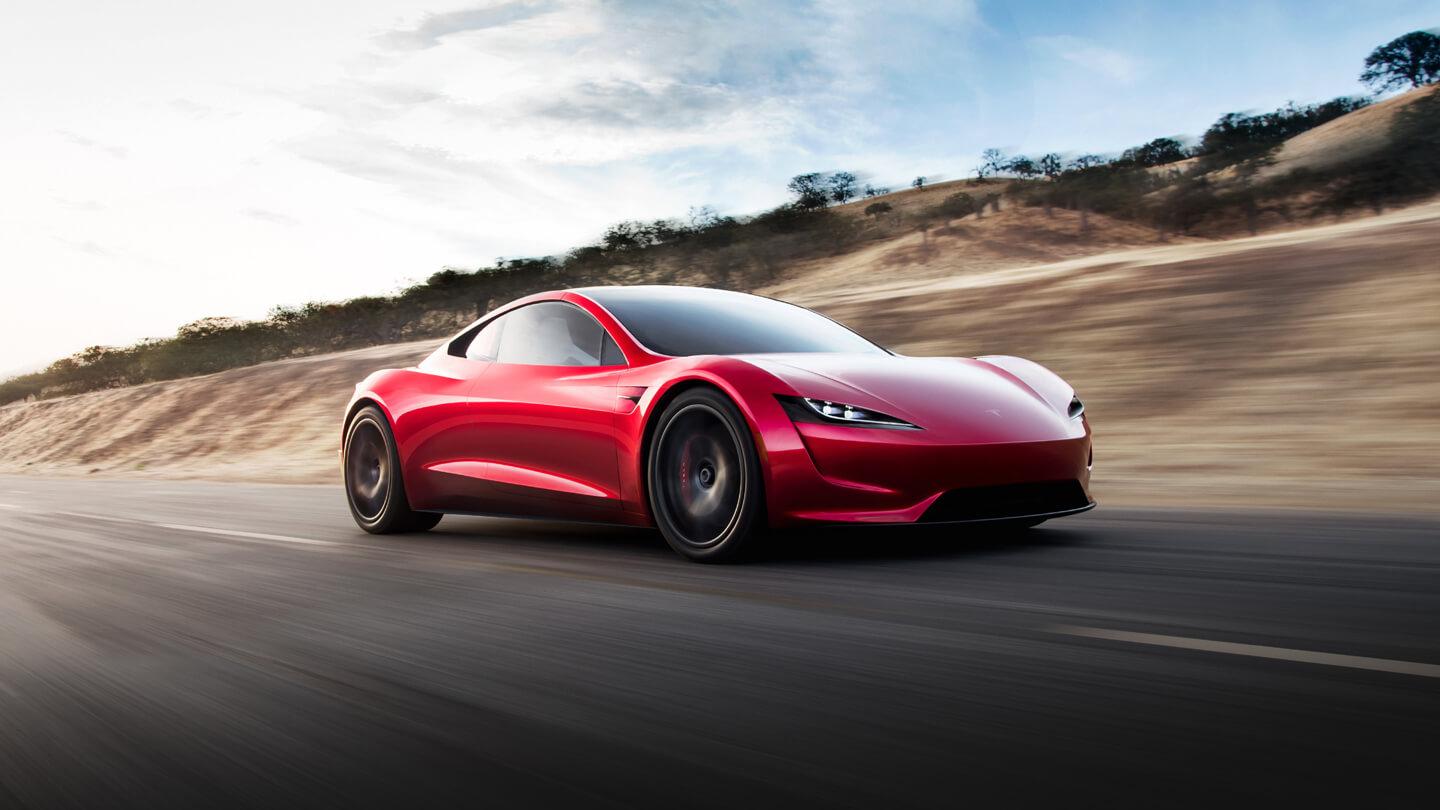
Cybertruck. On November 21, 2019 Tesla launched its entry into the lucrative pickup market with the unveil of Cybertruck. “It doesn’t look like anything else,” proclaimed Elon once the truck came onstage. As the demonstration continued, it became clear that the Cybertruck did not have the specs and performance of anything else, either. Drawing from innovations at SpaceX, the Cybertruck abandoned the traditional body on frame design of all other cars in favor of cold-Rolled stainless-steel exoskeleton.
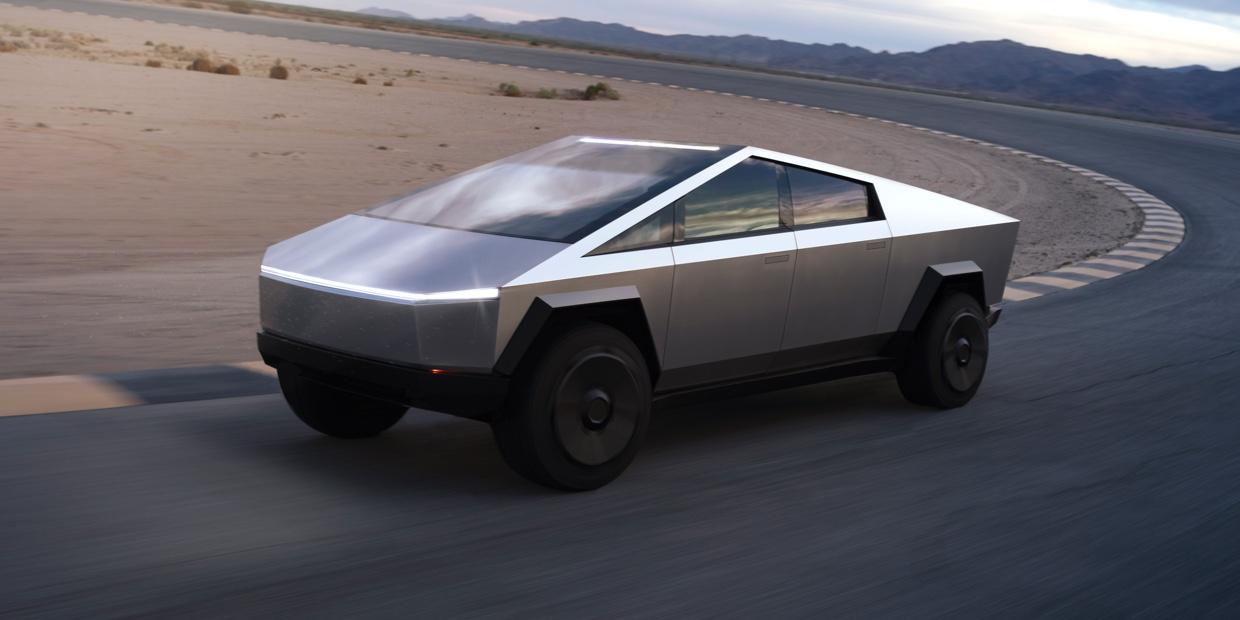
During a demonstration gone awry, Franz von Hozhausen threw a steel ball that shattered two of the trucks windows. Between the botched demonstration and the futuristic cyberpunk appearance of the truck, the unveil made waves across the media, internet, and cultural zeitgeist.
3. Vehicle Autonomy
Musk plans to roll out autonomous capability as soon as possible, and not just for the coolness factor—he’s primarily concerned with safety. Tesla will integrate self-driving components such as cameras, radar, and sonar with all of its vehicles as the technology evolves, he reports. Autonomous systems will be fail-operational, meaning that a vehicle will still drive itself safely if a component system breaks. While it will be some time before self-driving vehicles become street-legal, Tesla cars will be ready.
“I should add a note here to explain why Tesla is deploying partial autonomy now, rather than waiting until some point in the future,” Musk writes on Tesla’s blog. “The most important reason is that, when used correctly, it is already significantly safer than a person driving by themselves and it would therefore be morally reprehensible to delay release simply for fear of bad press or some mercantile calculation of legal liability.”
4. Sharing
Once your car is self-driving, you can put it to work for you when you’re not using it, Musk says. It will essentially be an “Uber driver,” but in Tesla’s shared fleet. Your Tesla may eventually end up paying for itself, meaning that anyone could afford to buy one.
It’s a win-win for both Tesla and the consumer, and the final phase of Tesla’s Master Plan—as far as we know. Judging from the company’s history, it could be the path to funding “Master Plan: Phase 3.” Musk may just be getting started.
Tesla Master Plan, Part 3
The focus of Tesla’s previous “master plan” unveilings largely centered around a new product line that the company would be adding to its suite of offerings. The roll out of Master Plan 3 at Tesla’s Investor Day on March 1, 2023 had a bit of that, but this event was notably different as Musk went “big picture” to outline the company’s next area of focus – completely ending fossil fuels.
To accomplish this ambitious goal, Musk outlined the need to invest $10 Trillion in new manufacturing operations focused on rapidly increasing the clean energy transition.
The Numbers
The plan calls for a massive increase in battery storage in the form of both stationary storage and electric vehicles. Tesla estimates that 240 TWh of storage will need to be in place with about 30 TW of renewable energy to support a truly sustainable existence on Earth. Musk pointed out that even in this scenario, wind and solar resources would occupy less than 0.2% of land on Earth, and contrary to popular belief, the availability of natural resources and minerals needed to accomodate this transition would be sufficient to meet demand.
The Plan
Musk outlined the need to dedicate the $10 Trillion investment across a range of products and industries:
- Adding renewable power to existing grid infrastructure
- Bringing more electric vehicles to market
- Installing heat pumps in residential and commercial buildings
- Using high-temperature heat delivery and hydrogen for industrial applications
- Bringing sustainably fueled planes and boats to market
Mystery Vehicle Key to Production Ramp
At the Investor Day event , Musk and other Tesla executives took the opportunity to reiterate the company’s goal to produce 20 million electric vehicles annually by the year 2030. Tesla claimed 1.3M deliveries in 2022, making it clear that the company will have to overhaul its production processes and capabilities in order to meet their lofty goals.
Musk confirmed that Tesla’s sixth gigafactory would be built south of the border in Monterrey, Mexico. At a price tag of over $5 Billion, the mammoth facility will be almost double the size of the Austin, TX gigafactory, making it the largest electric vehicle production facility in the world. The mission of this gigafactory will be a pivotal one as it will be where Tesla’s mysterious next-gen class of vehicles will be built. Musk was predictably tight-lipped on details of the line of vehicles, but it was clear that slashing prices for the consumer by improving manufacturing efficiencies is the focal point.
Tesla Turns Focus to Affordability
Earlier this year, Tesla slashed prices on their Model S and Model X vehicles in an effort to draw even more interest from consumers.
At Investor Day, Musk reported that this move yielded successful results, and it is clearly just the beginning of Tesla’s efforts to make affordability a central tenet of its next-gen vehicles. “We found that even small changes in the price have a big effect on demand…very big,” as Musk put it at Investor Day.
The Tesla team said that the next-gen vehicles will have a 40 percent smaller manufacturing footprint and would cut production costs by 50 percent. Tesla executive Tom Zhu, who leads global production and is the highest profile exec after Musk, pointed out the company’s increasingly efficient production capabilities that will be a critical trend moving forward as Tesla seeks to significantly ramp production. As Zhu said, “It took us 12 years to build the first million [cars], and about 18 months to the second million. The third million, 11 months. Then less than seven months to build the 4 millionth.”
The big picture goals set forth by Musk via his latest Master Plan chapter are exciting and underscore how Musk sees Tesla’s tentacles interacting with nearly every facet of the renewable energy transition. The more exciting news for consumers is the next-generation of vehicles that Tesla has up their sleeves and the company’s renewed commitment to making their vehicles more affordable.
Tesla’s full Master Plan 3 unveiling at its March 1, 2023 Investor Day can be viewed at the below link
The post Elon Musk’s Complete Master Plan appeared first on Solar Tribune.
]]>The post Solar Industry Overcomes Trump, Thrives in 2019 appeared first on Solar Tribune.
]]>
Record-Breaking Quarter
The record-breaking pace of solar PV adoption in the United States showed little sign of letting up in 2019. This was the main takeaway of the most recent edition of the U.S. Solar Market Insight report, jointly put together by the Solar Energy Industries Association (SEIA) and Wood Mackenzie Power & Renewables.
The report highlights a number of accolades, including:
- Residential solar capacity added in the U.S. in Q3 2019 hit a new record at over 700 MW.
- California remains the largest residential solar market in the U.S., with a record-breaking 300 MW of residential solar capacity installed in Q3 2019.
- The U.S. solar market installed 2.6 GW of solar electricity capacity in Q3 2019, representing a 45% increase from Q3 2018.
- A cumulative total of 21.3 GW of new utility PV projects were announced in the first 3 quarters of 2019, bringing the total contracted utility PV pipeline to a record high 45.5 GW.
- Total installed solar PV capacity in the U.S. is expected to more than double over the next 5 years.
The continued maturation of the residential and utility solar PV markets is especially noteworthy.
Not only was Q3 2019 the best quarter ever for installed residential solar PV capacity, but it was also the first quarter ever that a Northeast state – a region noted historically as being a national leader in residential solar – wasn’t listed among the top 5 state residential solar PV markets. The top 5 states instead include legacy markets like California, Florida, and Arizona but also emerging markets like Texas and Nevada. This reality shows both the maturation of the solar industry over the past couple decades and the room still left for the industry to grow as emerging state solar markets in the Sun Belt and Mountain West continue to take hold.
The surge in utility-scale solar PV growth is being driven primarily by corporate users that continue to be drawn to the falling costs associated with utility-scale solar. As we’ve documented before here at Solar Tribune, major corporations like Google, Amazon, Microsoft, Apple, and many others have signed on to significant power purchase agreements (PPAs) in recent years to help meet ambitious renewable energy goals. Approximately 4 GW of utility-scale projects that are expected to come online in 2020 will have a corporate user, representing just under 30% of the utility-scale solar market forecast in 2020.
Market pressure will cause more and more corporate users to make pledges to be powered 100% by renewables in the near future. This fact coupled with the demand by corporate users to take advantage of low-price PPAs before the step down of the solar Investment Tax Credit (ITC) points to there being little slow down in the utility-scale solar market. Cumulative figures for solar capacity in 2019 are not yet available, but the industry’s momentum is unmistakably strong.
Overcoming Tariffs, Trump, and Tumult
The fact that domestic solar energy production has grown so steadily in recent years is somewhat miraculous given the wholesale efforts by the Trump Administration to knock the industry down.
Reasonable people of all political stripes can debate how much effort the government should put into subsidizing the solar industry. However, its hard to justify the actions that the Trump Administration has pursued to cripple renewables – and prop up fossil fuels – unless done so on purely cynical political grounds.
Here’s just a sampling of Trump Administration policies that have undermined the solar industry:
- Passed a tax reform package constraining financing for solar and wind projects.
- Implemented a crippling 30% tariff on imported solar panels in 2018 that steps down by 5% in subsequent years.
- Implemented a tariff on aluminum and steel imports in 2018, two commodities that are heavily relied upon in the solar industry.
- Just months ago, the Trump Administration rescinded a tariff exemption on bifacial solar panels – which generate energy on both sides – so that they too will be subject to a 25% tariff.
These actions have made solar projects more expensive for consumers by hiking material costs and reducing attractive financing options. And this list doesn’t even include things like the rolling back of Obama-era regulations on power plant emissions and the withdraw from the Paris Climate Accord – symbolic gestures signaling the Administration’s lack of interest in investing in renewables.
Let’s be clear, the above actions by the Trump Administration have had a significantly negative impact on the solar industry, not to mention the untold number of people and families that rely on the industry for their livelihoods. An analysis by the SEIA notes that the tariffs imposed in January 2018 will wipe out over 62,000 jobs, $19B in investment and 10.5 GW of solar capacity. These estimates cover projected tariff impacts starting from the 2017 section 201 trade complaint filed by Suniva through the tariff life cycle ending in 2021.
Solar Continues to Trump Coal
President Trump has not made his love of the coal industry – and disdain of renewables – any secret. All evidence, however, continues to point to the Trump Administration’s all-out push to prop up the U.S. coal industry as being an exercise in futility.
The performance of the U.S. coal industry during the Trump Administration has mirrored much of what the industry has done this Century – it’s cratered. Don’t take my word for it, here’s what the Energy Information Administration (EIA) has to say:
“EIA expects U.S. coal production in 2019 to total 697 million short tons (MMst), which would be an 8% decline from the 2018 level. In 2020, EIA expects a further decrease in total U.S. coal production of 14%, to an annual total of 601 MMst, reflecting continued idling and closures of mines as a result of declining domestic demand.”
Further…
“EIA forecasts the share of U.S. electric generation from coal to average 25% in 2019 and 22% in 2020, down from 28% in 2018.”
Meanwhile, the Energy Information Administration (EIA) notes that the non-hydro renewables industry is expected to be the “fastest growing source of U.S. electricity generation for at least the next two years.” Trump’s own Department of Energy notes that solar installations since 2008 “have grown 35-fold to an estimated 62.5 gigawatts (GW) today.”
Despite a harsher regulatory environment in Washington over the past couple years, the U.S. solar industry has plenty of upward momentum. California’s solar mandate for new residences, an uptick in corporate procurement of solar power, and more investments in solar by utility companies across the country are all positive trends helping the solar industry overcome the obstacles that the Trump Administration has put in its way.
Cover Photo Source: Cnn.com
The post Solar Industry Overcomes Trump, Thrives in 2019 appeared first on Solar Tribune.
]]>The post Solar-Powered Cars: The Future of Personal Transportation? appeared first on Solar Tribune.
]]>
A Brief History of Solar Cars
Despite their futuristic reputation, solar-powered cars have been around in some form or fashion for several decades. William G. Cobb of General Motors is credited with creating the first solar car back in 1955. Cobb’s invention – dubbed the “Sunmobile” was not a passenger car by any conventional measure as it was just a tiny 15-inch model car made of balsa wood and equipped with 12 selenium PV cells and a small electric motor.
The first functional solar-powered car built to-scale is thought to have been built in 1980 by a team of researchers at Tel Aviv University. Although weighing in at over 1,320 pounds, the clunky vehicle was neither functional nor visually appealing.
In this century, solar cars have mainly been associated with record-breaking speed pursuits and higher educational purposes.
The Innovators Educational Foundation (IEF) is a non-profit that has organized collegiate level solar car racing in North America since 1980. The IEF hosts two premier events annually, the American Solar Challenge and the Formula Sun Grand Prix, where teams of college students compete against each other to see who has the fastest solar-powered vehicle. The solar vehicles resemble bobsleds more than passenger cars, but they are marvels of modern engineering having the ability of reaching speeds of over 50 mph while using less power than a hair dryer.
The World Solar Challenge is a similar competition held biennially in Australia that welcomes 50+ international teams of competitors representing dozens of countries. The Ashiya University Sky Ace TIGA is the current Guinness World record holder for fastest solar-powered vehicle, achieving a top speed of 56.75 mph in Japan in 2014.
Musk Goes from Skeptic to Believer
Elon Musk once again captivated the attention of the global auto market recently in a way that only he can. No, he wasn’t launching another Tesla-made vehicle into outer space again (it’s still up there, by the way). He instead unveiled the much-anticipated Tesla Cybertruck – an all-electric battery-powered vehicle that represents Tesla’s first foray into the pickup truck market. As expected, the new-age Cybertruck comes with a number of outside-the-box features, including; an ultra-durable 30X cold-rolled stainless-steel body, armored glass windows, on-board power inverter, fully autonomous capabilities, and much more.
One of the more surprising pronouncements about the Cybertruck’s specs and capabilities came the day after the unveil when Musk revealed the following on Twitter:
Will be an option to add solar power that generates 15 miles per day, possibly more. Would love this to be self-powered. Adding fold out solar wings would generate 30 to 40 miles per day. Avg miles per day in US is 30.
— Elon Musk (@elonmusk) November 22, 2019
Musk’s embrace of solar panels on cars represents a 180 of sorts from his previous stance on the topic. He has long been skeptical about the efficacy of generating power from solar panels affixed to the roof of a car, citing surface area limitations and the amount of time that cars spend in garages and in shaded areas as primary reasons to not embrace the technology. Musk most prominently shot down the idea during the Q and A portion of his appearance at the 2017 National Governors Association summer meeting in Rhode Island:
In responding to a question from Gov. Phil Scott of Vermont, Musk stated, in part:
“Putting solar panels on the car itself…not that helpful…The least efficient place to put solar is on the car…It’s way better to put it on a roof.”
Musk also mentioned that just a year earlier he flirted with the idea of offering a solar roof as an option on the Model 3 in the form of a “retractable” deployable solar shield in order to provide the surface area necessary to generate meaningful amounts of solar energy. He asked Tesla engineers to look into it, but they ultimately came to the same conclusion – putting solar panels on vehicles wasn’t a worthwhile pursuit.
So, what changed to make Musk do an about-face on the topic? For one, solar cells continue to get more and more efficient, as we’ve noted before. Technological advancements with malleable, thin film multi-junction cells in particular have significantly advanced the reality of equipping vehicles with solar cells. Industry-leading thin film solar cells can achieve solar efficiency scores above 30%, thanks to companies like Alta Devices that have broken new ground in the quest for making thinner, lighter, more flexible solar cells that remain highly efficient.
Secondly, Musk’s embrace of solar panels on personal vehicles is likely also a response to the evolving competitive landscape. Some of the world’s biggest automobile companies are developing hybrid electric vehicles equipped with solar capabilities. A direct competitor of Tesla’s in the pickup truck sub-market – Ford – plans to release a hybrid electric version of its famed F-150 as early as next year. By equipping the Tesla Cybertruck with solar energy capturing capabilities at such an early stage, Musk is establishing a key differentiator with what is likely to be their biggest competitor before that competitor’s product has even hit the market.
Solar-Powered Cars and the Consumer Market
Rest assured that Tesla isn’t the only company planning to bring solar-powered vehicles to market. In just recent years, the consumer market for solar-powered vehicles has taken shape as iconic global brands and little-known startups alike race to perfect the technology that will bring solar-powered cars into the mainstream.
In Japan, Toyota is experimenting with a version of its Prius Prime, equipped with 860 watts worth of high efficiency thin film solar cells on the car’s hood, roof, and rear hatch. Toyota claims that the solar panels affixed to the car have an efficiency rating of 34%, providing the car with enough energy to travel 35 miles on a sunny day.
While Toyota’s Prius Prime is still undergoing testing and not quite ready for the consumer market, Hyundai released a solar-powered version of their Sonata Hybrid in August of this year. Hyundai claims that 30-60% of the car’s battery can be charged solely by solar energy, and with about six hours of charge per day from solar energy, the car can increase travel distance by about 807 miles per year.
The solar-equipped version of Hyundai’s Sonata Hybrid is available in South Korea, and the company eventually plans to enter the North American market in early 2020.
Auto giants like Toyota and Hyundai aren’t the only ones diving into the solar-powered vehicle space; the start up community is also getting in on the action.
Co-CEOs Laurin Hahn and Jona Christians founded Sono Motors in 2016 with the sole purpose of bringing a solar-powered electric vehicle to the market. That dream has been realized in the form of the Sion, the company’s lone vehicle offering that is scheduled to be introduced into the European market next year.
Unlike the aforementioned vehicles, the Sion is virtually covered in solar panels. A total of 248 solar panels cover every plausible part of the car’s body, including doors and side panels. This unique design was created so that the car could capture solar energy regardless of the sun’s angle in the sky. The company claims that the Sion can add an estimated 3,600 miles per year in driving distance from solar energy. When driven short distances – like by urban commuters – the car is completely self-sufficient.
The general lack of garages in European households and the car’s small, compact build and ridesharing capabilities make it perfectly equipped for the European lifestyle. The company is solely focused on the European market at this time for the Sion (priced at approx. $27,500) and has no current plans to introduce the car elsewhere.
If the budget-friendly Sion is the equivalent of a basic Honda Civic, then its counterpart – Lightyear One – may as well be the renewable energy version of a Rolls Royce. With an expected retail price of about $170,000, the Lightyear One is by far the most luxurious solar-powered car to soon be made available to consumers. The prototype of the vehicle was unveiled earlier this year and production is planned for 2021.
Lightyear the company is the brainchild of former University of Eindhoven (The Netherlands) engineering students who competed in the World Solar Challenge race and won in 2013, 2015, and 2017.
The sleek Lightyear One is outfitted with 54 square feet of solar panels covering its roof and hood that are able to charge the car’s battery at a rate of nearly 7.5 miles of charge per hour. The Lightyear One is equipped with batteries that will hold enough energy for up to 450 miles of driving, an impressive feat that eclipses the electric vehicle market-leading 370 miles range afforded by the Tesla Model S.
There are few industries in the world that are innovating as rapidly as the automobile and renewable energy industries. While there is reason to be skeptical about the unproven technology, solar-powered cars have the potential to make progress in combating climate change in ways that could have only been imagined decades ago. It will be interesting to see if solar-powered cars take off now that several models of solar-powered vehicles are soon to be made available on the consumer market. Regardless, the ongoing popularization of electric vehicles, hybrid vehicles, and solar-assisted vehicles in lieu of the gas guzzling automobiles of yesteryear is a development worth celebrating.
The post Solar-Powered Cars: The Future of Personal Transportation? appeared first on Solar Tribune.
]]>The post Climate Change Policy Measures: Identifying Priorities, Particularly Outside of the Usual Suspects appeared first on Solar Tribune.
]]>
Decades after climate scientists first started sounding the alarm on climate change and a full 12 years after Vice President Al Gore stood on stage to warn us about climate change’s Inconvenient Truth, the Sunrise Movement and the policy package that came to be known as the Green New Deal finally seemed to bring desire for action to the United States federal government. While the complete package of a Green New Deal looks to be a long shot – at least at this point in time – to be passed, it succeeded in bringing the conversation about climate action to the forefront of American politics.
For example, whereas in previous elections it was simple enough to separate potential Presidential candidates by those who prioritized climate action and those who did not, the field of 2020 Democratic candidates are now forced to bring their actionable climate plans to voters and defend not just that climate action is necessary but that their particular plan is the one that will get the job done in time. While of course the question of how high on each candidate’s priority list energy and climate lie is up for debate, voters (and donors) are paying more attention than ever before and the seven-hour town hall on climate change that CNN hosted with the prospective candidates demonstrated the level of detail at which voters are now looking.

Photo source: CNN.com
All that is set up to say: what are the right policy measures that should be utilized by the U.S. government? The clean energy community certainly doesn’t speak with a singular voice, and you’ll have portions of the climate advocacy population ardently defending carbon taxes vs. renewable portfolio standards; investment tax credits vs. deregulating electricity markets; policies for transportation emissions vs. industrial emissions; and many more. This segmentation can be damaging in the short-term because those fighting against spending money on climate action or for placing regulations on corporations tend to be unified, but in the long run, it’s critical that the federal government’s role in climate action be chosen deliberately, carefully, and with all the facts. Germany’s progress towards emissions reductions, for example, was delayed a damaging amount due to acting too quickly and going down arguably the wrong path. So, while inaction is wasting time, going down the wrong pathway (pouring time and resources into the non-ideal solutions) can be just as damaging towards the ultimate goal.
That conversation about which policies are the most critical is the basis of Solar Tribune’s Climate Policy Primer. In this ongoing project, we’re connecting with stakeholders across industries, regions, and positions to ask them about which climate change policies are the most singularly important in their opinion. These conversations we’re continuing to have are informing and growing this living document (and if you’d like to share your two cents, please don’t hesitate to reach out!), so I’d encourage you to refer to that page to see about some of the identified priorities in climate policy, the very issue that’s being debated on the federal and electoral stages today.
While this is a process that is of course still ongoing, a number of interesting trends have been popping up. One intriguing occurrence I noticed quickly was how many people, when narrowed down to a single policy to discuss, advocate for those that were not in the list of usual suspects like carbon pricing, tax credits, or mandatory renewable energy goals. Rather, these advocates were passionate about first and foremost identifying and bringing up climate change policy measures that are less likely to be discussed in the soundbites from the campaign trail. This trend could identify an opportunity for the innovative and forward-looking candidates to blaze a new trail and connect with climate-concerned voters in new ways, but more importantly, these experts in their fields simply saw the measures as being too critical to land anywhere other than the top of the priority list.
A few examples of these less commonly discussed climate policy options include the following…
Land Use Policies
Solar Tribune connected with Protect Our Winters about the climate policy question. This organization was founded by a professional snowboarder who inherently treasured the natural landscapes on Earth and saw the dangers that climate change had begun posing to all outdoor spaces. The concern for areas to hike, to snowboard, and to enjoy nature are naturally paired with all of the questions of climate change. From the mission statement of Protect Our Winters, the organization notes:
“Right now, we have the luxury of worrying about how climate change might impact the outdoor industry. Right now, we get to help dictate the outcome rather than react to a foregone conclusion. If we sit on our hands for the next two decades, we won’t be worried about powder days, tourism or having fun. We’ll be worried about the stability of our environment, our jobs, and our economy.”
Inherent to this inclination to protect nature comes the unique perspective on what climate change approaches are most important. When I talked to Lindsay Bourgoine, Director of Policy & Advocacy of Protect Our Winters, she shared the following sentiment:
“Public lands not only enhance carbon sequestration, but their protection often removes them as a fossil fuel development opportunity. As an example, on the Arctic Refuge, not only do we oppose the drilling of this land because of the human rights issues and conservation issues, but also because the indirect emissions that would come from such drilling would be equivalent to about a million new cars on the road. Protecting public lands is protecting the climate.”
While many of the most commonly shared ideas on fighting climate change focus on the need to minimize the man-made CO2 emissions emitted into the atmosphere, the focus on land use policies instead prioritize maximizing Earth’s natural tendencies to be able to regulate and capture carbon. But when we increase greenhouse gas emissions while simultaneously reducing the environment’s capacity to regulate those same emissions, that’s when the climate death spiral comes into play.

LEAF Asia
Focusing on a Just Transition
Another area of focus outside the top-discussed federal roles in climate policy came from Solar Tribune’s discussion with Eban Goodstein, Director of Graduate Programs in Sustainability at Bard College. When talking to Eban, he noted that federal energy policies had already largely done their role in the traditional routes of tax subsidies, R&D dollars, and the like. Given that renewables like solar and wind were already cost-competitive, or already more affordable to build than new fossil generation, two routes for climate policy were necessary. For the role of continuing to bolster renewable energy generation, Goodstein saw that as the responsibility of state and local governments. Each more localized government would be able to assess the hurdles that still remained in their region and which policies were the best fit for their situation, rather than look at a one-size-fits-all policy for the entire country. These state and local initiatives are the basis of Bard’s upcoming Solve Climate By 2030 initiative over the coming year.
While deferring to state and local governments for solutions is not entirely outside of the usual suspects of climate solutions, what is more unique in Goodstein’s perspective is where the federal role is given the above. While the more regional governments should be charged with increasing renewable deployment, Goodstein sees the federal government’s role to be one that oversees this energy transition and ensure it’s completed in a fair and just manner. As Goodstein and his co-author, L. Hunter Lovins, noted in a paper:
“Green New Deal type policies that focus on employment and on fair and reliable access to power and transportation will be central to ensuring that the social benefits of a rapid transition to clean energy are widely spread and that the transition is not cut short due to policy opposition.”
The idea behind this push is that the nation has already reached a part where the clean energy transition will be taking place in one way or another, but if that plays out naturally there are risks that certain populations will benefit more from the change than others. Whether that’s certain disadvantaged communities not receiving the economic benefits of renewable energy, regional disparity in how the jobs market changes (e.g., coal country getting hit harder than others in economic consequences), or another way, the federal government has a role to play in ensuring that the energy transition is equitable, accessible to all populations, and doesn’t play favorites with different populations.

Photo source: Shepherd Express
Allowing Geothermal, Hydro, and Biomass Parity to Achieve with Other Renewables
When the clean energy transition is discussed in popular media, most people recognize that conversation to strictly deal with wind power and solar energy. However, a host of other renewable energy generation sources are critical to the U.S. energy mix today and in the future, including geothermal, hydropower, and biomass. When discussing the climate policy primer with The Environmental and Energy Study Institute (EESI), the non-profit organization highlighted to Solar Tribune the need for federal policies to include these secondary forms of renewable energy as well:
“Wind and solar will need to be complemented by geothermal energy, hydropower, and biomass energy. This can be incentivized by modifying the current tax credit structure that currently favors solar and wind power. Despite unequal access to tax incentives, geothermal, hydropower, and biomass are valuable because they provide baseload power and are located in geographically diverse areas.”
Renewable energy and climate change policies must not blindly support just one or two technology types, and despite solar and wind being the most commonly considered renewable energy sources, they are not alone the solution. In fact, until 2018 hydropower was the most common source of renewable energy generation in the United States, only recently being overtaken by wind. Because of the flexibility these non-wind and non-solar renewables provide based on local geography, resources, and economics, EESI is smartly beating the drum of these alternatives. While of course that does not mean they don’t see wind and solar as key parts of the solution, but any climate change policy that includes tax credits or other economic incentives must also account for the value provided by the renewable energy sources less often placed on the podium.

Photo source: Better World Solutions
Conclusion
The takeaway here is that voters and citizens who care about the government following the right policy pathways when it comes to climate change need not be so narrowly focused. While many groups may have coalesced around a handful of key ideas, a successful fight against climate change will tap into the full toolbox of solutions. So, the above (and other) options outside the usual suspects remain critical to investigate and about which to ask questions. As Solar Tribune continues connecting with advocates and thought leaders about the Climate Policy Primer, don’t be surprised if more new areas of focus arise that might seem out of left field. But just because they’re not the standard, sound-bite proven answers to the climate change questions does not mean they are not appropriate and effective real-life solutions.
About the author: Matt Chester is an energy analyst in Orlando, studied engineering and science & technology policy at the University of Virginia, and operates the Chester Energy and Policy blog and website to share news, insights, and advice in the fields of energy policy, energy technology, and more. For more quick hits in addition to posts on this blog, follow him on Twitter @ChesterEnergy.
The post Climate Change Policy Measures: Identifying Priorities, Particularly Outside of the Usual Suspects appeared first on Solar Tribune.
]]>The post Does the U.S. Still Need the Solar Investment Tax Credit? appeared first on Solar Tribune.
]]>But the ITC is set to begin phasing out at the end of 2019 and a group in Congress has introduced legislation to extend it for an additional five years. Obviously the solar industry would benefit from an extension, but has the tax credit succeeded in its mission already? And does an industry that’s so healthy still need this crutch today?
Lawmakers hope to extend solar ITC for five more years
On July 25, Nevada Senator Catherine Cortez Masto introduced legislation to extend the clean energy tax credits originally set to begin phasing out at the end of this year. The bill, named the Renewable Energy Extension Act, would extend the full 30% tax credit for solar installations an additional five years.
At the time, Masto said:
“Protecting the environment is good for our health and our economy. These tax incentives help us achieve these goals by increasing commercial and residential solar use, reducing carbon emissions, and creating good-paying jobs.”
This isn’t the first time Congress has considered extending this credit. The ITC actually has a long history of extensions. Back in 2005, the original 30% credit won bi-partisan support during the Bush administration, but was originally set to drop to 10% just two years later in 2007. Congress extended the credit until 2008, at which point Congress again passed an extension as part of Obama’s 2009 stimulus package, this time all the way out to 2016.
On the final day of 2015, Congress again agreed to extend the credit until 2019, with a gradual phase out over several years. Without an extension, the credit will drop to 26% until the end of 2020, then 22% in 2021, before dropping to 0% for homeowners and 10% for commercial projects permanently.
Solar tax credit designed to combat climate change
On pondering whether we should allow the ITC to expire, we should first find out exactly what the tax credit was designed to do. Was it to jump start a new tech industry? Help homeowners save some cash? When the ITC was extended in 2015, the 2016 US federal budget explicitly set out the purpose of the ITC and other clean energy programs:
“Cutting carbon pollution is essential to reducing the threat of climate change and represents one of the greatest economic opportunities of the 21st Century…To support the development of pollution-cutting technologies, the Budget invests approximately $7.4 billion in clean energy technology programs… that stimulate the evolution and use of clean energy sources such as solar, wind, and low-carbon fossil fuels, as well as energy-efficient technologies, products, and process improvements.”
The ITC then is designed to help cut carbon pollution and, by extension, fight climate change. As the only piece of federal legislation designed to stimulate a clean energy economy, the congresspeople supporting the extension say that the credit is necessary to continue moving the country towards a cleaner economy. The group’s letter states:
“The decrease of both credits should be delayed by at least as much time as it will take to implement a technology-neutral incentive or other federal legislation to reduce carbon emissions from electricity generation.”
With the absence of any wide-reaching federal climate policy, local governments are already moving forward on emissions-reduction tactics. A handful of cities and states like California, New York, and Washington have pledged to go 100% renewable or clean energy.
However, energy industry analysts often see both of these measures – clean energy goals and renewable tax credits – as stop-gap measures for real climate change legislation, like a national carbon tax, that would deal with emissions from all relevant sectors: electricity, industry, and transportation. As you can see in the graph below, while the electricity industry has been lowering emissions since the mid-2000s thanks to an increase in natural gas and renewables, transportation emissions is still increasing and per-capita emissions remain far above other developed countries like Germany, the UK, and Canada.
Considering the initial goal and the fact that the federal government seems far from adopting a true climate policy, extending the ITC another five years seems reasonable. It’s a square nail filling the round hole of carbon emissions, but it’s the only nail the federal government will likely pick up in the next four years.
Can the solar industry stand on its own two feet?
Few in the solar industry see an extension as a real possibility. Installers like Sunrun and Sunpower are hoping for an extension, but still prepping for the ITC to phase out this year.
While the industry is certainly in favor of an extension, the outcry doesn’t seem quite as loud as 2015. Over the last decade, the ITC has been a strong catalyst of growth for the U.S. solar market. Industry trade group SEIA claims that the solar industry has enjoyed a 50% annual growth rate since 2008 and that the tax credit is responsible for $140 billion in economic investment and creating ‘hundreds of thousands’ of jobs.
Solar installation costs have dropped about 60% since 2010 – from $7.30/watt to just $3/watt today. Installation costs have fallen to the point where even without the tax credit, homeowners in many states will still find roof-top solar a sound financial investment.
In the chart below, we compare $-per-kilowatt-hour costs of the average utility, roof-top solar with the 30% ITC, and roof-top solar without the 30% ITC (using solar energy production estimates from Denver, CO). Note that while an ITC-free installation doesn’t pencil out as well financially, from Year 1 it’s still lower than utility costs, which increase an average of 2.6% annually nationwide.
In the utility and commercial solar industry, installers are already planning to ‘safe harbor’ projects, a program in which the IRS grants extensions up to four years for projects that were begun in 2019. So if the tax credit isn’t extended, we can expect a surge of installations as 2019 progresses, as the industry rushes to begin projects before the credit starts to phase out.
As a policy to spur a clean energy industry towards growth and maturity, the ITC has certainly done its job. Over the last decade, the industry has seen truly jaw-dropping growth. Case in point: According to the EIA, solar generation jumped from a measly 157 gigawatt-hours in 2009 to 96,147 GWh in 2018. However, as a policy to combat climate change, the Solar ITC still has quite a bit it could get done.
Image Source: Public Domain via Pixabay
The post Does the U.S. Still Need the Solar Investment Tax Credit? appeared first on Solar Tribune.
]]>The post Top Priority Policy Planks for a Green New Deal appeared first on Solar Tribune.
]]>
Solar Tribune approached EESI to ask us what the most important and critical policy planks for the Green New Deal– or any other comprehensive climate change and clean energy legislative package– would be. Here is our response to that prompt:
Energy Efficiency: Energy efficiency is a central tool for decarbonizing the economy and the cheapest, fastest, and simplest way to address our energy and environmental goals. When something is energy efficient– whether it is a light bulb or a building– it is able to perform the same function with less energy. For example, a light-emitting diode (LED) light bulb requires less energy (fewer watts) than an incandescent light bulb to produce the same amount of light.
Increases in energy efficiency can significantly reduce the amount of energy necessary for transportation and to heat and cool homes and commercial buildings. This decrease in demand makes it easier to meet energy needs with renewable energy sources. Energy efficiency has significantly reduced greenhouse gas emissions in the power sector and has the potential to transform other sectors as well, including buildings, manufacturing, and transportation.
The building sector alone represents a huge opportunity for energy savings. Residential and commercial buildings account for about 40 percent of U.S. energy consumption, according to the U.S. Department of Energy, and currently 75 percent of this energy is from fossil fuel sources. Proven strategies, materials, and technologies are available to significantly improve building energy efficiency, which in turn reduces operational costs, makes housing more affordable, reduces pollution and greenhouse gas emissions, and creates jobs.
Photo Source: Wikimedia
Programs such as the Rural Energy Savings Program (RESP), a funding opportunity through the Department of Agriculture’s (USDA’s) Rural Utility Service, provides zero-interest loans for rural electric co-ops and other rural utilities. Utilities can re-loan the funds to members to upgrade their homes and businesses with energy efficiency and renewable energy. Initially authorized by the 2014 Farm Bill (and reauthorized in 2018 through 2022), RESP leverages USDA funds through a credit subsidy, which must be appropriated by Congress annually. Eligible RESP measures include: on- and off-grid renewable energy systems, energy efficiency retrofits, permanently-installed battery storage devices, electric vehicle charging stations, and replacement of inefficient manufactured homes. This program is particularly critical for low-income households, who spend a higher than average proportion of their income on utility bills. Appropriating additional funds to these programs would provide broader access for energy efficiency and clean energy projects across the country. EESI’s recent briefing on RESP and rural electric cooperatives provides more information about this program.
The urgent need for new and modernized infrastructure, including energy and water systems, public buildings, and transportation projects that receive federal funding, is an opportunity to ensure sustainability and climate resilience from the beginning. Each stage in the process– from planning and siting, to design, materials selection, construction, and operation– is an opportunity to maximize energy efficiency. Efficiency as well as low-carbon fuels may also reduce the long-term burden on infrastructure utility expenses. Indeed, the Senate Environment and Public Works Committee has included a Climate Title in its new transportation bill for the first time.
Renewable Energy Parity: To transition the United States to renewable energy, wind and solar will need to be complemented by geothermal energy, hydropower, and biomass energy. This can be incentivized by modifying the current tax credit structure that currently favors solar (Business Energy Investment Tax Credit (ITC)) and wind power (Renewable Electricity Production Tax Credit). Despite unequal access to tax incentives, geothermal, hydropower, and biomass are valuable energy sources because they provide baseload power and are located in geographically diverse areas, allowing a greater number of communities to take advantage of their natural assets. Ensuring tax parity for these energy sources would increase private investment to develop and deploy these technologies, providing more renewable options to meet the country’s overall energy demand. Fossil fuel subsidies should also be eliminated to make renewable energy technologies more competitive and the remove perverse incentives.
The EPA has untapped avenues to support the development of commercial biogas through the Renewable Fuels Standard. Biogas technology converts organic wastes (i.e., agricultural residues, manure, food wastes, and sewage) into energy through a process of anaerobic digestion. According to the American Biogas Council, there are currently about 2,200 operational biogas systems in the United States, with a potential for more than 14,000.

Photo Source: Pixabay
There is also significant potential to develop offshore wind energy, which is abundant and provides a higher capacity factor than terrestrial wind. However, additional policies are necessary to support growth in this industry. In particular, more work is necessary to build transmission from the turbines to end users.
When crafting policy on energy efficiency and renewable energy parity, equity, inclusion, and stakeholder centered processes should be paramount in keeping with the promises of the Green New Deal.
The post Top Priority Policy Planks for a Green New Deal appeared first on Solar Tribune.
]]>The post Mosaic’s PowerSwitch 6 Residential Home Solar Loans: An Interview with GM of Solar, Erin Talbot appeared first on Solar Tribune.
]]>
Mosaic is a company that provides financing for large home improvements, finding plans that help both contractor and homeowner recognize what they can truly afford. Too often, families will look at the high total costs for a solar rooftop upgrade and assume such a measure is out of reach for them. Even worse, other families simply think solar installations will be too costly and don’t even look into the numbers. Unfortunately, these kinds of financial restrictions tend to be most common on lower income households that could benefit the most from rooftop solar that could offset their power bills.
Looking to bridge the gap and show what’s possible, Mosaic has long offered financing for home upgrades, and recently they’ve launched their next generation of residential home solar loans known as PowerSwitch 6. After having already assisted almost 100,000 homes afford solar in just six years, this move represents an evolution that incorporates solar plus storage, efficiency measures, and prepares homeowners for the stepdown of solar tax credits.
Any program that enables the common family to embrace the energy and monetary benefits of personal solar is a winning venture. I had the opportunity to find out more from Erin Talbot, the GM of Solar at Mosaic, to learn more about this program and the company’s endeavor of making solar more accessible.
Mosaic
Matt Chester: Thanks so much for taking the time to share your story with Solar Tribune. To start, can you tell me a bit about your background and how you got involved in the solar field?
Erin Talbot: My background is in fintech and consumer lending, having previously held a variety of senior roles at E*TRADE as well as LightStream. So, while I’m new to the solar industry, my experience was a perfect fit for managing Mosaic’s next-generation solar financing platform, and I was excited to put my skills to work for a company with such an inspiring mission.
MC: Regarding Mosaic, why did you find it necessary to come up with a new structure for residential home solar loans, the PowerSwitch 6? Why are solar installations hard for households to pay for and how were existing loan structures falling short of meeting those needs?
ET: We think of PowerSwitch 6 not as ‘necessary’ to fix anything, but as the next step in the long-term evolution of solar financing, with benefits for both contractors and homeowners. One of the biggest innovations on the homeowner side is the ability to use combined total household income to qualify for a solar loan, which is unique in the solar industry. Households with multiple income sources should be able to count all of them towards their home solar loan application, and we think this will expand access to solar and all the cost savings that come with it.
MC: Within that program, you’ve also unveiled a new type of loan program, the PowerSwitch PLUS, which enables homeowners to package solar loans with re-roofing or other energy efficiency upgrades in the home. How does this package work and what are the benefits to the consumer?
ET: PowerSwitch PLUS is a flexible, one-stop solution for homeowners that want a single loan to finance everything they need for a home energy upgrade. Re-roofing is an obvious need– no one’s going to put solar on a roof that they’ll need to replace in two years– but energy efficiency improvements are also important to get the maximum value out of your solar panels. In addition to the simplicity of using one loan to cover a range of home energy upgrades, PowerSwitch PLUS offers terms of 10, 15, and 20 years, which are hard to find with traditional home improvement loans that homeowners might otherwise use.

Photo Source: JoinMosaic.com
Results
MC: What have the results of these loan programs looked like? How many homes have used your loan programs and for how many of those homes would solar installations have been out of reach if they had to deal with the other options on the market?
ET: We’ve helped nearly 100,000 households go solar with our loan financing platform over the past six years, and we believe the innovations in PowerSwitch 6 will continue expanding on this growth by making solar and other energy efficient home improvements more affordable and accessible.
MC: With regard to PowerSwitch PLUS, do you have any data on what types of energy upgrades and total savings — both energy and costs– average customers are able to achieve?
ET: No data yet, since PLUS has just launched and we can’t share data from our pilot program. But for perspective, the average homeowner going solar with a Mosaic loan saves over $30,000 over the life of their solar installation. We anticipate even greater savings when bundled with energy efficiency improvements, which can pay back even more quickly than solar.
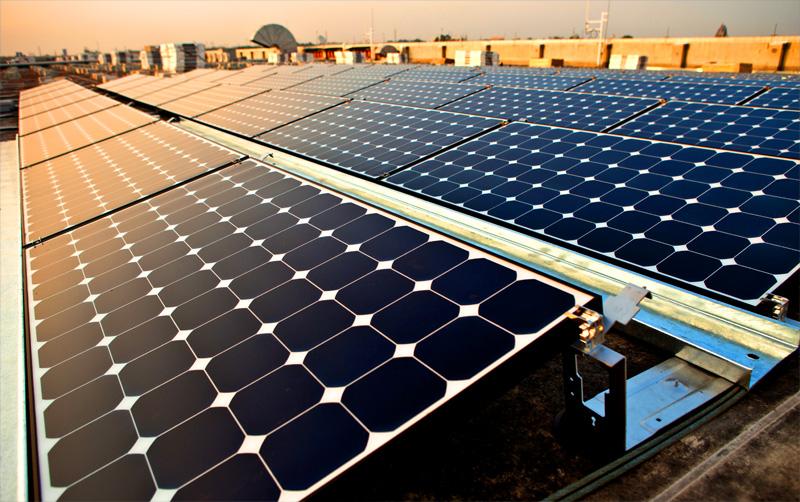
Source: Wikicommons
Looking Forward
MC: One key feature is that the PowerSwitch PLUS loan does not assume tax credits will be used to pay down the principal– can you talk about why that is and how that might benefit both the customer and the wider industry?
ET: The benefits are two-fold. For customers, it simplifies the process of combining solar with other home energy upgrades, and it allows them to use the tax credit for whatever they want instead of paying down their loan principal. For the wider industry, it helps our contractor partners get ahead of the coming stepdown for the federal tax credit that begins next year. By giving our contractors more options, including an option that isn’t structured around the tax credit, they are better positioned for long-term success.
MC: What’s Mosaic’s strategy for finding customers in the market for solar financing and engaging them with your offerings? What’s that sales cycle look like?
ET: Mosaic is a B2B2C company. While we ultimately provide loans to homeowners, our primary customers are actually solar contractors. So, in addition to making PowerSwitch 6 loans more appealing to homeowners for all the reasons we’ve discussed, we’ve also made them more appealing to contractors in specific ways.
For example, daily funding will cut the time for a contractor to receive funding to one to two business days, and earlier disbursements and simpler milestones will also improve contractor cashflow. Ultimately, our strategy for engaging our partners is to give them the best possible tools to build their business.
MC: The various products you offer are clearly a sign of the rapidly evolving solar industry and responding to those changes. DO you have any predictions for how the industry will continue to evolve and what that might mean for the solar financing market?
ET: We think that homeowners will continue to ask for more than just solar when it comes to home energy upgrades, whether that’s new technologies like batteries and smart home devices or established efficiency solutions like insulation and windows. Thus, we expect to see lines continue to blur between solar, storage, and other home energy efficiency loans, and we also expect customers to demand more ease of use, flexibility, and accessibility from financing products.
To keep up with these changes, solar financing providers need a commitment to innovation as well as strong backing from financial markets, and Mosaic has proven itself to be an industry leader on both accounts.

Photo Source: Prosperous America
For more information on Mosaic, visit their website for regular updates.
About the author: Matt Chester is an energy analyst in Orlando, studied engineering and science & technology policy at the University of Virginia, and operates the Chester Energy and Policy blog and website to share news, insights, and advice in the fields of energy policy, energy technology, and more. For more quick hits in addition to posts on this blog, follow him on Twitter @ChesterEnergy.
The post Mosaic’s PowerSwitch 6 Residential Home Solar Loans: An Interview with GM of Solar, Erin Talbot appeared first on Solar Tribune.
]]>The post Bloomberg Pledges $500 Million to Close All Coal Plants appeared first on Solar Tribune.
]]>
Bloomberg’s pledge
Michael Bloomberg, the billionaire former politician, announced in early June a pledge of $500 million towards a new campaign, Beyond Carbon, designed to help close all coal-fired power plants in the U.S. by 2030, as well as stunt the growth of natural gas, thus helping the U.S. move towards a fully renewable energy sector.
The campaign focuses exclusively on local and state politics, bypassing the federal government completely, which Bloomberg says can’t seem to find the gas pedal around climate-progressive policies, thanks to the country’s current president.
When he announced the donation, Bloomberg himself said:
“We’re in a race against time with climate change, and yet there is virtually no hope of bold federal action on this issue for at least another two years. Mother Nature is not waiting on our political calendar, and neither can we.”
The funding will support environmental groups’ lobbying efforts in state legislatures, city councils, and utility commissions as well as efforts to elect lawmakers who look favorably on clean energy.
No matter the individual or amount, Bloomberg’s goal is a tall order. As of 2017, there are still 359 coal plants operating in the U.S. and coal still accounts for about 30% of all electricity generation in the country. In some states, that number falls closer to 100%. Closing every coal plant in the U.S. in just over 10 years is a huge endeavor.
With a sea change this large, $500 million is just a drop in a very large bucket. However, by donating to pro-clean energy lobbying and campaigning, Bloomberg is funding the individuals and organizations that he hopes will move the U.S. forward on climate change policy. In essence, he’s buying the fishing pole and hoping others will catch the fish.
States moving forward on clean energy goals
If Bloomberg wants to pass serious changes to climate policy, his focus on state and local politics is certainly in the right place. The fact that a billionaire former-politician feels he must circumnavigate Washington, DC to instigate climate changes shouldn’t come as a surprise.
Since the 2016 election, President Trump has recalled, weakened, or stalled many of President Obama’s environmental policies, including the Clean Power Plan, membership in the Paris Climate Agreement, vehicle emissions standards, and dozens of other emissions and climate-related policies. And with a Congress that is increasingly unwilling to work with the other side, the idea of any climate-positive legislation passing any time soon seems almost unthinkable.
In the absence of any nationwide climate regulations, individual states and cities have taken it upon themselves to help reduce carbon emissions, almost exclusively through clean energy goals.
Seven states and territories – Hawaii, California, Puerto Rico, Washington DC, Washington, Nevada, and New Mexico – have already passed 100% clean or renewable energy goals. The Sierra Club also lists over 90 cities and 10 counties that have pledged 100% goals, with six cities already reaching 100% clean energy.
Hawaii, which suffers from some of the highest electricity rates in the U.S., was the first state to pledge 100% renewable energy back in 2015. At the time, the island state was already sourcing 33% of its electricity from renewable sources, so it is already well on its way to meeting this goal by 2045, the mandated year.
In 2018, California – the world’s fifth largest economy – pledged 60% renewable by 2030 and 100% clean energy by 2050. Mandating clean energy, as opposed to renewable energy exclusively, allows some flexibility for utilities to choose from a wider range of energy sources, most importantly nuclear.
Why are climate and clean energy policies so hard to pass?
Regardless of the politicization of climate change, the truth is that coal and natural gas still remain an intrinsic part of the utility industry and – even more importantly – a source of employment for the thousands of Americans who work in coal mines and coal-fired power plants, often in small towns with limited other economic opportunities.
While electricity generation from coal has fallen over 30% since 2009, it still makes up 27% of the nation’s electricity generation. As noted in the following graph, in coal-rich areas like Montana and West Virginia that number pushes close to 100%. And as the U.S. weens itself off of fossil fuels, employment in the coal industry is also falling fast. Since 2009 employment in the coal industry has dropped 40%, from 86,000 to just 50,000 today.
While states like California and Hawaii have embraced clean energy whole-heartedly, that’s certainly not the sentiment everywhere, especially in states with large coal deposits like Wyoming, Montana, West Virginia, and Kentucky.
The importance of coal to both these states’ economies as well as the local population can’t be ignored. To those in the coal industry, replacing coal with renewables is a potential threat to their livelihood, and some states have worked to protect the coal industry from change.
In early 2019, Wyoming passed S.F. 159, a new law that requires any utility looking to shut down a coal-fired power plant to make a ‘good faith effort’ to find a buyer before closing. Once (and if) sold, the new owners aren’t allowed to close the plant early. While some heralded the law as a positive step to protect local industry, others saw it as well-intentioned, but misguided.
Any large-scale move towards renewable energy should take the welfare of these workers into account. When New Mexico passed its 100% clean energy goal in March 2019, it won accolades from the energy industry for its thoughtful, comprehensive plan for the welfare and training of plant and mine workers affected by the clean energy transition. In total, the plan set aside more than $70 million for plant decommissioning, severance, worker training, apprenticeships, and programs to help communities build new economic options.
Closing coal plants shouldn’t be taken lightly; it affects both individual households and the local economy. However, with thoughtful legislation this painful process can actually turn into a positive change, as market forces push coal out.
As the federal government continues to squabble, state and local governments are taking up the challenge. If the U.S. is to make large-scale, nationwide change, we might have to wait two more years like Bloomberg says, but it might take even longer.
Image Source: CC via Flickr
The post Bloomberg Pledges $500 Million to Close All Coal Plants appeared first on Solar Tribune.
]]>The post State of the Solar Industry Through the Lens of Solar Summit Attendees appeared first on Solar Tribune.
]]>
On May 14 and 15, hundreds of industry professionals, financiers, and other stakeholders in the solar power industry gathered in Paradise Valley, Arizona, for the 12th annual Solar Summit put on by GreenTech Media and Wood Mackenzie to do just that. Marketed as the ‘premier conference for defining the latest industry needs for installers, developers, system manufacturers, financiers and regulators,’ this gathering of hundreds of the key players across the world of solar power provides critical functions as professionals who share the goal to increase the viability, market penetration, and future possibilities of solar technology and renewable energy more widely.
Such a gathering of diverse organizations and people who share these common goals gives those in attendance the opportunity to reflect on the past year while charting out their coming year in business. With that in mind, Solar Tribune had the opportunity to chat with a few attendees to hear how the conference went for them, hear what the priorities appear to be of the industry moving forward in 2019, and learn what the top benefits of the solar conference circuit is for a few different types of industry members.
Overall Impression
Clocking in at just a day and a half, the Solar Summit included panels, general sessions, and more narrow breakout sessions. Jordan Blanchard of Live Oak Bank, a financial institution that has become a major player financing solar projects, particularly enjoyed the breakout sessions. These sessions were separated into financing and developing sessions, and he attended the financing ones. “A lot of discussion now on solar plus storage,” he noted, which was one of the aspects that made the session of prime value to him compared with the more general sessions.
The size of the 2019 Solar Summit was just a few hundred professionals, which many deemed to be an ideal size where the major players were in attendance but it wasn’t so large as to make it overwhelming. Blanchard noted that some other conferences “are so massive that it’s hard to even find people, much less set up meetings,” but that the Solar Summit’s more intimate size allowed for high-value networking.
Another key benefit of the structure of the Solar Summit is that it’s an area for thought leaders to converge, rather than just companies pushing specific products. As Chuck Ellis of SMA, a global specialist for PV technology, describes it:
“I prefer these kind of environments vs. trade shows because you typically have a different group of people that are attending. You tend to have more strategic forward-thinking representatives at these kind of conferences instead of just people trying to sell products in booths.”
Another unique selling proposition of the Solar Summit specifically is that it’s put on in conjunction with Wood Mackenzie. As Blanchard noted, “the Wood Mackenzie folks provide the data, and that is something that’s really unique to this conference…that’s the unique strength. I’m overall happy with it and planning on going again next year.”
Charting 2019 Solar Goals
The role of the Solar Summit, as well as other solar power conferences like this one, appear to play a more minor role in setting the solar industry goals as a whole, but the value of bringing all the minds together in one place is still notable.
Asked whether the conversations and education from the Solar Summit helps guide his company’s course for the next year, Ellis noted:
“I think it helps validate some of our strategy, but I don’t know that it really steers us in any one direction. Does it contribute? Absolutely. Does it validate things? Sure. But the overall strategy comes from our headquarters, not these conferences.” Blanchard shared a similar sentiment, noting of conferences as a whole that “I don’t think any of them really change the course of our business.”
That said, a few topics were brought up that were notable to those in attendance that Solar Tribune interviewed:
Energy Storage
Blanchard came into the Solar Summit eager to talk about energy storage, but had his impression confirmed that the technology is not yet ready for prime time. “But,” he noted,
“if I had heard at the conference that people thought it was ready and they were getting storage deals done then that maybe would accelerate our desire to finance solar plus storage more.”
Floating Solar
An area of excitement in the solar community for the expanded possibilities it provides when it comes to where installations can be planned is in floating solar. Teresa Barnes attended in her role with the National Renewable Energy Laboratory to discuss just this topic, noting:
“We presented an update on the general status of the field and the results of a recent NREL publication on the potential for floating PV in the United States. We had very productive conversations with different stakeholders who are interested in PV.”
NREL finds that floating solar, which is not yet highly tapped into in the United States, could eventually account for 10% of the nation’s total annual electricity generation.
U.S. Solar Policy
One topic that was at the forefront of Ellis’ mind heading into the Solar Summit was U.S. policy, such as the recent fight around solar tariffs. After talking with his peers he says he found a more or less consensus around his own ideas, which is useful for him to know moving forward. He told Solar Tribune that
“While I don’t want to get into what other people were talking about, certainly we’re going to see a short-term impact on business. It’s similar to the other tariffs that have been put into place and other obstacles that have happened in solar. The market will adjust and we’ll continue down the path we’re running. The real question I had is if it’s a long-term tariff or if we’ll reach an agreement with China and Trump will back off. I think it’s pretty relative, there seems to be such a dynamic market in this industry that there’s always something of this magnitude taking place. It’s the most dynamic industry I’ve been a part of.”
ITC Step Down
Despite noting in the preview of the conference that the Solar Summit “will cover how the ITC stepdown will impact project finance,” Blanchard notes he didn’t hear much about the topic. “No one seemed that concerned,” he relayed. Adding further,
“So maybe that will be a bigger topic next year. People will feel it, but it’s not enough to really diverge existing projects, especially because of the safe harbor rules. So it’s just not a huge topic of discussion.”
Evolution of the Industry
Another useful role these conferences play is one of a tent pole, where tracing the topics of concern, the major players, and the pending concerns from year to year is a great way to track how the industry as a whole has evolved. One example that Ellis noted was,
“the width and breadth of where solar is going is expanding pretty rapidly. You think back five to six years ago, you really just had inverters and modules and they were focused on residential, commercial, or utility-scale projects. You didn’t get into integration of grid management, you didn’t get into energy management, you didn’t get into virtual power plants or virtualization of all that stuff. Not only is the technology getting more advanced, but the strategies utilities can embrace when it comes to solar is expanding, the types of installations that are viable with storage and smart grid technology are advancing quickly, and the solar industry of tomorrow will seldom look the same as it did yesterday.”
Solar Conferences More Widely
As a whole, the real value of the Solar Summit and similar conferences is the networking and community-building. The information is important, but innovation is moving at a pace that’s comfortable enough for organizations to keep up on their own without hearing anything new or game-changing at these conferences.
When asked about the value of these conferences, Blanchard described that it’s the law of diminishing returns:
“In 2016, when we first got into the industry, every conference was hugely helpful on the learning side and on the networking side. But every year that goes by, we’re far more knowledgeable about the industry and we’ve learned what we need to learn. And so, the learning opportunity diminishes, but the networking value is always increasing.”
Ellis agreed that networking is the true value, and while he enjoys hearing panels and speakers he says,
“I think the real value for me is being able to conduct with my peer group and get an understanding of where they see the industry going, what challenges they may be facing, and areas in which we can collaborate.”
In a similar way, organizations like the National Renewable Energy Laboratory and other research-based organizations find these conferences as a key strategy to spreading their findings and analyses. Barnes said they attend solar conferences “to educate the U.S. solar community on our work and engage with stakeholders working in the downstream industry.”
About the author: Matt Chester is an energy analyst in Washington DC, studied engineering and science & technology policy at the University of Virginia, and operates Chester Energy and Policy to share news, insights, and advice in the fields of energy policy, energy technology, and more. For more quick hits in addition to posts on this blog, follow him on Twitter @ChesterEnergy.
The post State of the Solar Industry Through the Lens of Solar Summit Attendees appeared first on Solar Tribune.
]]>The post Renewables Exceed Coal for the First Time Ever appeared first on Solar Tribune.
]]>
While the flip is partially brought on by the seasonality of hydro and coal generation, it shows that we’re in the beginning stages of a major change in the electricity industry, as the U.S. Energy Information Administration (EIA) expects utilities to continue replacing coal plants with solar and natural gas plants for the next couple decades.
Renewable energy beat coal in April and May
According to estimates from the EIA, nationwide electricity generation from renewable sources –driven mainly by solar, wind, and hydropower – is set to exceed coal generation twice this year, first in April then in May, as noted in the above graph.
In April, the EIA estimates the U.S. generated 2,390 MWh per day of renewable energy and only 1,884 MWh of electricity from coal – about 22% less than renewables. The gap narrows in May, with renewable energy just barely squeaking by with 2,278 MWh – a scant 8 MWh more than May’s coal generation.
You’ll also notice in the graph that renewable generation is expected to top coal again from March to May next year, peaking in April when renewables should outperform coal by 40%.
Just two decades ago, when coal was the top dog among electricity generation, these numbers were probably unthinkable to utilities or the coal industry. In the entire month of May 2001, for example, the US generated 29,000 GWh of electricity from renewable sources, equal to just 19% of coal’s total energy production.
This month’s momentous change is largely brought on by three main causes: 1) the utility industry continuing a long-term move away from coal-fired generation, in favor of cheaper natural gas, solar, and wind, 2) a steady increase in solar and wind generation, and, as IEEFA pointed out in a recent article on the topic, 3) seasonal changes in electricity generation, since hydropower bumps up from March to May each year during spring runoff and coal generation decreases as utilities prepare the plants for the summer season.
While the flip was certainly brief, it’s certainly a sign of the times, as coal becomes increasingly unprofitable and more utilities continue to turn to solar and energy storage. Financial services firm, Lazard, publishes annual estimates of the lifecycle costs of both renewable and conventional fuel sources. In their 2018 study, the firm found that on-shore wind and solar energy are the cheapest forms of electricity, at $29/MWh and $36/MWh respectively, with natural gas close behind at $41/MWh. Coal, on the other hand, comes in at $60/MWh, with nuclear, residential solar, and gas peaking plants coming in the highest.
Renewables set to permanently top coal by 2031
While the inversions above were brief, lasting only a couple months, the EIA expects renewable generation to permanently overtake coal by 2031, as noted in the long-term forecast above. Renewable energy should grow from just 666 million MWh in 2018, to 980 million MWh by 2031, before continuing on to 1,400 MWh/year by 2050. These increases are brought on mainly by steady growth in solar energy specifically, driven by tax credits in the near term and continued falling prices in the long term.
Back here in 2019, we’re quite literally watching the bottom fall out of the coal industry, as coal use has been in rapid decline since the mid-2000s. As utilities continue retiring aging or surplus plants, experts expect coal use to continue its sharp decline until the early 2020s, at which point it will begin to decrease more gradually.
While renewables have certainly played a hand in coal’s ongoing destruction, the true power here is natural gas, as coal simply can’t beat natural gas generation’s persistently low price and cleaner emissions. Natural gas permanently overtook coal as the dominant fuel source in 2018 and the EIA expects natural gas to continue reigning for the foreseeable future, growing in parallel to renewables and at a very similar rate.
Renewable Generation Varies by State
At this time, renewable energy generation varies state to state, with solar and wind concentrated in areas with high electricity rates, suitable locations (either strong wind or sun), and policies that encourage renewable adoption.
The chart below compares each state’s electricity production from coal and renewables in February 2019. You’ll see that renewables actually outperformed coal in 16 states across the US, from California and Oregon in the west, to New York, New Jersey, and Connecticut in the east. Even a couple states in the south and mid-west, namely Oklahoma and Mississippi, produced more electricity from renewables than coal.
February is typically a time when coal plants aren’t in peak season, as utilities wane down production and prepare for the summer peak. As such, summer generation figures will likely be very different in some states. This comparison also leaves out natural gas generation, which is the single biggest replacement for coal-fired electricity. However, the chart does show that renewable energy, even without hydroelectricity, is already a large part of our existing electricity industry.
As solar installation costs continue to fall, the EIA expects solar alone to make up 15% of all electricity production by 2050, with the fastest growth in the eastern half of the US, as utilities construct large-scale solar installations.
Solar and renewable energy advocates will rejoice at this recent history-making energy news, while coal proponents will likely wave it off as a blip on the radar. However, with utilities continuing to rapidly retire coal plants in favor of cheaper solar and natural gas, we’re well into the beginning stages of a sea change in the energy industry.
Cover photo source: Flickr
The post Renewables Exceed Coal for the First Time Ever appeared first on Solar Tribune.
]]>The post Solar Power Keeps Pounding with Panels Installed on Bank of America Stadium appeared first on Solar Tribune.
]]>When the National Football League joined the Green Sports Alliance in 2018, it did so with the intent to support and grow sustainability initiatives across the whole league. The Carolina Panthers jumped at the opportunity right away, and with POWERHOME Solar, one of the nation’s fastest growing solar companies, located in their backyard, solar energy was the obvious place to start.
In March 2019, POWERHOME Solar began the process of installing solar panels on Bank of America Stadium to feed into the venue’s renewable energy goals and join the ranks of other ‘green’ stadiums across the league.
I had the pleasure of chatting with POWERHOME Solar about this exciting partnership and their role in bringing the Panthers into the clean energy mix.
POWERHOME Solar Background
Matt Chester: Can you give a little background on POWERHOME Solar as a company? When was it formed, how big has it grown, and what’s the guiding mission?
POWERHOME Solar: Jayson Waller is a serial entrepreneur and has successfully created multiple businesses, including ISI Alarms NC Inc. and Power Home Technologies (PHT). ISI earned $12 million in sales annually in less than eight years while PHT achieved $30 million sales annually in just three years.
Jayson launched his latest venture, POWERHOME Solar, in 2015. He is the founder and CEO. The company eclipsed $100 million in sales in 2018 and has grown to service customers in seven states with nearly 700 employees. POWERHOME is currently ranked as the number 12 residential solar contractor in the nation according to Solar Power World.
The company’s goal is to help customers achieve energy independence by selling renewable energy at prices below utility rates.
Bank of America Partnership
MC: Will there be any kind of educational resources for fans attending the games to learn about solar panels, their benefits, and how to get started on installations at their home?
PS: POWERHOME Solar has activation teams in place outside of the stadium at each home game to help educate fans about solar energy benefits and generate sales leads. Additionally, POWERHOME signage can be found within the stadium.
MC: How did the partnership with Bank of America Stadium come together?
PS: Jayson also oversees POWERHOME Solar’s partnerships with professional sports teams, including the Carolina Panthers, Cleveland Browns, Detroit Lions, and Pittsburgh Steelers, as well as with Duke University. The partnerships help each entity reduce dependence on grid energy and decrease their carbon footprints.
These strategic partnerships also help raise consumer awareness about the features and benefits of solar energy, creating a ripple effect for potential customers throughout North Carolina. POWERHOME is based in the Charlotte, North Carolina area and is a short drive to Bank of America Stadium. It made sense to see if we could work with the team closest to our backyard.
As a part of the deal, we also shot a commercial where the team’s Pro Bowl Center, Ryan Kalil (who retired at the end of the 2018 season), served as director. You can see the 90-second cut of the commercial on YouTube, and we also published a behind-the-scenes article about the shoot.
Panel Specifics
MC: Can you tell me more about the panels installed? And how long did installation take?
PS: Our contracts with stadiums don’t allow for the disclosure of detailed information, but POWERHOME installs monocrystalline silicon solar panels from Silfab, based in Bellingham, Washington. The panels used have a power production warranty of 30 years, meaning that the panel provider will guarantee the panels will function at 80% of the original capacity at the end of 30 years. A POWERHOME Solar panel will generate about 36 kilowatthours per month.
The Bank of America installation took four days to complete.
MC: What are some unique aspects of Bank of America Stadium that had to be taken into account when designing this solar system?
PS: We placed the solar panels on the top of entrance archways, which is a different challenge from typical commercial buildings that have flat roofs. But our team was up for the challenge of installing panels on this curved surface, and they look great!
Solar Trends
MC: Bank of America is the third NFL facility to use POWERHOME– can you tell me about the other two? What makes sports facilities primed to harness the benefits of solar power?
PS: We also installed solar panels for the Cleveland Browns at FirstEnergy Stadium and for the Detroit Lions on the parking garage at Ford Field, as well as the team training facility in Allen Park, Michigan.
Sports franchises in general have high energy costs for their stadiums, and it only makes sense for those franchises to try and offset some of their power bills with clean, renewable energy. On top of that, these franchises can own a portion of their power for the long haul. These teams’ responsiveness to hearing and heeding the benefits of clean energy are a benefit to all.
MC: North Carolina has become a national leader when it comes to solar generation– what about the state has made it embrace solar so thoroughly? How do Bank of America Stadium and the Carolina Panthers fit into that?
PS: North Carolina is a great state for solar because of the abundant sunshine available in the southeastern U.S. and state-based legislation that has embraced solar. And with costs to install solar having gone down more than 70% since 2010, homeowners and business owners have increasingly become aware of the benefits of going solar at their homes and places of business. When the financials behind going solar become as apparent as the value that using clean energy brings, it becomes a no-brainer for customers on multiple levels.
For more information on POWERHOME Solar, visit their website.
About the author: Matt Chester is an energy analyst in Washington DC, studied engineering and science & technology policy at the University of Virginia, and operates the Chester Energy and Policy blog and website to share news, insights, and advice in the fields of energy policy, energy technology, and more. For more quick hits in addition to posts on this blog, follow him on Twitter @ChesterEnergy.
The post Solar Power Keeps Pounding with Panels Installed on Bank of America Stadium appeared first on Solar Tribune.
]]>The post What Will 100% Renewable Energy Look Like? appeared first on Solar Tribune.
]]>When Representative Alexandria Ocasio-Cortez and Senator Ed Markey introduced the Green New Deal, it was met with some heavy eye-rolling by certain individuals. Many saw it more as political stunt than a true path to dealing with the underlying causes of climate change. For many, the most attention-grabbing section was certainly its goal of shifting to a 100% carbon free economy after a mere decade.
While the plan is grandiose and gives a very short timetable, the general goal isn’t far-fetched. Numerous states, cities, and even utilities have committed to 100% renewable goals in the last few years, and they’re becoming more and more common.
In 2017, Hawaii became the first state to ratify a goal of 100% renewable electricity, by 2045. In December 2018, Xcel Energy – which provides electricity in 8 states in the mountain west – became the first major utility to commit to 100% carbon-free electricity by 2050. In late 2018, California also signed into law a goal of 100% clean energy –not renewable energy – by 2045. (We’ll get into the differences between clean and renewable energy in the next section.)
What does 100% renewable look like, and is it really a viable option on a large scale?
What’s Your Goal? Renewable Energy vs Clean Energy vs Carbon Free Economy
The Green New Deal wants a carbon-free economy. Hawaii’s pledged 100% renewables. California’s pledged 100% clean energy. They might sound like synonyms, but there’s major differences among them.
First, a 100% renewable energy goal is just that. All electricity is sourced via renewable methods, typically solar, wind, and possibly water like tidal and wave energy or small hydro plants.
A 100% clean energy goal, on the other hand, broadens the scope of allowable technology. Any electricity generation that produces zero carbon is on the table, including solar and wind, but also nuclear power and fossil fuel plants with carbon capture and storage (CSS), a system in which utilities essentially capture all the carbon emissions and bury them underground so they don’t enter the atmosphere. Because the technologies allowed are more flexible, clean energy goals should be easier to meet than 100% renewable goals.
Lastly, the Green New Deal posits a 100% carbon free economy. Along with carbon-free electricity, like in the goals above, the Green New Deal also seeks to decarbonize the transportation and industrial sectors as well. Unlike the previous goals that only involve the electric sector, this far-reaching goal would require fundamental changes for every sector and every market – a much larger project.
How Does 100% Renewable Work?
When we think about going 100% renewable, most of us probably picture fields of solar panels and wind turbines on sunny, windy days. That’s certainly part of the future, but by no means the whole picture. In reality, moving to 100% renewable requires a balance of three key actions: energy use reduction, renewable energy, and energy storage.
Reducing energy use
The first step to going 100% renewable is simply cutting out waste. There are many ways to decrease energy use. The Green New Deal includes legislation to create more stringent energy efficiency standards for buildings. The state of Hawaii already requires homes to include solar hot water heaters to pre-heat water using the sun’s abundant heat. By dropping energy needs as low as possible, you’re able to build less infrastructure, and there’s less wear-and-tear, leading to lower long-term costs.
Adding renewable energy sources
Renewable energy technology is, of course, key to building a 100% renewable electricity industry. Utilities can use utility-scale and rooftop photovoltaic solar, concentrated solar power (CSP), on- and offshore wind turbines, tidal/wave energy, and geothermal to meet energy needs.
Different renewable sources produce power at different times, a challenge known as intermittency. Solar panels, of course, produce electricity during the day. Land-based wind turbines typically produce more electricity during daylight hours. Off-shore wind produces more at night. Diversifying the technology portfolio and balancing their electricity generation is key.
Adding energy storage
Energy storage is seen as the solution to renewable energy’s intermittency problem. Lithium-ion batteries are hot commodities right now and utilities use massive banks for large-scale storage projects, but they aren’t the only options available. There’s a handful of other cheaper battery technologies as well, and utilities have a few more unusual energy storage methods at their disposal as well, like compressed air in caves that’s heated to pressure (yes, this really exists!) and pumped hydro using two reservoirs and gravity-fed turbines.
Tesla’s lithium-ion batteries, known as Powerpacks for utility-scale projects, are the most well-known energy storage on the market, and the company has installed over 1 gigawatt-hour of energy storage as of fall 2018, with another GWh in the works in the next 12 months.
In 2019, Tesla was working with California utility PG&E for a Powerpack up to 1.1 GWh, over 8x larger than their current largest project, a 129 MWh system in Australia. With PG&E’s January 2019 bankruptcy though, this project is almost certainly on hold.
A Look into the Future
In 2017, a research group from Stanford published an article in the forward-thinking journal Joule which laid out potential pathways to 100% clean economies by 2050 in 139 countries. Their study focused on the technical feasibility of such a move, creating a two-step process: 1) Electrify all industries (for example, moving all vehicles to batteries and fuel cells) and 2) Transfer all electricity production from fossil fuels to a unique mix of wind, water, and solar tailored to each country.
Looking at the world’s overall electricity demand over the next few decades, the authors propose that we could meet 2050’s estimated 20.6 terawatts of electricity demand via energy reduction and electrification’s greater efficiency than combustion (for example, electric vehicles are more energy efficient than gas-powered vehicles), onshore and offshore wind, utility-scale PV solar and CSP, residential and commercial solar, and wave/tidal energy.
Hawaii’s Plan for 100% Renewable
In 2017, Hawaii passed legislation to source all electricity from renewable sources by 2045. If we want to see what going 100% renewable looks like in the real world, we can turn to them as an example.
Thanks to their remoteness and the high cost of importing fossil fuels, Hawaii suffers from the highest electricity prices in the country, which as of November 2018 is $0.34 per kWh – 2.6x higher than the national average of $0.13 per kWh.
The state leaves Hawaii’s utilities to decide the best way to achieve this goal, though the Hawaii PUC (Public Utilities Commission) has the final say on utilities’ plans and also gives guidance on what utilities should be moving towards. Like we discussed above, the commission recommends (p.6) that utilities plan for new renewable generation, energy reduction via demand response, and energy storage:
“The PSIPs [utility action plans] are to include actionable strategies and implementation plans to expeditiously retire older, less-efficient fossil generation… increase generation flexibility, and adopt new technologies such as demand response and energy storage”
In their plan approved by the PUC in July 2017, HECO – one of three privately-owned utilities on the islands (all of which are owned by Hawaiian Electric Industries) – laid out their pathway to meet the 100% renewable goal, which included 400 MW of new renewable energy resources by 2021, continued growth of residential solar (17% of HECO’s customers have installed solar, compared to just 1% for the national average), and adding energy storage to the generation mix.
Since the plan was approved, they’ve been moving forward on these goals. In mid-2018, they sought PUC approval for two Li-ion battery storage systems totaling 120 MW and entered contract negotiations for seven solar+storage installations across three islands totaling 260 MW.
How Does 100% Renewable Affect You?
You might wonder how all this affects you. Most of us just want reliable, freely-available electricity. If it’s renewably sourced, that’s certainly a plus, but not a necessity.
That mindset though is quickly retreating, as the clean energy movement and the signs of global warming continue to stir people to, if not action, then at least acceptance. According to a 2018 poll, 74% of Americans believe worldwide temperatures are rising.
On the household level, increased utility rates for customers are always a concern, as utilities seek to update existing generation plants and build new plants, and create and implement new programs. In 2017, when utility HECO sought approval from Hawaii’s PUC for its proposed plan to 100% renewability, the PUC was worried it could increase electricity rates due to near-term capital investments and financial commitments.
The real change though, especially moving to a 100% carbon free economy, is that each business and homeowner will have to engage more deeply with their energy use. Demand response, rooftop solar, and EVs all require greater involvement from customers. Transferring to 100% clean energy isn’t a one-and-done process. It won’t be immediate, and it’ll likely take much longer than a decade. It’s a slow progression of change, brought on one project at a time.
And while electricity in the future might need a more hands-on, mindful approach than we’re used to, what we’ll get out of it – namely a cleaner, more efficient electric grid and economy – is something we’ll all benefit from down the line.
Image Source: CC license via Wikimedia
The post What Will 100% Renewable Energy Look Like? appeared first on Solar Tribune.
]]>The post What is the Green New Deal and What Could it Mean for Solar Energy? appeared first on Solar Tribune.
]]>
The backlash against the New Deal among conservatives and corporate interests has been continuous. Nevertheless, the sterling reputation of the New Deal remains largely intact. Aware of this fact, environmentalist groups and progressive insurgents in Congress have now adapted the term to promote a fundamental restructuring of the U.S. economy.
The ‘Green New Deal’ is the talk of the town in Washington, D.C.. If it ever leads to actual legislation, it could dramatically transform the prospects for solar energy. The future of solar could be meteoric if the backers of the Green New Deal are successful in their campaign for change.
The Green New Deal Explained
Architects of the Green New Deal propose substantial public investments in renewable energy, energy efficiency, clean transportation, green jobs and a modernized infrastructure. They are calling for a 100-percent conversion to renewable energy sometime within the next 10-30 years.
As justification for such an ambitious plan, they point to an alarming report issued in October 2018 by the Intergovernmental Panel on Climate Change (IPCC). Scientists with the organization give humanity only about a decade to cut carbon emissions by 45 percent to stave off a climate catastrophe.
In the spirit of the original New Deal, they also assert that a Green New Deal is necessary to revive the sluggish and stagnant U.S. economy. They claim investments in renewable energy and decarbonization will eventually create tens of millions of good paying jobs, many more than will be lost when fossil fuels become extinct.
With support from advocacy groups like the Sunrise Movement, progressive Congressional Democrats are openly championing the Green New Deal. Newly-elected Congresswoman Alexandria Ocasio-Cortez is taking a leading role in these efforts. As she explains:
“Our goal is to treat Climate Change like the serious, existential threat it is by drafting an ambitious solution on the scale necessary – aka a Green New Deal – to get it done.”
Ocasio-Cortez’s popularity has helped vault the Green New Deal into the spotlight. But the idea has been circulating in political circles for the past several years. It has been supported by many prominent political leaders, including former President Barack Obama and Senator Bernie Sanders.
At the grassroots level, a 2018 public opinion poll conducted by the Yale Program on Climate Change Communications found overwhelming support for a Green New Deal. Overall, 81 percent of respondents “strongly” or “somewhat” approved of the idea. This included 92 percent of Democrats, 88 percent of Independents and 64 percent of Republicans. However, in the same survey 96 percent admitted they’d heard little or no discussion about the Green New Deal before being asked about it. This suggests they were responding to the catchiness of the phrase rather than its specific policy goals.
Solar Energy in a Deep Green Economy
The poll numbers for the Green New Deal are good, but the numbers for renewable energy are even better.
A utility-industry trade group recently commissioned a poll to gauge consumer attitudes about renewables. Much to their chagrin, they found that 70 percent of the American public want 100-percent renewable energy as quickly as possible. Seventy-four percent want solar cast in the leading role in that transition—a role it is more than prepared to handle.
Solar panels currently account for about two percent of the country’s annual energy generation. But this number could be expanded dramatically, without any technological innovations or changes in building construction practices.
At the present time, the United States has approximately eight billion square meters of roof space that could support solar panel installations. If each square meter were covered with panels, the total electricity generated could replace about 40 percent of the power currently purchased from utilities.
But this likely understates the potential of rooftop solar. Changes in new home construction practices could increase available roof space significantly. In addition, many existing roofs could be remodeled for solar compatibility. Increases in solar cell efficiency could boost production even further, and such increases could be expected with a significant influx of Green New Deal R&D funding.
Utility projects currently account for about 60 percent of annual increases in U.S. solar capacity. The growth potential of such installations does not depend on available roof space, so the prospects for their expansion in a New Deal scenario would be immense. Costs for industrial-scale battery systems like the Tesla Powerpack are dropping steadily, making solar grid projects that require substantial energy storage more affordable.
And then there’s community solar and microgrids. These projects are potential entry points for renters and homeowners without adequate roof space for independent solar panels.
Community solar projects and microgrids only account for about five percent of installations at present. Consequently, their potential for growth is likely higher than the rooftop residential option. Solar initiatives that share costs and access would be all the rage during a period of rapid solar panel deployment, suitable as they are for investors with limited resources.
A large-scale conversion to renewables would likely create millions of new jobs. It would mean a massive reversal of fortune for the U.S. solar energy industry, which has lost about 80 percent of its solar panel market share to Asian competitors. The Green New Deal would be a boon to domestic solar manufacturers, whose pool of potential customers would spread from coast-to-coast.
But Can It Be Done?
The Green New Deal proposes a 100-percent conversion to renewable energy, which raises an obvious question: is such a conversion actually feasible?
The answer to this question is ‘yes,’ according to a team of European energy researchers. In a study discussed in the September 2018 edition of Renewable and Sustainable Energy Reviews, they found no technological barriers preventing a conversion to 100-percent renewable energy. They concluded that solar, wind and hydroelectric energies could provide the bulk of the power needed to make such a change possible.
According to a study co-author Brian Vad Mathiesen, from Aalborg University in Denmark:
“There are some persistent myths that 100 percent renewable systems are not possible. Our contribution deals with these myths one-by-one, using all the latest research.
But technological and political feasibility are divergent concepts. From a political standpoint, the future of the Green New Deal remains very much in doubt.
Legislators will face enormous practical, ideological and institutional obstacles as they attempt to make the Green New Deal a reality. Advocates may need more time to educate the public about the upside of the Green New Deal, before a critical mass of support can be reached. They may need significant electoral success over multiple election cycles, winning seats while openly advocating for Green New Deal policies at the local, state and federal levels. Ultimately, they will need to garner the support of economists, academics, entrepreneurs, well-heeled investors, think-tank analysts and other thought leaders. This support may come, once specific policy recommendations are made and the value of Green New Deal investments become clear.
Even beyond the dynamics of the usual left-right paradigm, which repeatedly stifles bold initiatives of all sorts, our political system often seems designed to protect the established order, regardless of the wisdom or necessity of change. The prospect of a global climate catastrophe, combined with the chronic under-performance of the U.S. economy, may be enough to disrupt politics as usual, especially if public support for a Green New Deal stays strong as further details about it emerge.
A Society on the Clock
If the Green New Deal moves from semi-utopian dream to earth-shaking reality, solar energy technology will be front-and-center during its implementation. If the lumbering and destructive fossil fuel beast is finally to be slain, it may be solar energy that strikes the fatal blow.
Those are big ‘ifs,’ and perhaps unimaginable to many in our current political reality. But if the scientists at the IPCC are right, the survival of society as we know it may be at stake.
Cover image: Common Dreams
The post What is the Green New Deal and What Could it Mean for Solar Energy? appeared first on Solar Tribune.
]]>The post LO3 Energy and eMotorWerks Combine EVs with Renewable Microgrids appeared first on Solar Tribune.
]]>Both LO3 Energy and eMotorWerks are already working with utilities and consumers in their respective fields. LO3 Energy is a Brooklyn-based startup that uses smart meters and blockchains to create energy microgrids in which homeowners and businesses can buy and sell locally-produced clean energy directly from neighbors.
LO3 uses smart meters to measure the energy production and blockchains, an online decentralized ledger originally designed for Bitcoin that uses private computers to verify transactions, to facilitate the transactions. Finally, all actual electricity is transmitted through the existing utility infrastructure.
LO3 Energy says their transaction platform, which it calls Exergy, can be used for peer-to-peer transactions, purchasing unused EV storage, and as a tool for system operators to help match electricity use and demand.
eMotorWerks is an EV charging infrastructure company that manufactures both charging equipment for EV owners as well as Juicenet, a virtual platform that allows EV owners to remotely monitor and schedule their charging at lowest-price times (at night, for example) and utilities to manage EV charging demand, if the EV owner is enrolled in a utility program.
By combining forces, the program allows EV owners to trade stored energy with a local microgrid. The companies see the project as one piece of a larger portfolio for utilities that allows customers to choose when and what type of energy they want to consume. By tapping into EV energy storage during peak demand or shifting EV charging to non-peak times, it also allows utilities to leverage participating EVs as resources to better meet energy needs.
As Lawrence Orsini, CEO of LO3 Energy, put it:
“EV charging adds another option to efficiently match local energy supply and demand, and such project’s results could open the door to more transactions among other microgrid participants and EV drivers.”
EVs Are Already an Energy Resource
As mentioned, utilities are already trying to figure out how to most intelligently incorporate EV charging into their list of resources.
While EVs now are a small drop in the large automotive bucket, experts expect that to change quickly. In their 2018 Electric Vehicle Outlook, Bloomberg estimates that as prices continue to drop, EVs will jump from just 1.1 million in 2017 to 30 million in 2030, and 60 million by 2040 – equivalent to 55% of all new car sales and 33% of all existing vehicles.
With utilities providing the fuel for all these vehicles, they’re planning for this future now. Across the U.S., utilities are testing different incentive programs and rate structures that offer EV drivers lower rates for charging at off-peak times. These rates ensure that EVs are as cost-effective as possible for customers, but also folded into utilities’ energy mix intelligently.
In August 2018, for example, two large Michigan utilities, DTE Energy and Consumers Energy, proposed a joint $20.5 million investment in EV infrastructure and a pilot program that offers incentives for EV owners who charge at night during off-peak hours, between 11PM and 6AM. It’s not just a one-way street though. Utilities are also seeing EVs as a demand response resource, wherein they can remotely or automatically turn off or delay charging during times of peak demand. Consumers Energy predicts a give-and-take relationship between EVs and utilities. As spokesperson Katelyn Carey noted:
“In addition to a lower daily rate, electric and autonomous vehicles can be equipped to choose to be interrupted during charging and save even more on the days when energy use is expected to be extremely high thereby allowing customers to receive a bill credit.”
eMotorWerks is already in the market of EVs as a demand response resource. In September 2018, it actually collected a group of 10,000 connected EVs, representing 30 megawatts of capacity, and is now participating in California’s day-ahead energy markets. In other words, eMotorWerks has created a ‘virtual’ power plant, but instead of selling electricity to utilities, eMotorWerks is actually paid when they shed demand, by remotely delaying charging for a certain number of participating EVs.
It’s all part of California’s proxy demand resource market, wherein companies are compensated for decreasing electricity demand. EV drivers are compensated based on their own flexibility and can opt out of any demand response event if they choose.
In September, Xcel Energy also chose eMotorWerks for their own EV demand response program. eMotorWerks will provide their JuiceBox Pro 40 chargers to 100 participating EV drivers as part of a two-year pilot program in Minnesota.
Xcel will own the chargers and monitor and control them with eMotorWerk’s Juicenet platform. The chargers will automatically respond to grid conditions, shedding demand during peak times.
LO3 Energy Already Working on Solar Microgrid in Brooklyn
While eMotorWerks is working with utilities to incorporate EVs as grid resources, LO3 Energy is working on peer-to-peer microgrids, wherein a homeowner can buy local, renewable energy from a neighbor next door.
LO3’s pilot project, Brooklyn Microgrid, began in 2017 and revolves around their Exergy platform and an online marketplace to allow residential consumers, businesses, energy companies, and community solar to both produce and consume locally-sourced, clean energy. LO3 Energy plans to launch a ‘simulated’ program in early 2019, before launching the real-world version.
While we use the term microgrid, in reality LO3 Energy’s marketplace is a ‘virtual’ microgrid. All electricity is still transmitted via the local utility’s existing grid and participants must still pay the utility for upkeep of the grid.
While both companies have created and are using vastly different platforms, with one focused on EV chargers and the other on microgrids transactions, they’re actually working towards similar goals. Both see a near-future in which electricity generation and storage is distributed across households and businesses, and an energy industry where we can intelligently use EVs and renewable energy to meet our energy needs.
Image Source: CC license via Flickr
The post LO3 Energy and eMotorWerks Combine EVs with Renewable Microgrids appeared first on Solar Tribune.
]]>


